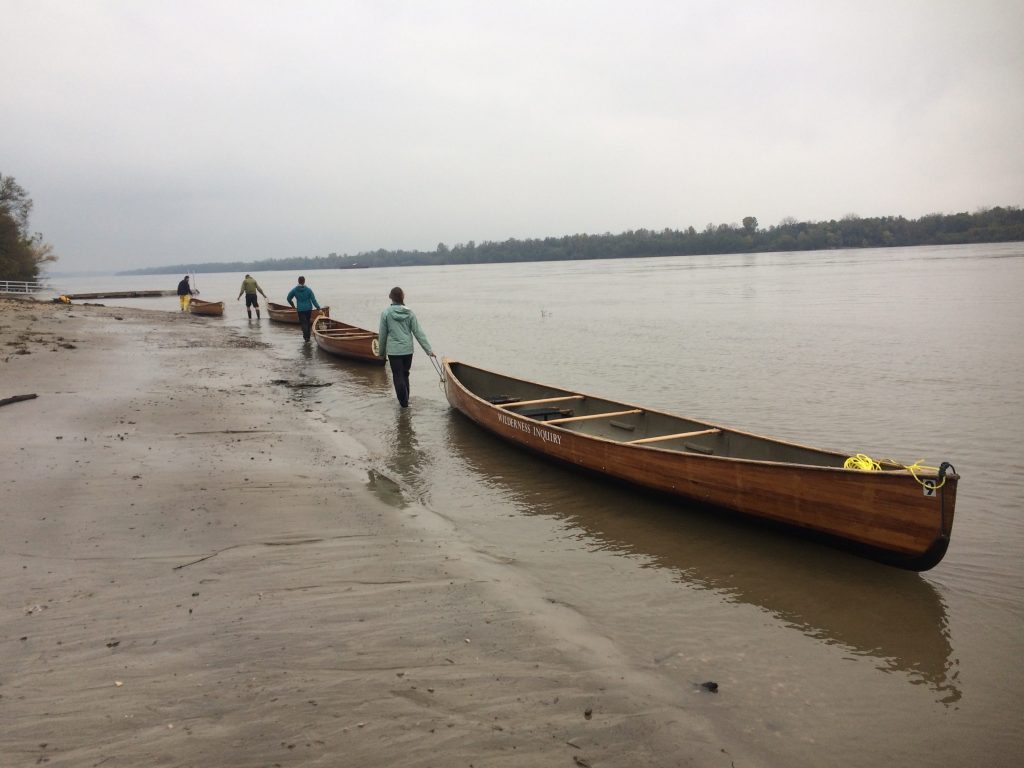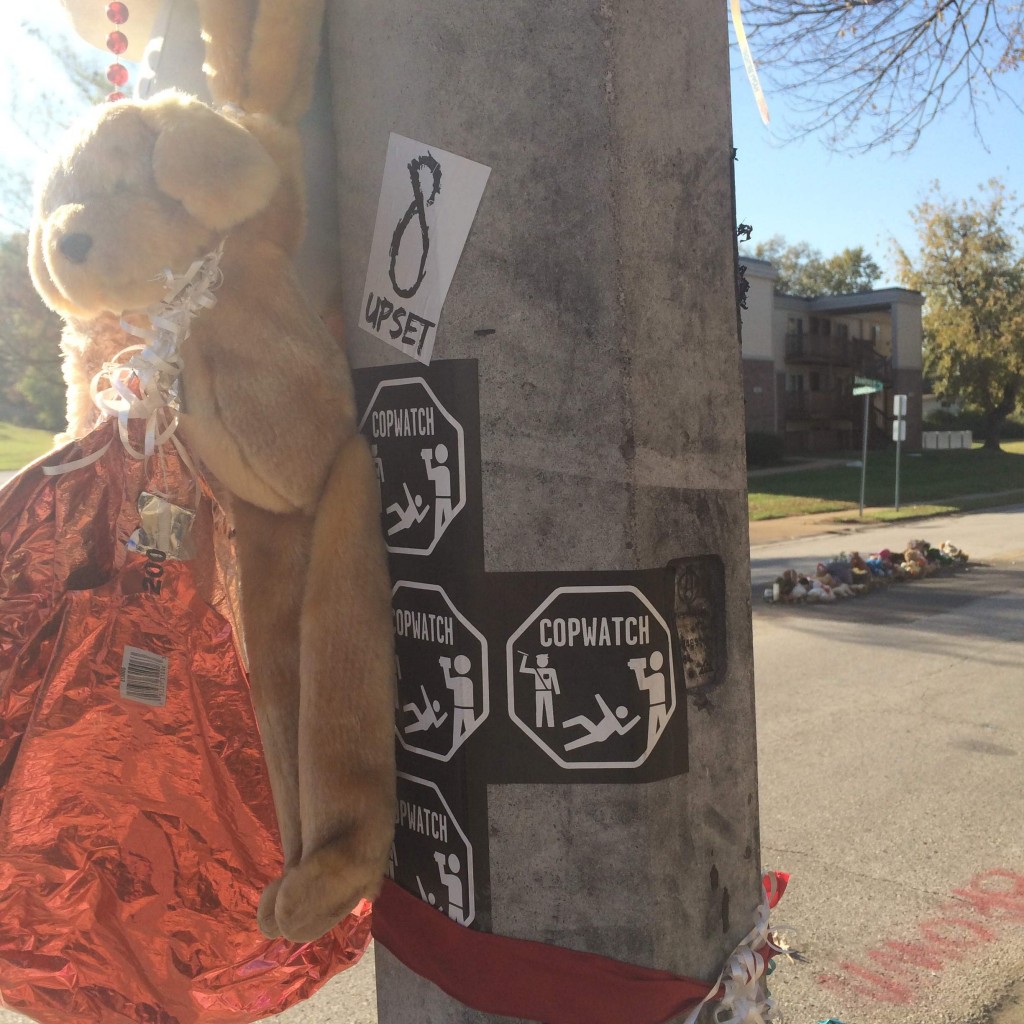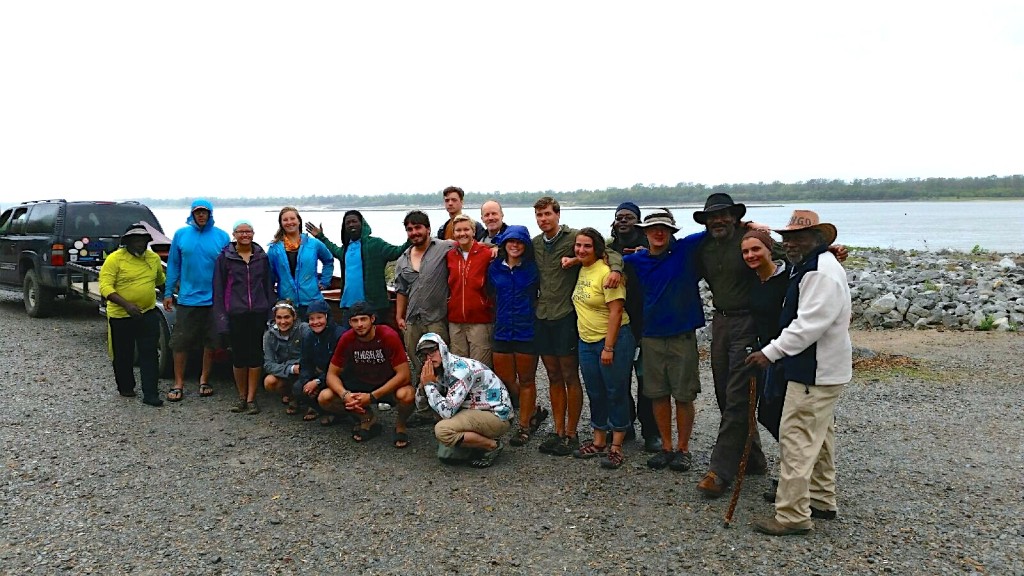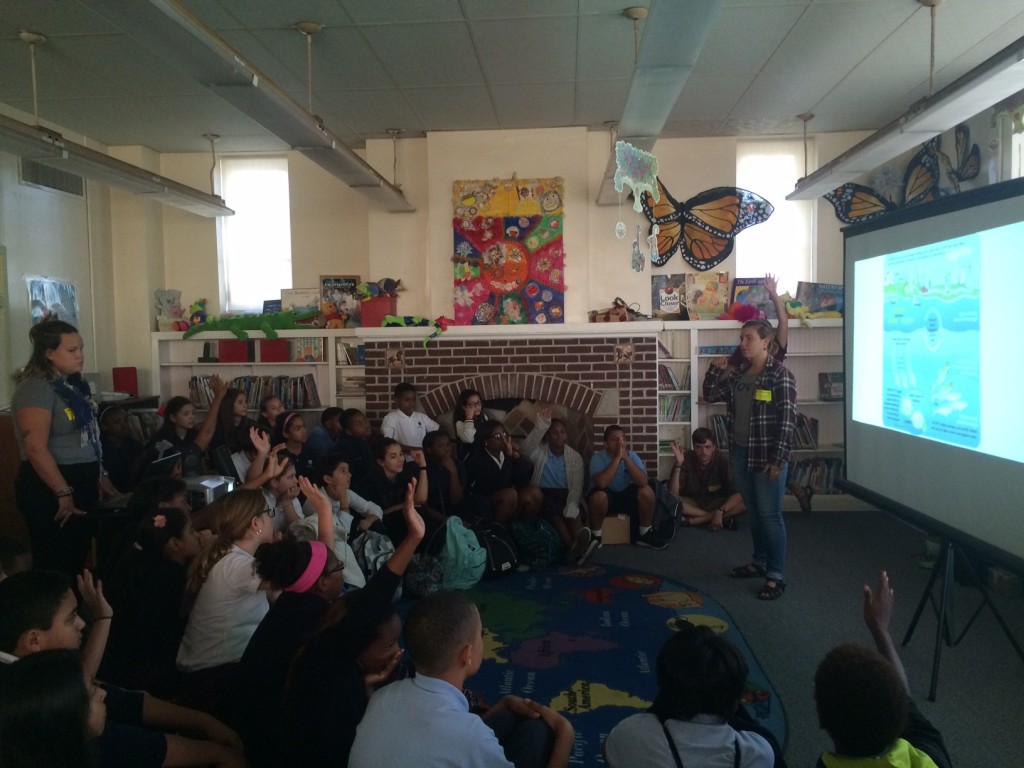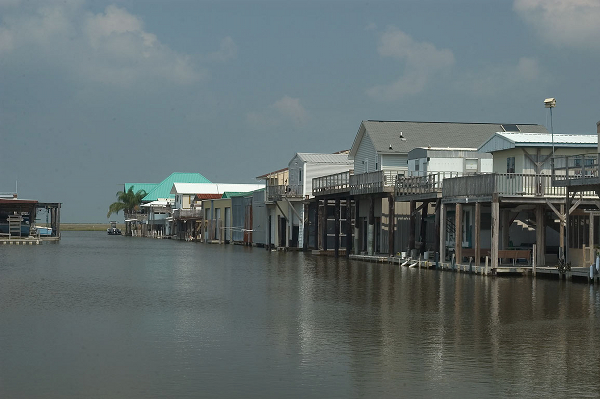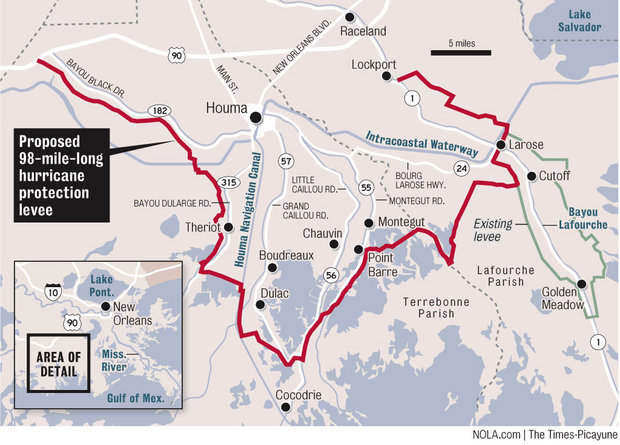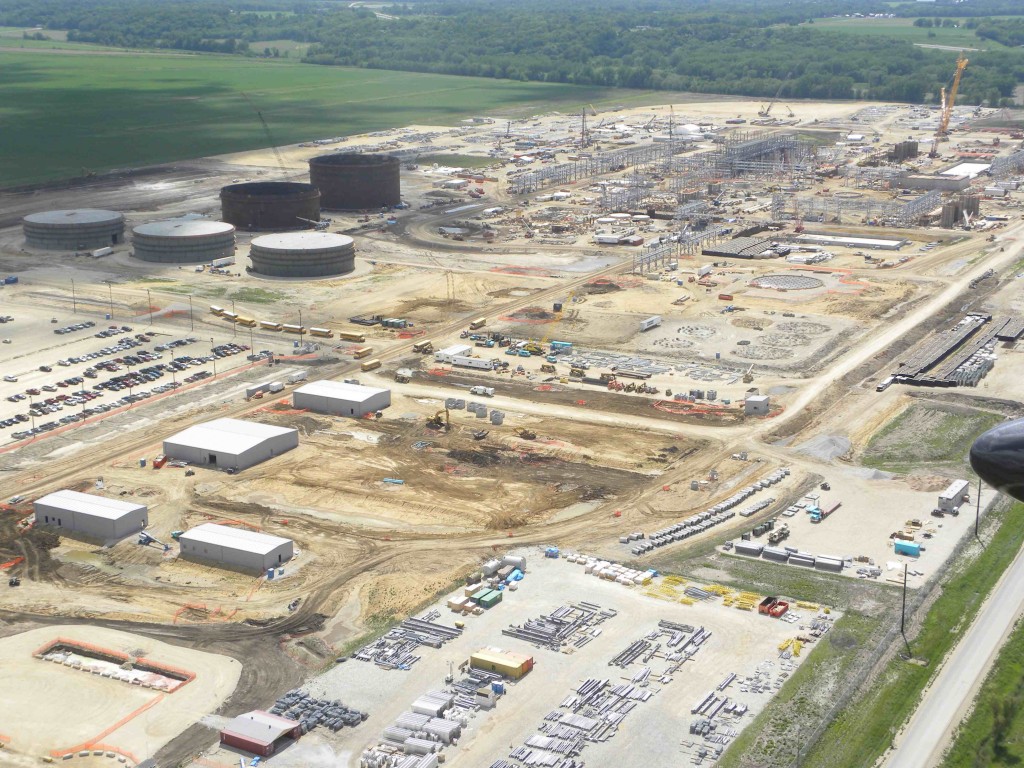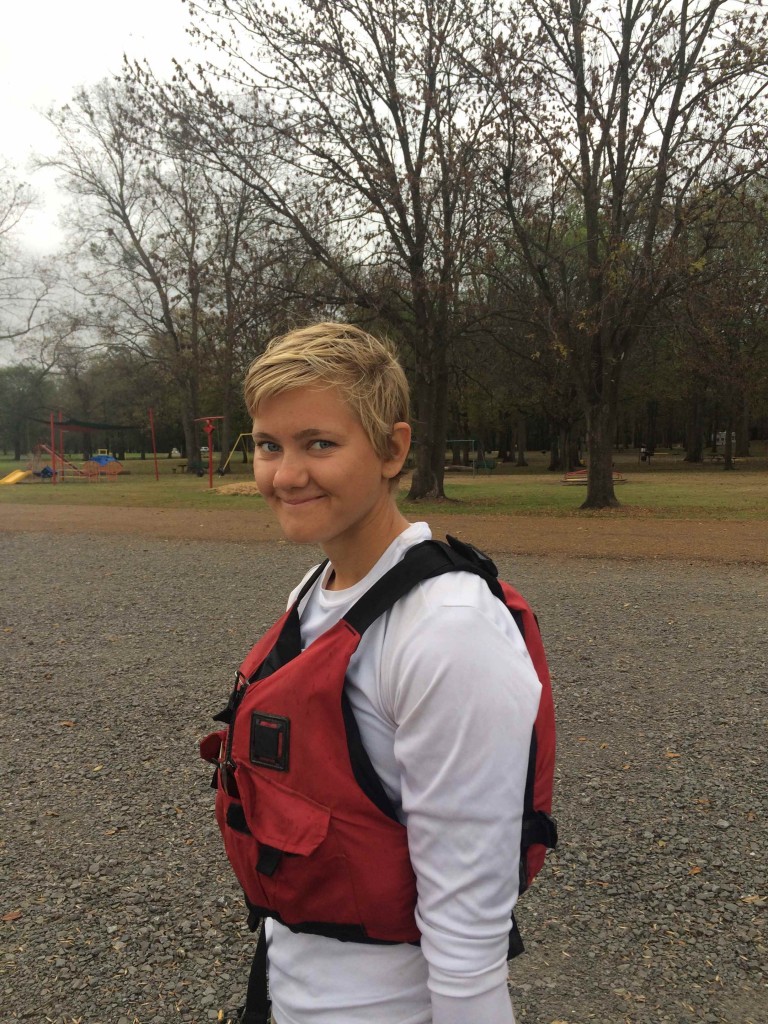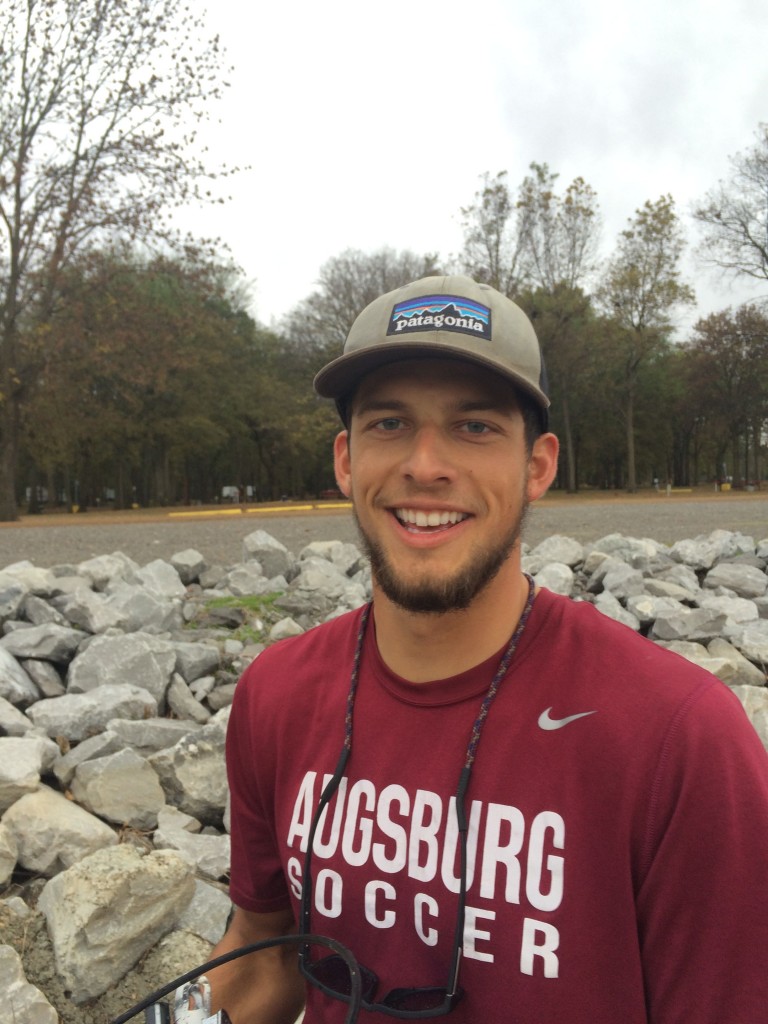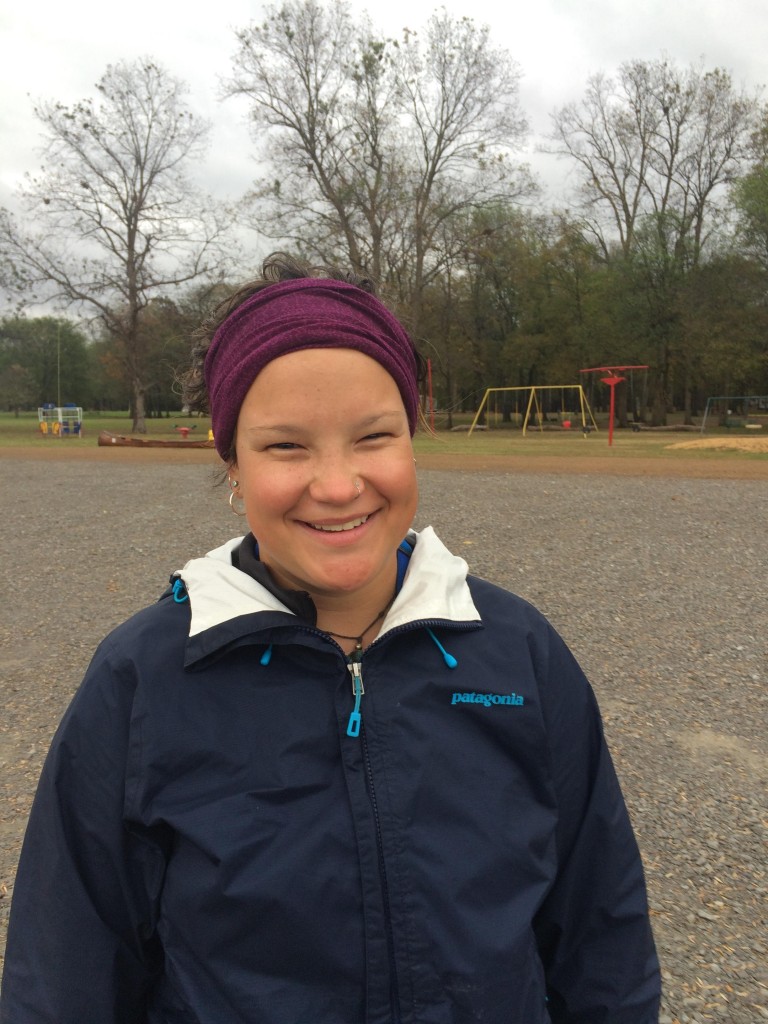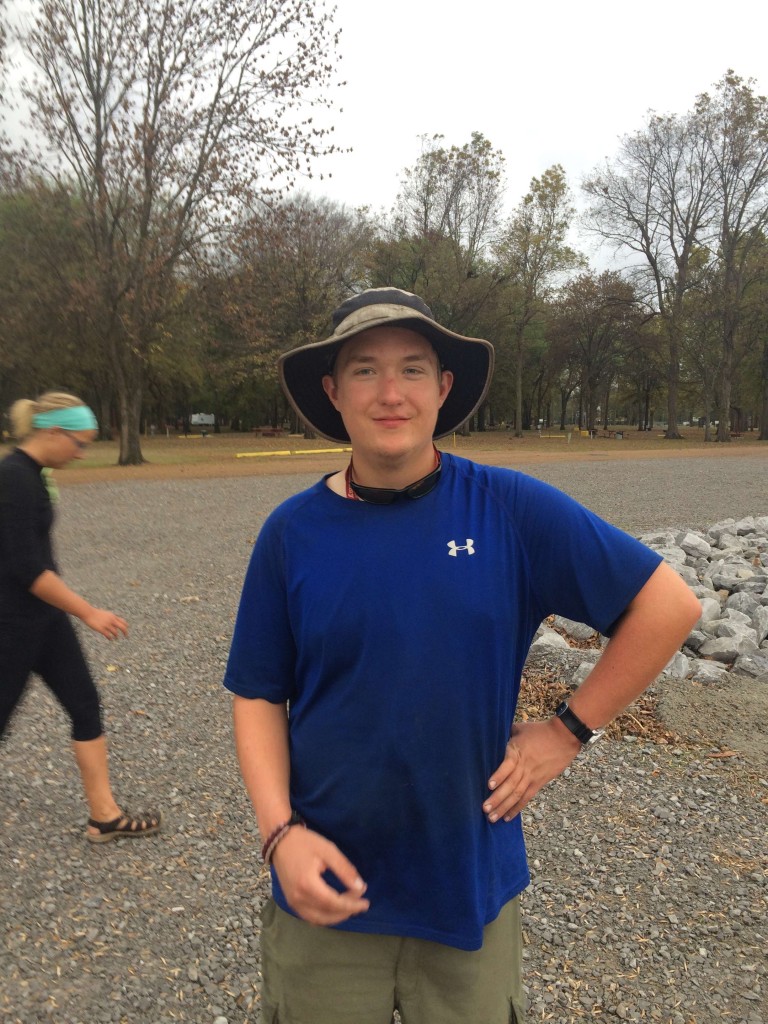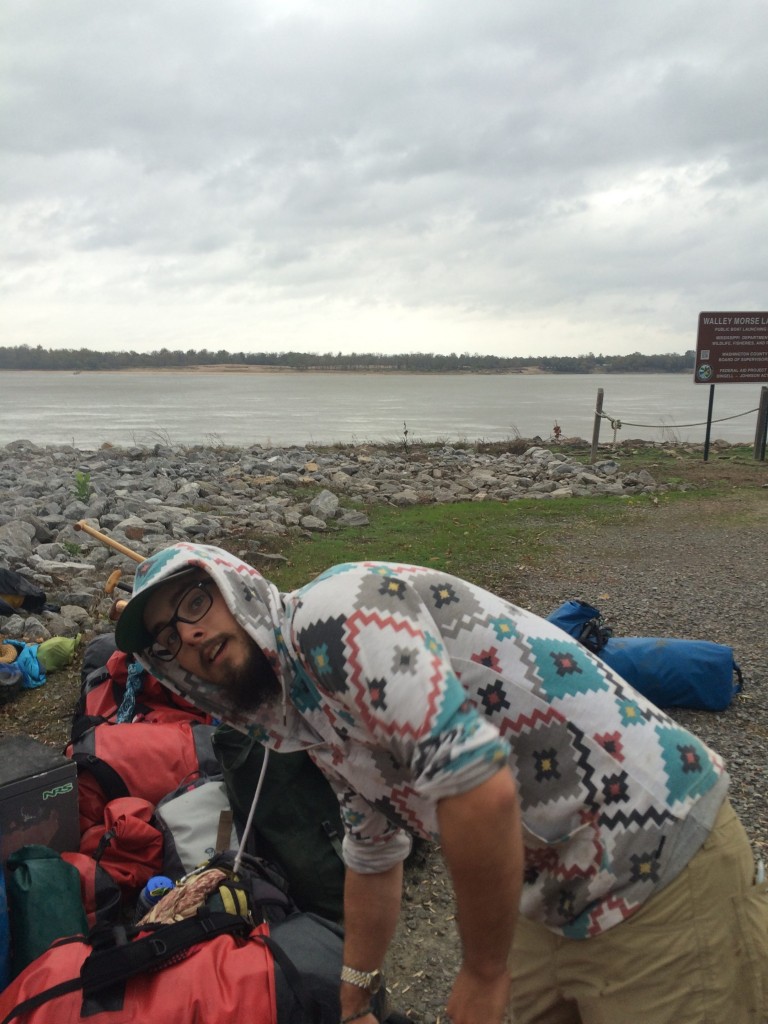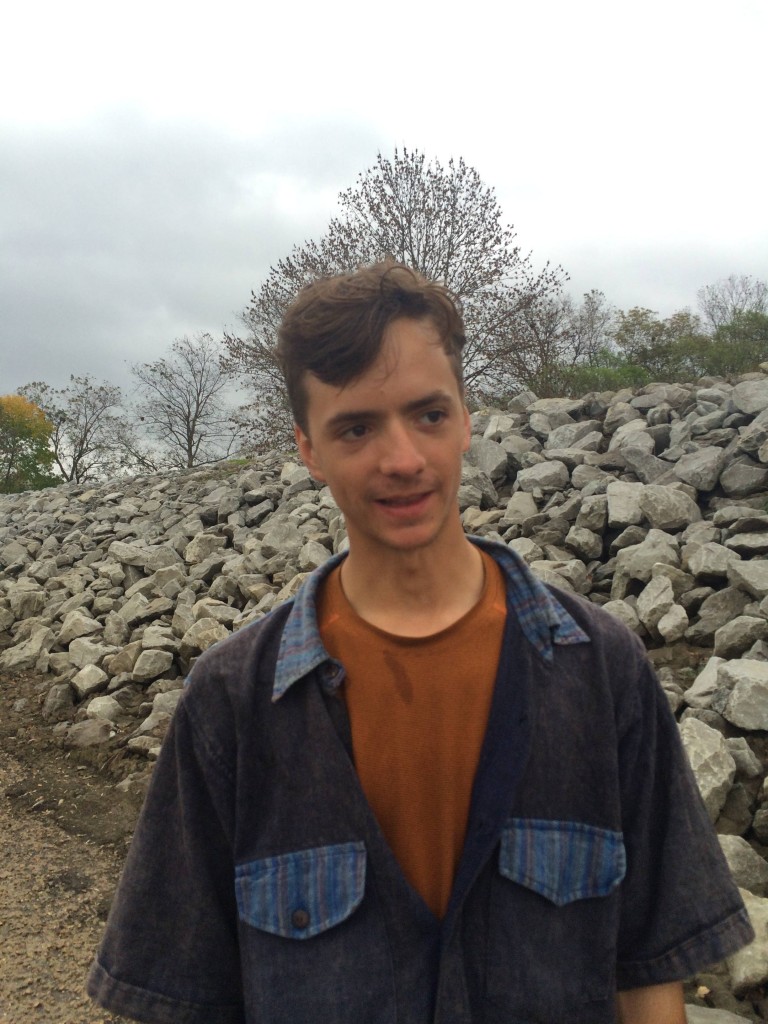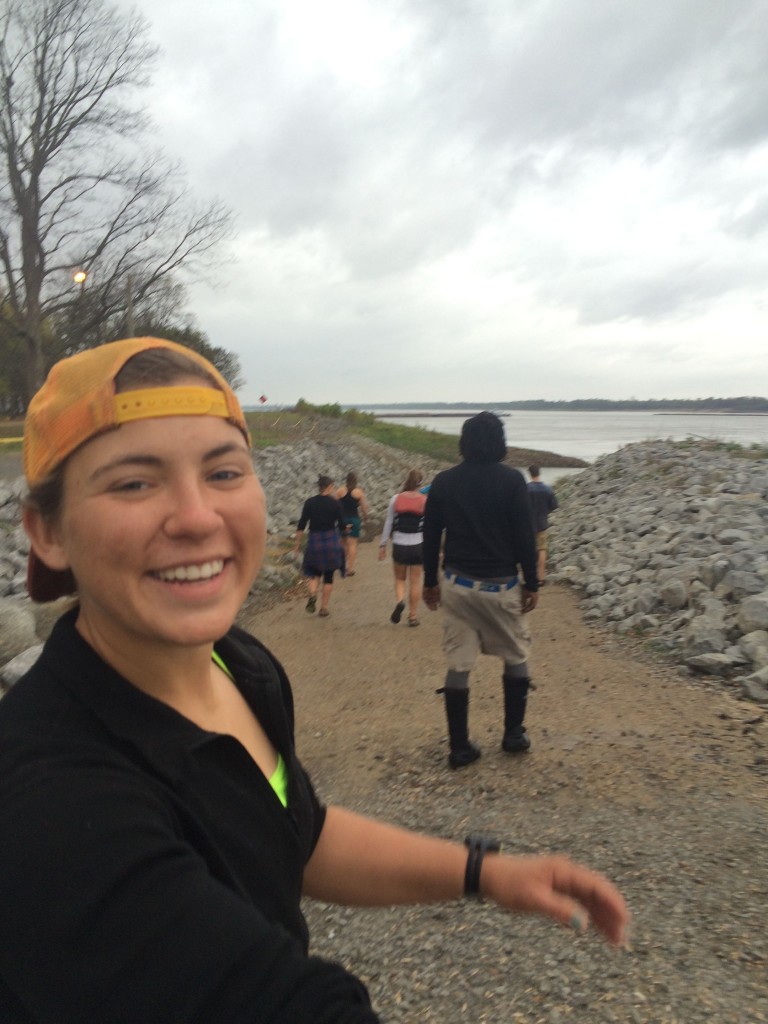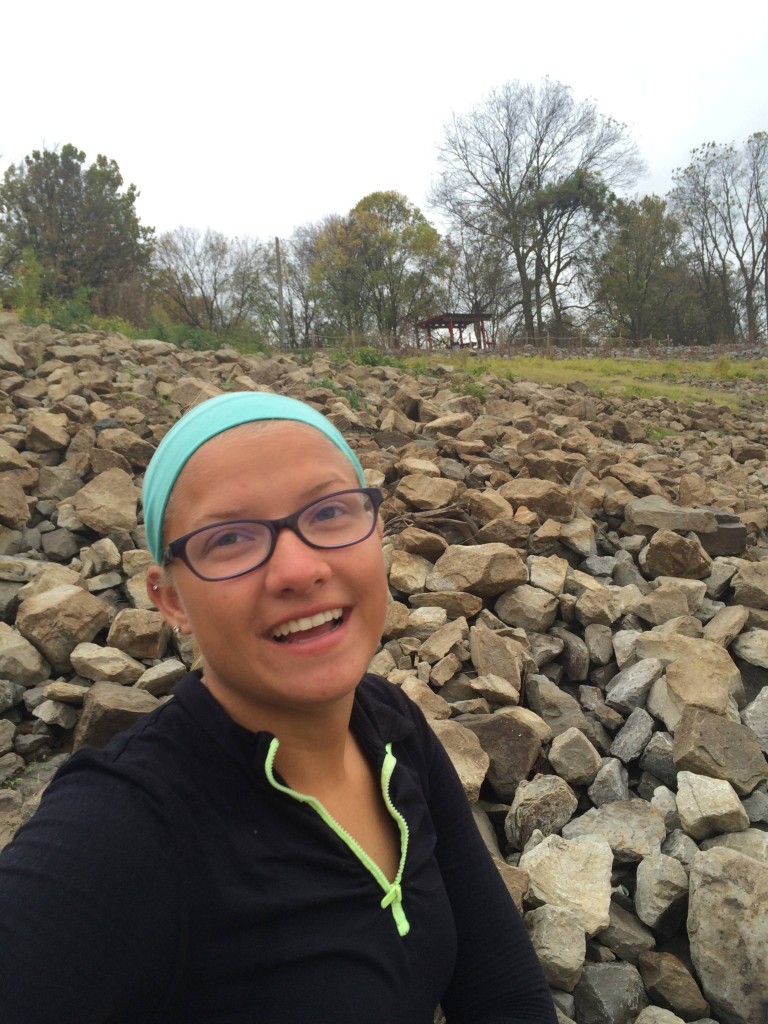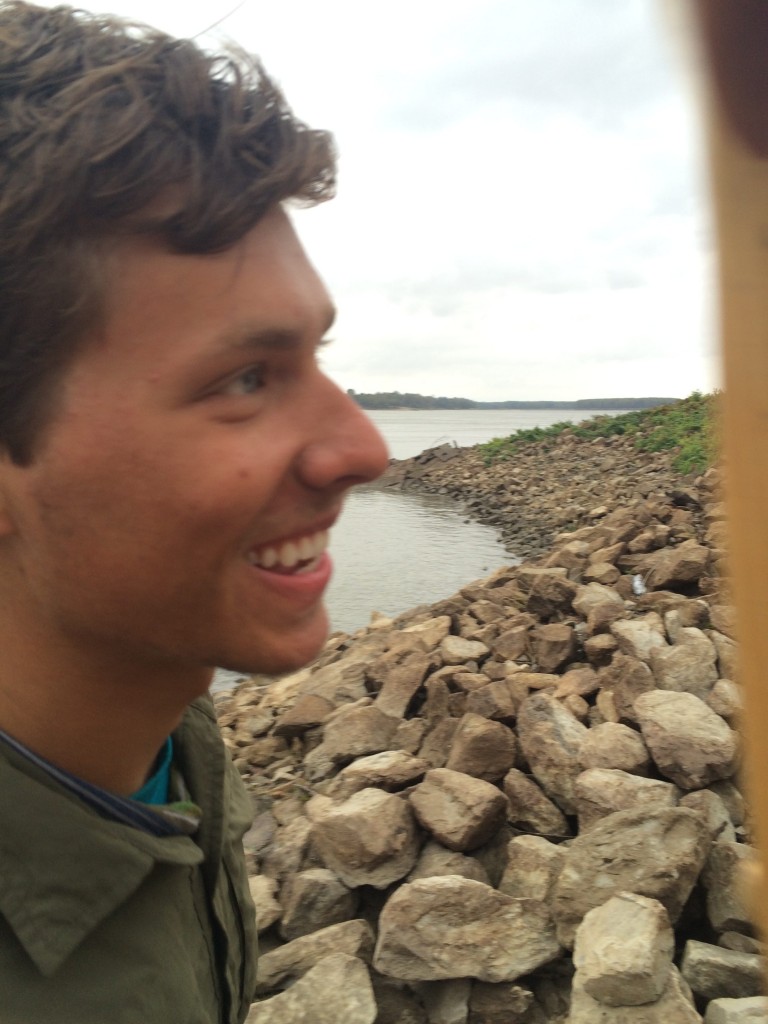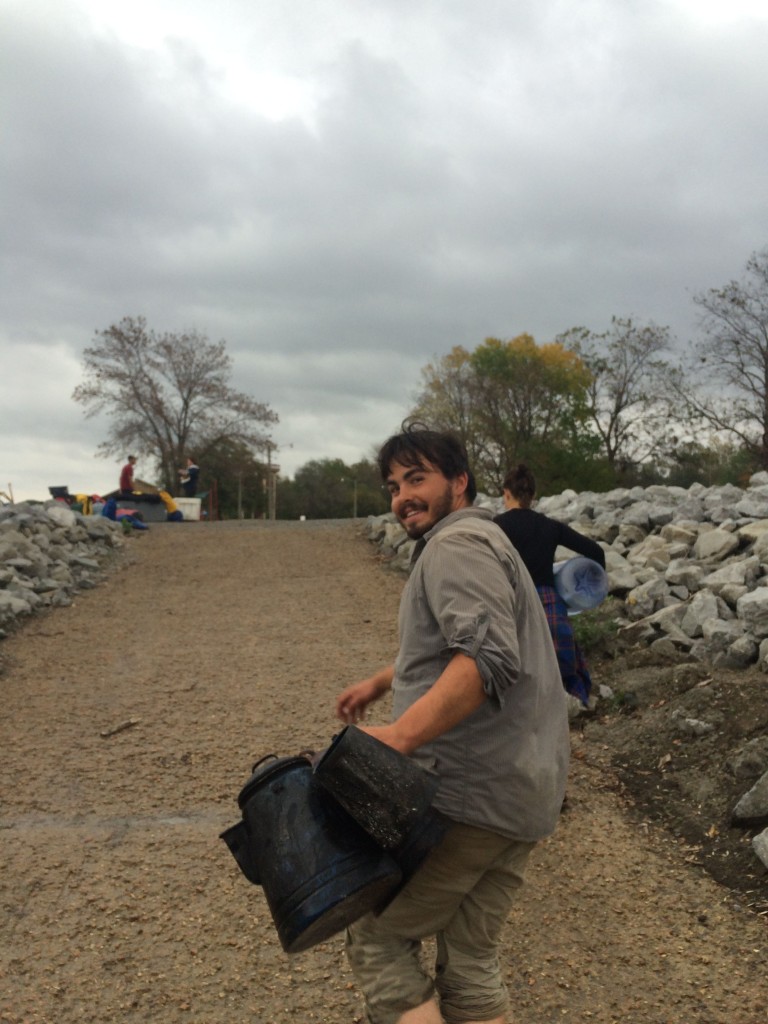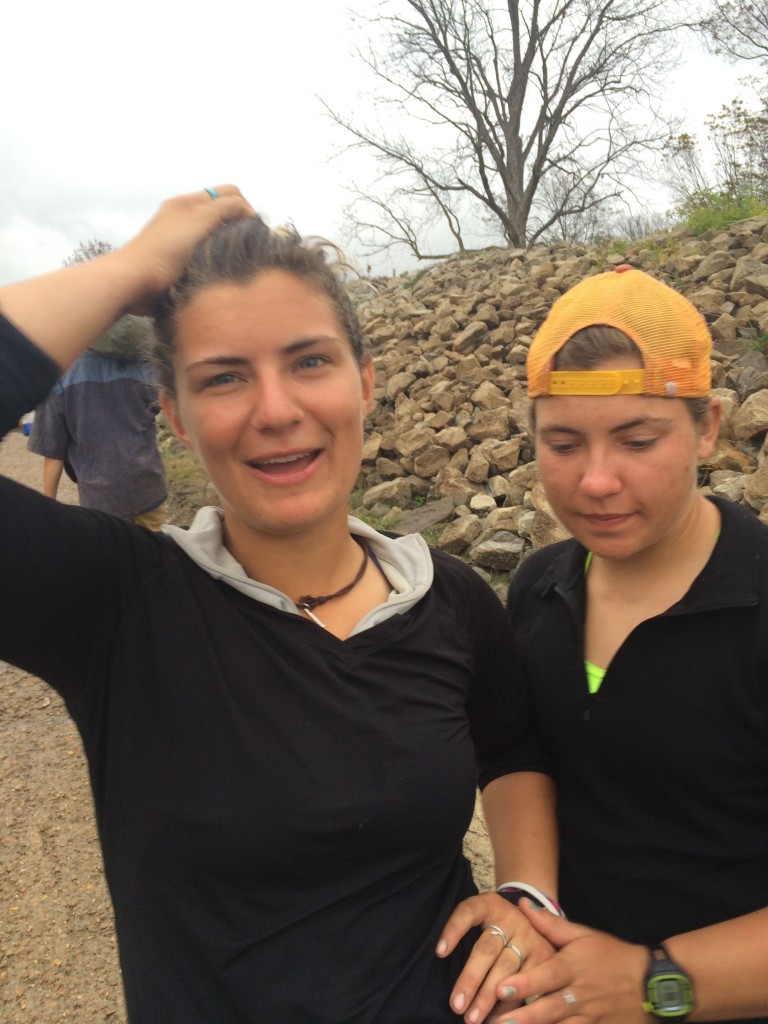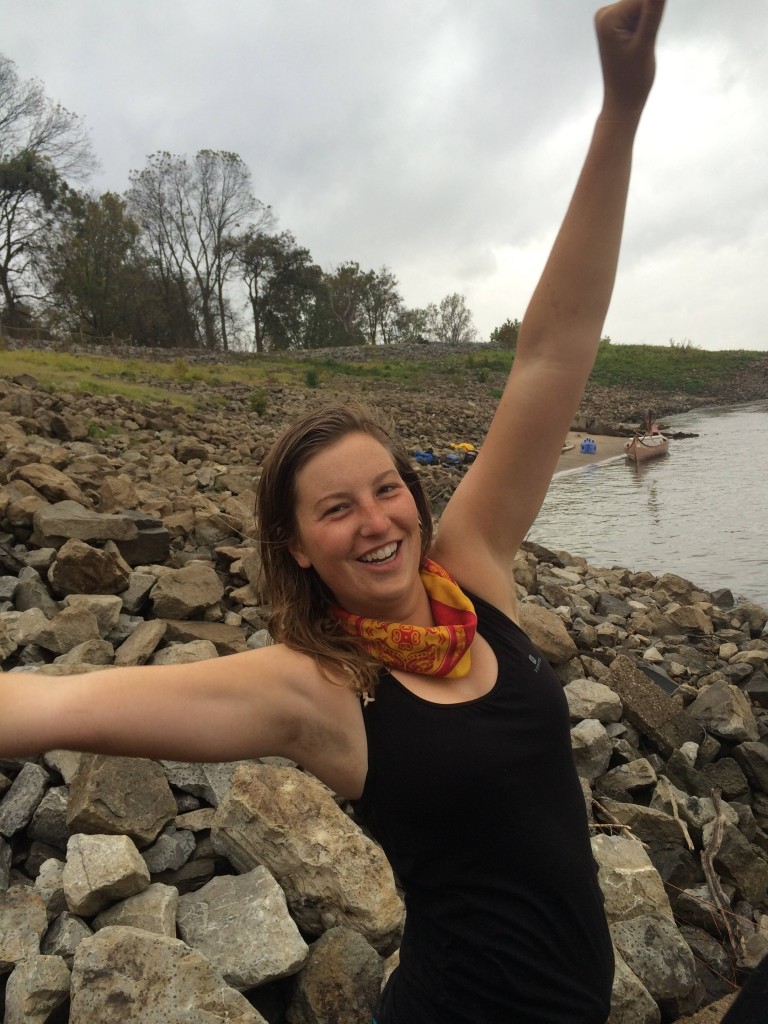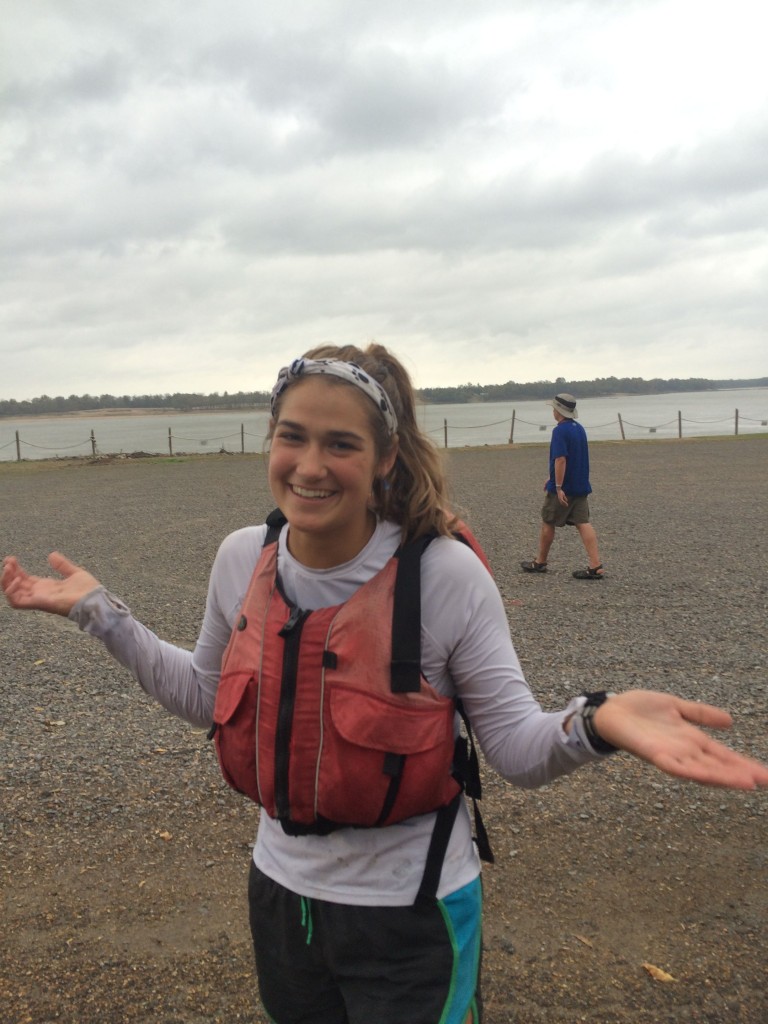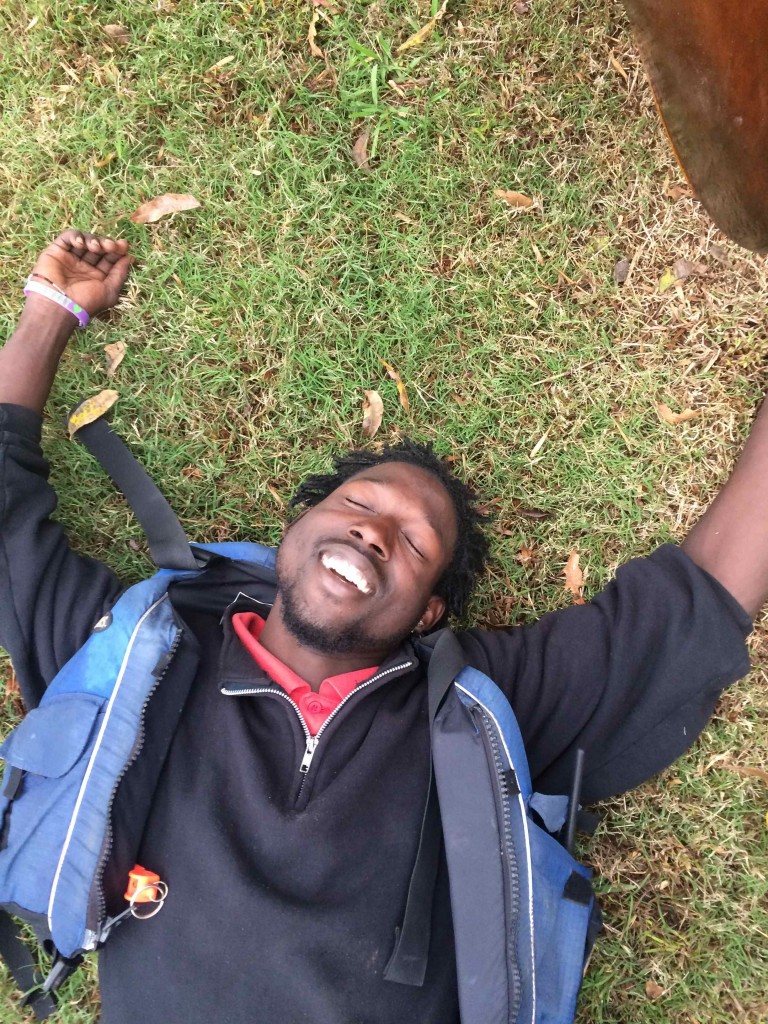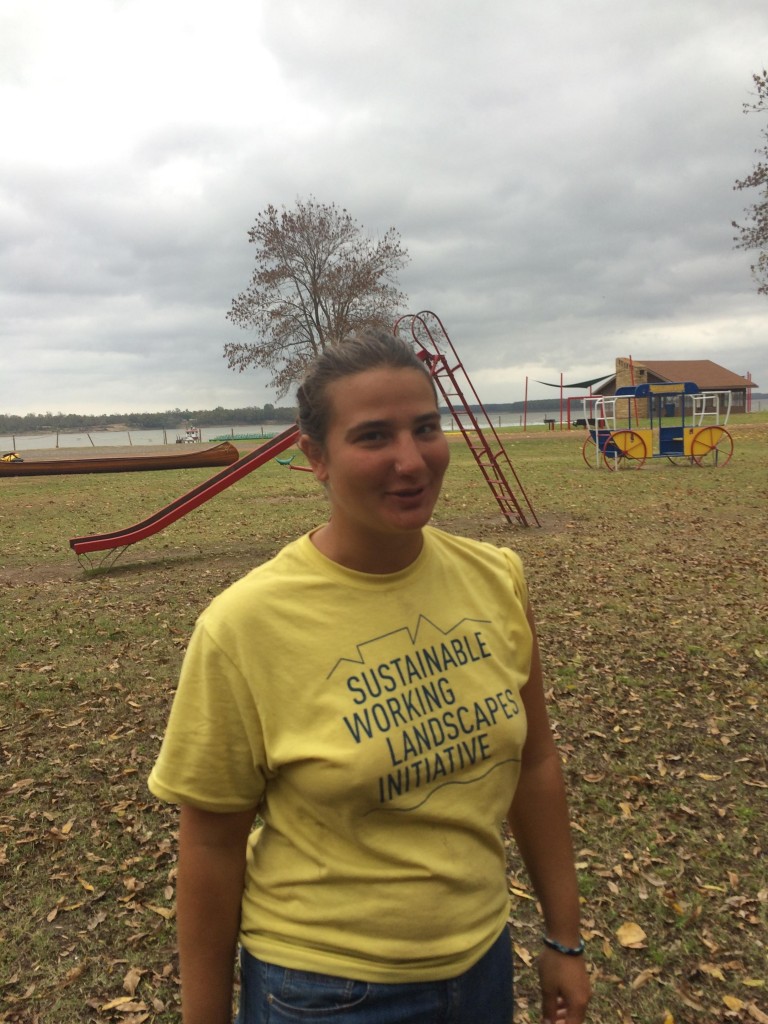A record of the 2021 River Semester Expedition (beginning May 1, with the boat-building project)
December 6: Day 101
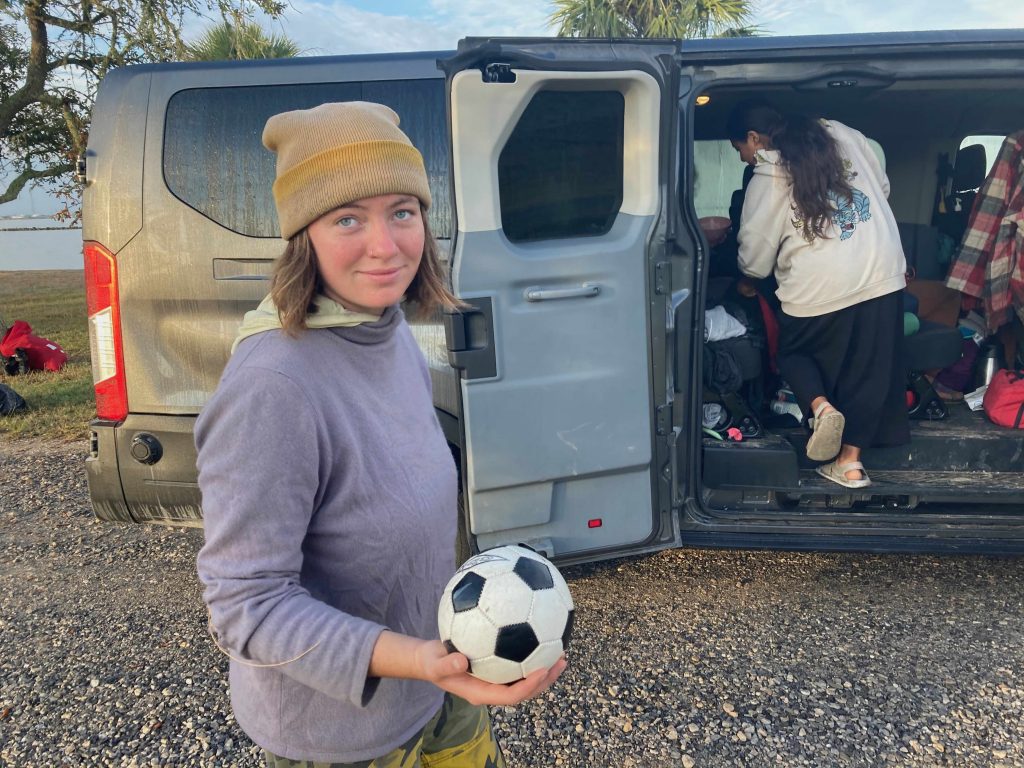
December 5: Day 100
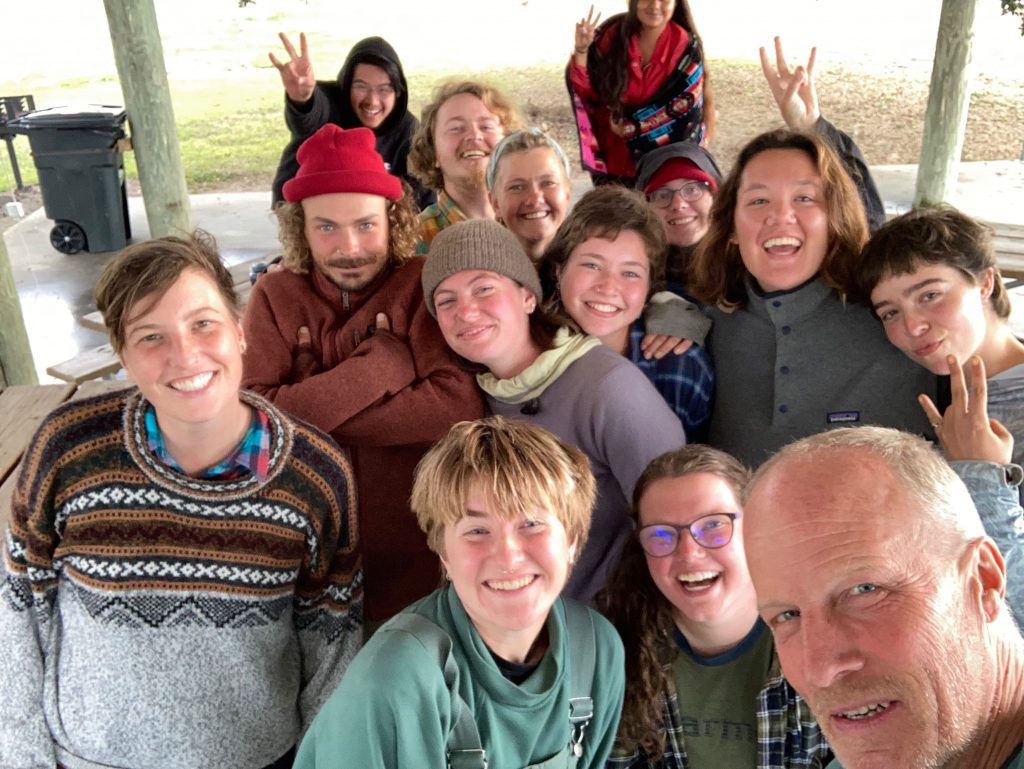
December 4: Day 99
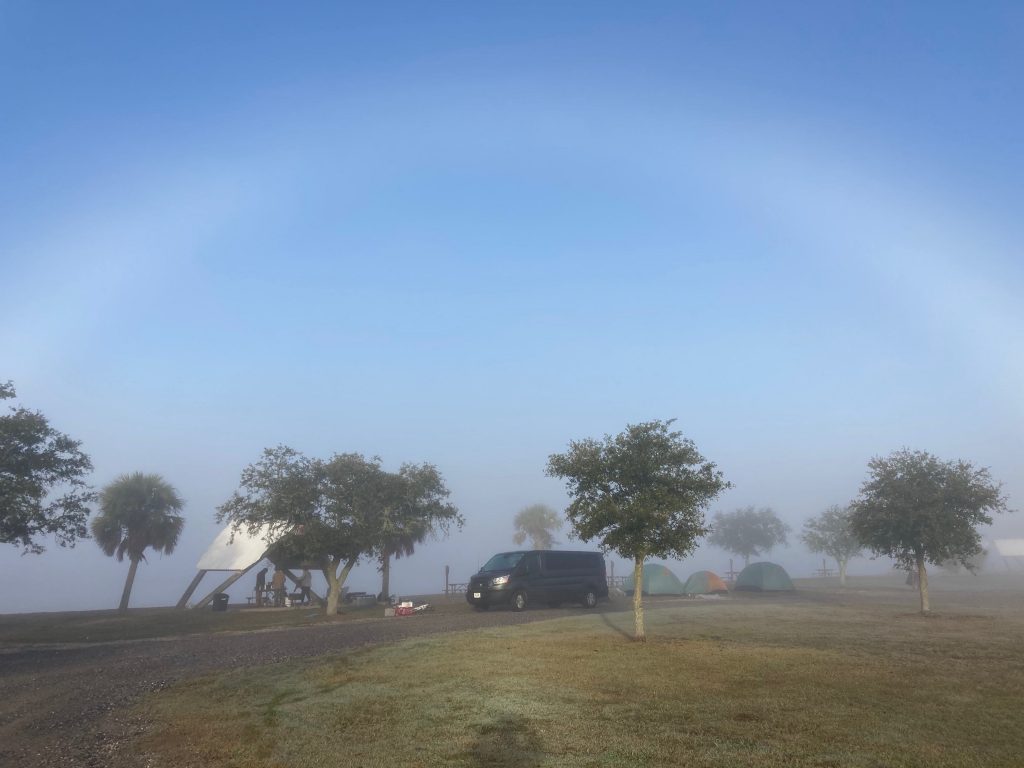
December 3: Day 98
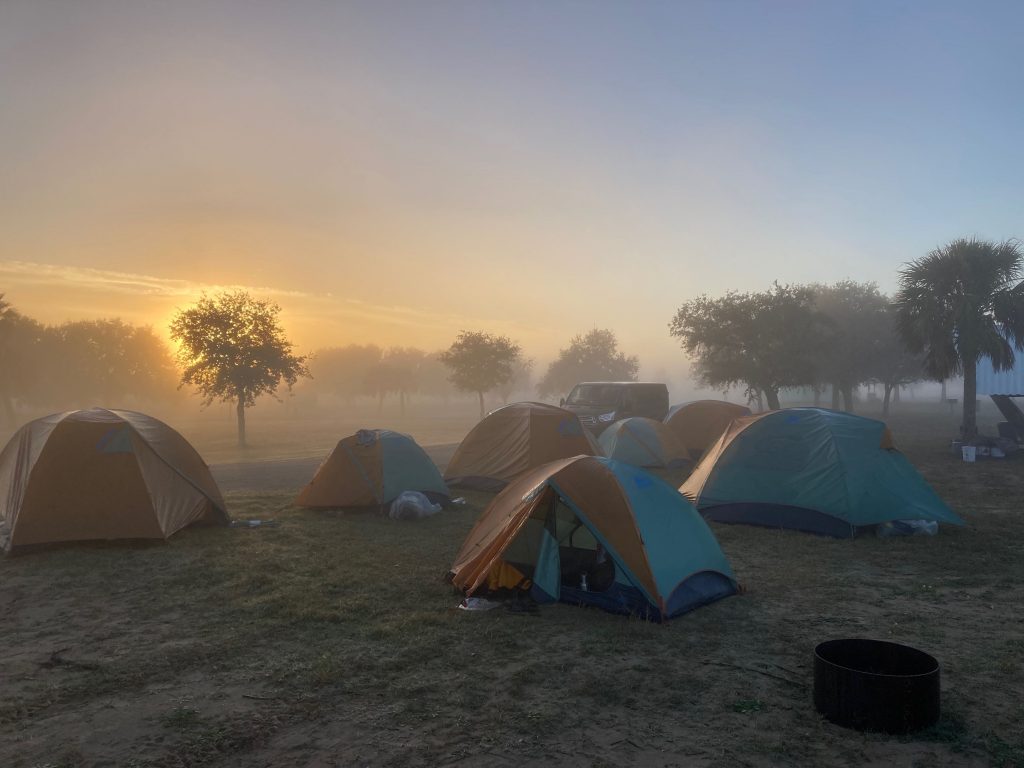
December 2: Day 97
Our transit by van to Cypremort State Park, on the Gulf Coast. This is our final destination and “end of the road” for the 2021 River Semester expedition. We saw some of the damage from Hurricane Irma as we went, and traveled through Cajun country, listening to zydeco on the radio and checking out the bald cypress and bayou country along the way.
December 1: Day 96
What was supposed to be a visit to the Whitney Plantation turned into a day of getting COVID tests, as a number of the group had gotten sick. Fortunately everyone tested negative. The day was then spent resting, getting schoolwork done, and preparing for our transit the next day.
November 30: Day 95
Today was another layover in New Orleans. In the early morning, half of our crew went on a drive with Joe to the end of the road at Mardi Gras Pass. They got to explore around the river at that sight and scavenge for some interesting souvenirs. Here’s a view from one of the abandoned boats!
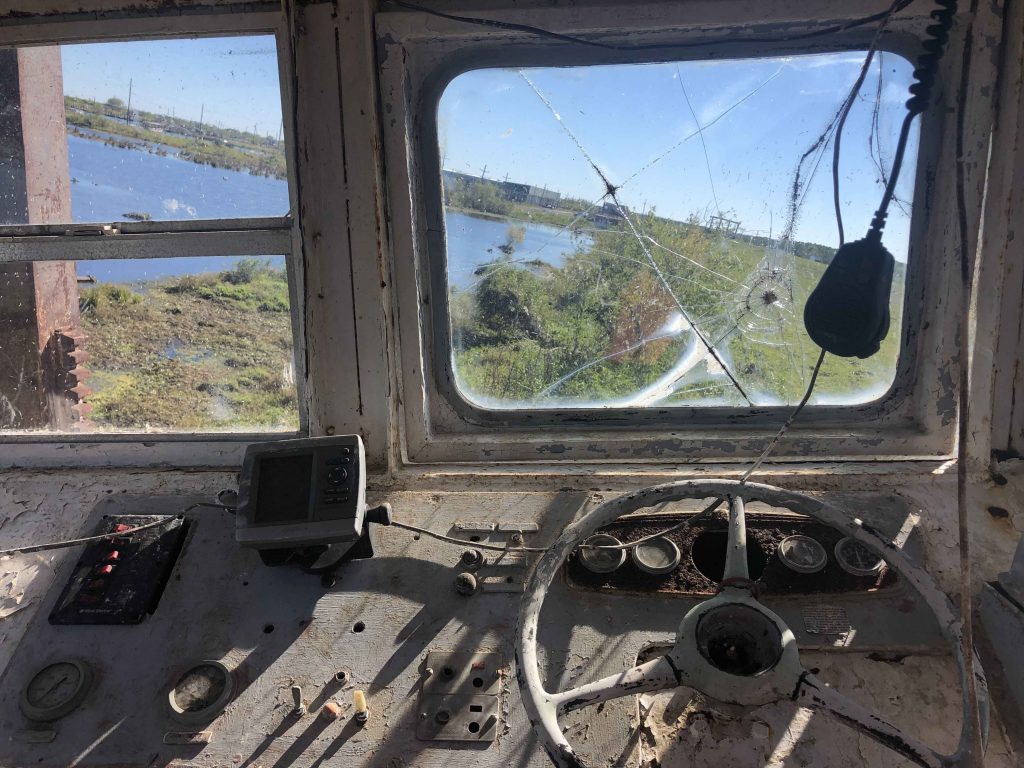
We spent the day taking time to study and get some homework done around camp. Later, we shuttled and ferried over to a presentation at Studio in the Woods. We got to hear from Yudith Nieto, an artist and organizer who works in the environmental movement. We got to hear about some of her projects, advice, and insight about her work. We stayed around the property to enjoy dinner there and chat to some other folks at the presentation. Overall, it was a great experience to meet more people interested and doing work that focuses on topics in our classwork.
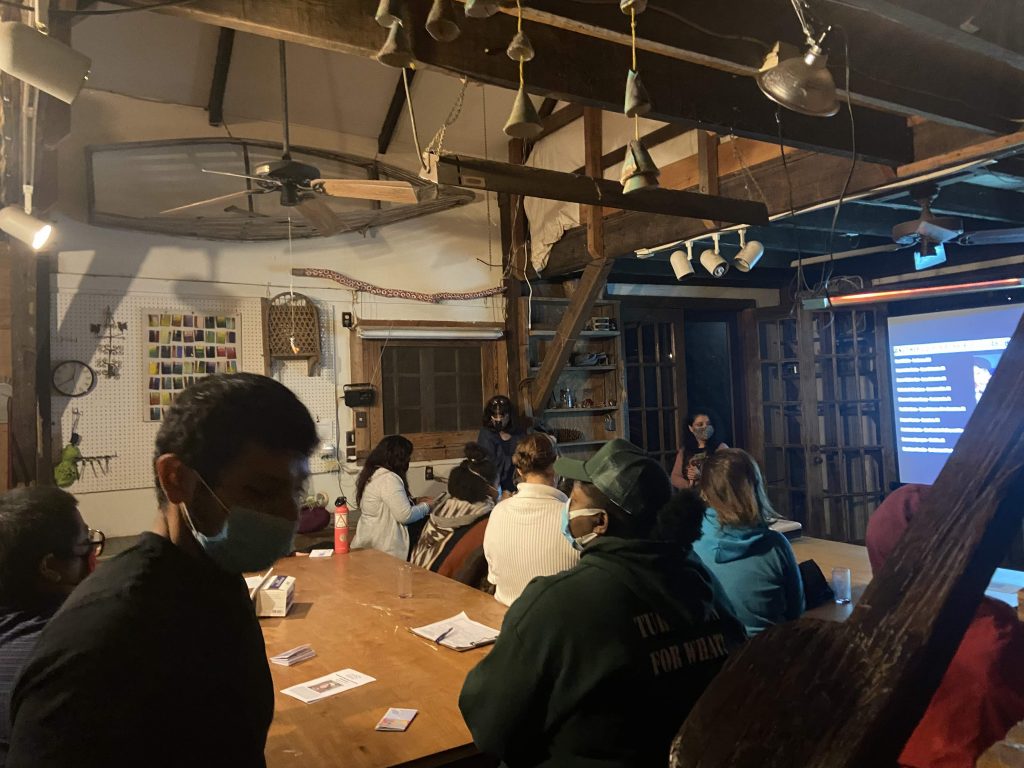
November 27: Day 92
Today we spent another day exploring the city and doing some classwork. We went to Audubon Park located on the west side of New Orleans next to Loyola University, and explored the neighborhood and did some work on our personal research projects and field journals. The park was filled with large beautiful trees all around that have large arches and bends in the branches that add an enchanting feel to the space. It feels odd to only have 11 days left of our expedition before we are back in Minnesota for the closing portion of our adventure together. Throughout the semester I’ve felt as if I’m in a time loop in which some days feel very long and things are repetitive, but when put together it feels like we have been together for years. There’s been lots of time for reflection on how we are all going to adjust back into “normal” life, but only time will tell how we transition from our river mindset to our lives in separate cities across the country.
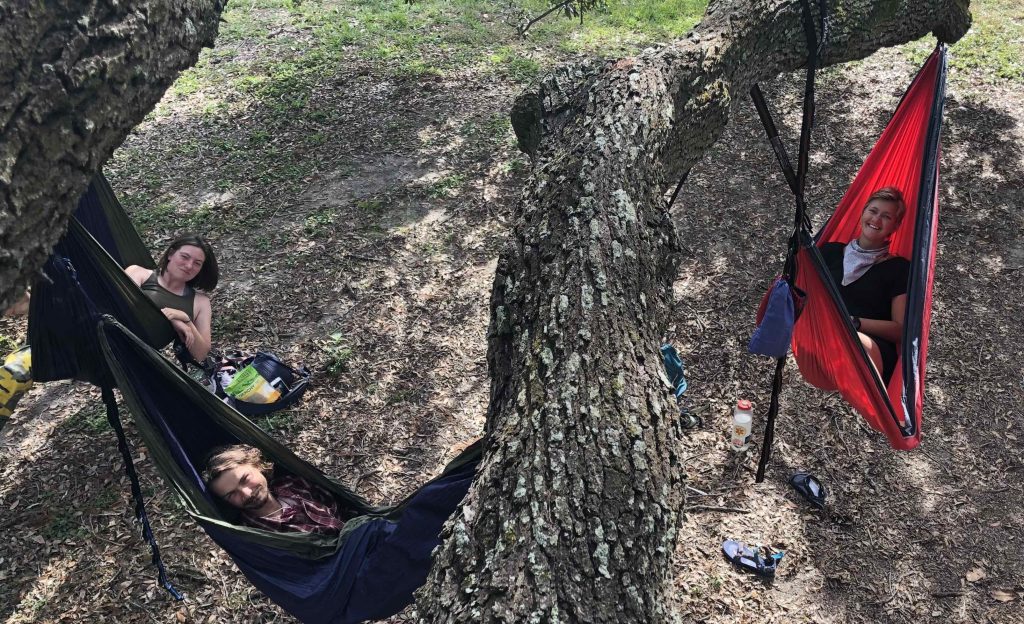
November 24: Day 89
Today was our first day in New Orleans. We had a relaxing morning, and after lunch decided to head into town to go Studio Be, an art studio in the Bywater neighborhood. After the studio we also had a little time to explore the neighborhood and ended up sitting outside of a nice coffee shop. The studio itself focused on activist art, largely related to BIPOC justice and Police brutality. The studio itself was in an old warehouse, which I felt helped add to the powerful art within. A lot of the students found the studio to be moving, some of the pieces even brought me to tears. One of the installations I found particularly powerful. It was a piece reminiscent of the iconic photo Raising the Flag on Iwo Jima, featuring black activists, with the question, “What do we build from the ashes of a nightmare?”
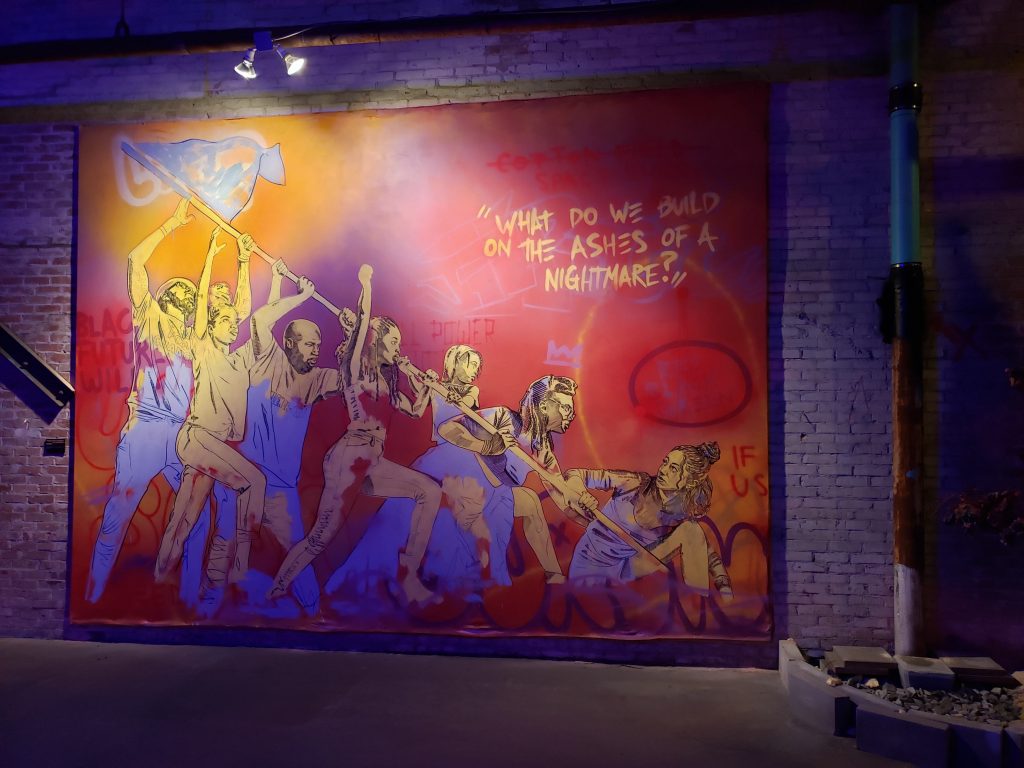
[Elias]
November 23: Day 88
Today we left our airbnb and shuttled to New Orleans. We are all so excited to finally get to New Orleans after how far we’ve traveled. After we cleaned the house we had some time to relax before we shuttled. During the shuttle we drove through the chemical corridor which has over 140 chemical factories and refineries right along the river. It was unsettling to see this factory and others caked in a mysterious orange film and then homes right down the street. We discussed the complex existence of these factories on former plantations, next to current residential areas, massive in size and high in frequency, and their role on the Mississippi. These factories have major impacts on the river and its wildlife. Earlier this week we passed a paper factory on the river that dumps so many billions of gallons of water into the Mississippi that it is basically a major tributary like the Ohio, the Arkansas or Illinois. This has all given a lot for us to think about in terms of the Mississippi’s identity as a river in the US.
[Kelly]
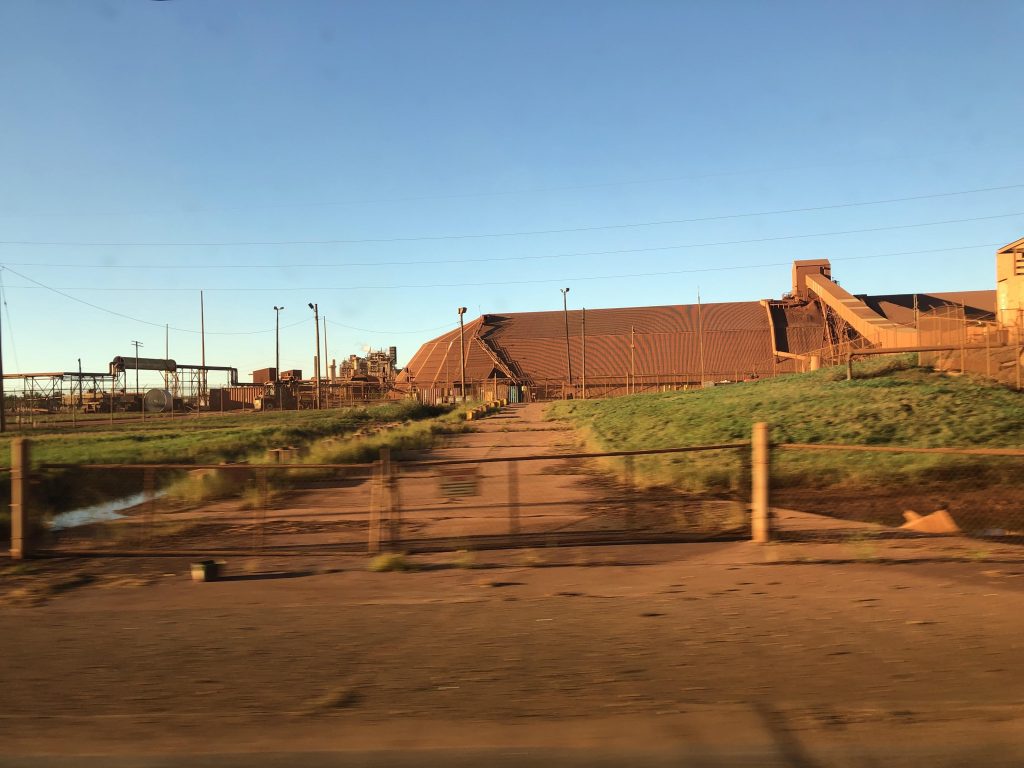
November 22: Day 87
Today was a big day for us in Baton Rouge. We paddled the catamarans to shore for the final time and disassembled them in preparation for their pick-up by our friend Hugo on our way back to the cities in a couple weeks.
We also had two site visits- one to the University of Louisiana’s CPRA (Coastal Protection Restoration Authority) and the other to the LEAN (Louisiana Environmental Action Network) office, where we met Marylee Orr, a member of LEAN, and her son Michael.
CPRA was a really neat building with lots of models and data visualization projects about coastal land-loss. They had a sign up with Albert Einstein’s quote “we cannot solve our problems with the same thinking we used when we created them”. Both sites made me think about the current headspace that we are in, in relationship to change making (both from a scientific, climate change mitigation perspective (CPRA) and an environmental justice perspective (LEAN)). Do we want to carry forward in the same way we have been or shift our relationship with change?
The guides have been surprising us with lots of good food lately (they made falafels tonight!) Excited to shuttle to New Orleans tomorrow 🙂 We have all been discussing what we are most excited about. Personally, I am looking forward to live music and site visits the most.
[MJ]
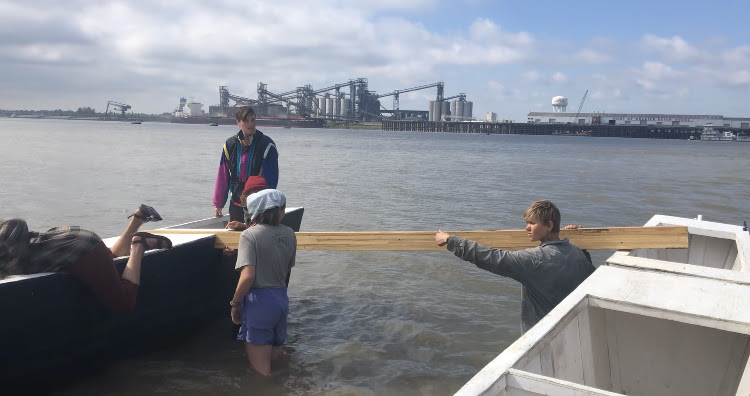
November 21: Day 86
Today was another layover day in Baton Rouge. Our plan was initially to take the boats apart, however a few of our crew were not feeling well, and decided it would be best to stay in and recover.
Then later in the day we met in our Airbnb living room and discussed how our ENV 310 final, which consisted of a student ‘takeover’ for a few days, went. We talked about what we learned, what goals we had, how we played to our strengths, and what we could’ve done better. After a few days of rest, it was nice to talk about it and reflect on our experiences.
For dinner, our guides generously arranged a ‘fancy’ meal. They rearranged the living room and set out candles and acted as our waiters. To complete the scene, Joe put on his Dinner Party playlist and we all got to dine together.
To finish out the night, we played a few rounds of cup pong, had some ears pierced, and went out to play pool near our Airbnb.
[Sarah]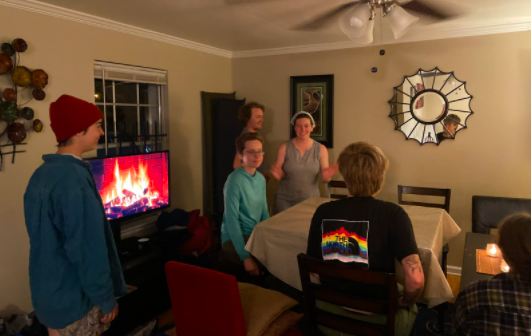
November 19: Day 84
Today was a whirlwind of emotions as it marked our last day on the water. The atmosphere was pleasant in the morning as the students prepared for taking leadership in guiding the trip. Multiple people attempted to place the flag at the top of the mast but Hannah was the only one successful in climbing to the top in true pirate fashion. Once we got on the water the students had to intently focus on the last stretch of the river ahead. Water traffic, fleeted barges and high winds created challenging conditions to sail in. The students helped each other with tasks, communication and keeping each other safe. It felt amazing to pull ashore after a hectic morning on the water. Pride and joy overwhelmed the crew as we concluded the water portion of our journey. For 83 days we camped, got in tune with the natural world and our own intentional community.
As we sailed throughout the term we gained new technical skills, learned how to read the water and winds, and dove into what it feels like to deepen our relationship with the river.
This has been the hardest thing I have ever done in my life. I cried more than I would like to admit, struggled through cold days, complained when things got hard and grew to resent myself and crew at times. Making it through these tough times I gained a new perspective and self respect. I got physically stronger, learned how to set up camp, how to push myself when I thought I wouldn’t make it and enjoyed the endless beauty of the river. I also grew a deep love for my crew – these are relationships I will hold close for the rest of my life. The rewards of this journey seem to be endless, and I am so thankful for the opportunity to spend this semester on the water. Though our time on the water ended, the adventure is not complete. We spent our first night of this new phase under a roof for the first time in months. We danced, made cookies and played cards late into the night celebrating our success of making it safely to Baton Rouge.
[Zoe]
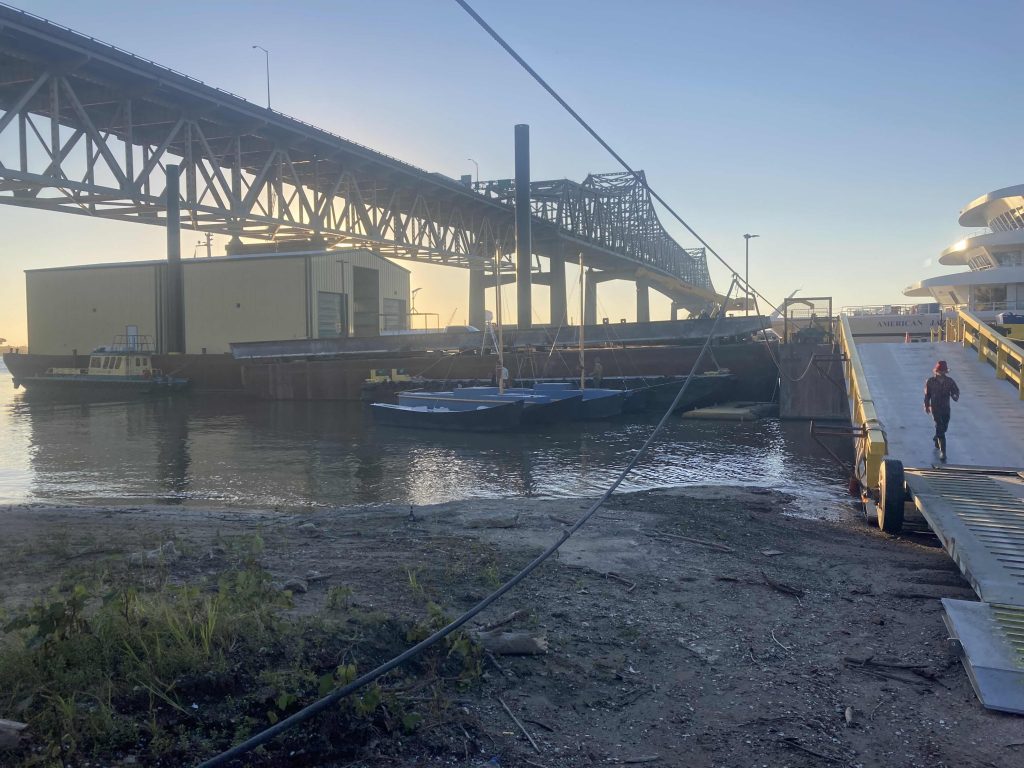
November 18: Day 83
Today was our second day of our student-led expedition! We began the morning with a slightly later wake up time in order to wait out the fog that was casted all around us. As we near the end of our days on the river itself, we were reminded by Joe of the connection and lessons that we have to this incredible body of water at this exact point in time. Once the fog lifted, the sun peeked through the clouds and we got an hour of warmth and sunshine before the cold front and wind picked up and we continued the rest of the day with cloudy and windy weather which provided us with an early arrival to our campsite for the night just 8 river miles away from Baton Rouge. Our camping spot for the night was our last island site of our expedition, and our crew decided to set up our tents in a neighborhood-like fashion all close together in the Black Willow forest.
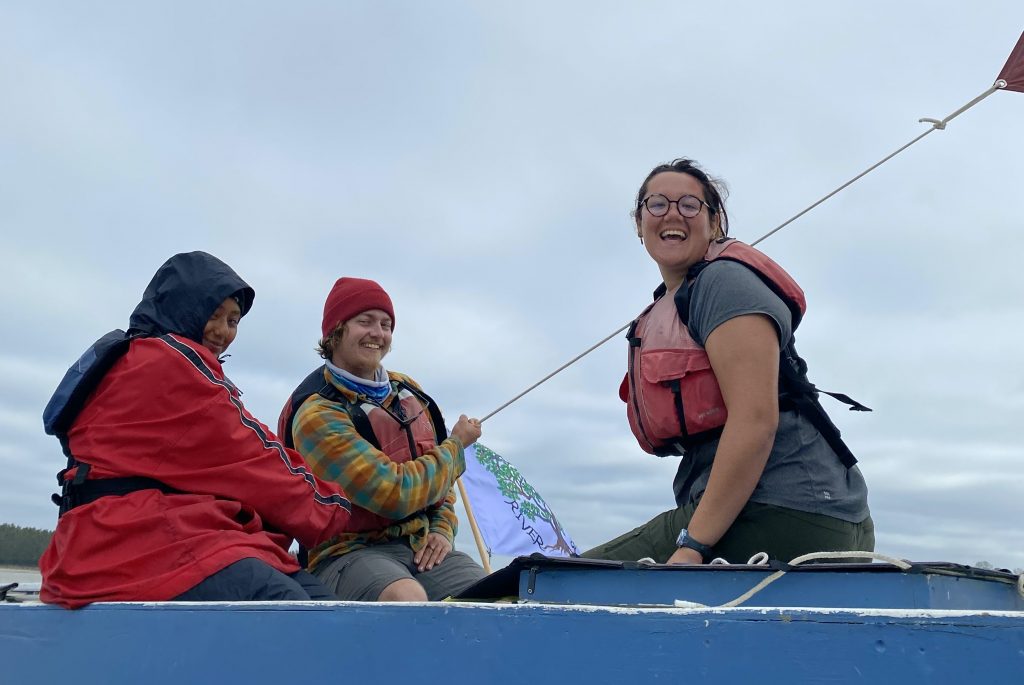
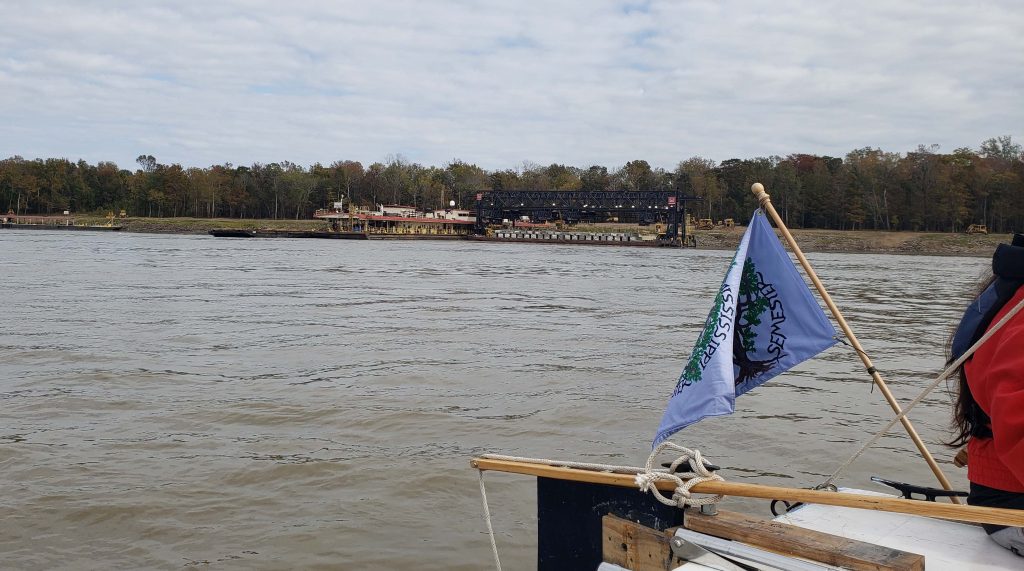
November 13: Day 78
This morning, we discussed Colonial Deja Vu by Kyle White. We broke off into small groups to discuss what we had taken away from the reading. When we came together, we talked about White’s criticism of the hegemonic concept of “bad luck” when it comes to Indigenous people being impacted heavily by climate change. I learned that “bad luck” takes away historical context, and responsibility of those in power to acknowledge context and stand in solidarity with Indigenous people.
The main event of today was our history tour of Natchez, with Shabila Minor. Shabila is a Black woman who is the direct descendent of a West- African prince, Abdul Rahman, who was taken captive as a slave and brought to Natchez in 1788. (Fun fact she is also related to Nas, the rapper, and Yara Shahidi!).
Natchez is known for its history of slave-trade and had and continues to have a lot of the country’s wealth because of it. Shabila brought us to many historical sites including a house she intends to buy which formerly housed enslaved people who started an underground school. She is having trouble buying it because she is Black and it is hard for Black people to buy historical houses like this because of unofficial housing covenants.
Tomorrow, the students are going to have a meeting about how we want to organize the boat groups for our final exam (student takeover). Since then, we have been enjoying our time in Natchez, soaking in the hot tub, doing homework at the library, and taking regular showers (we smell SO CLEAN).
[MJ]
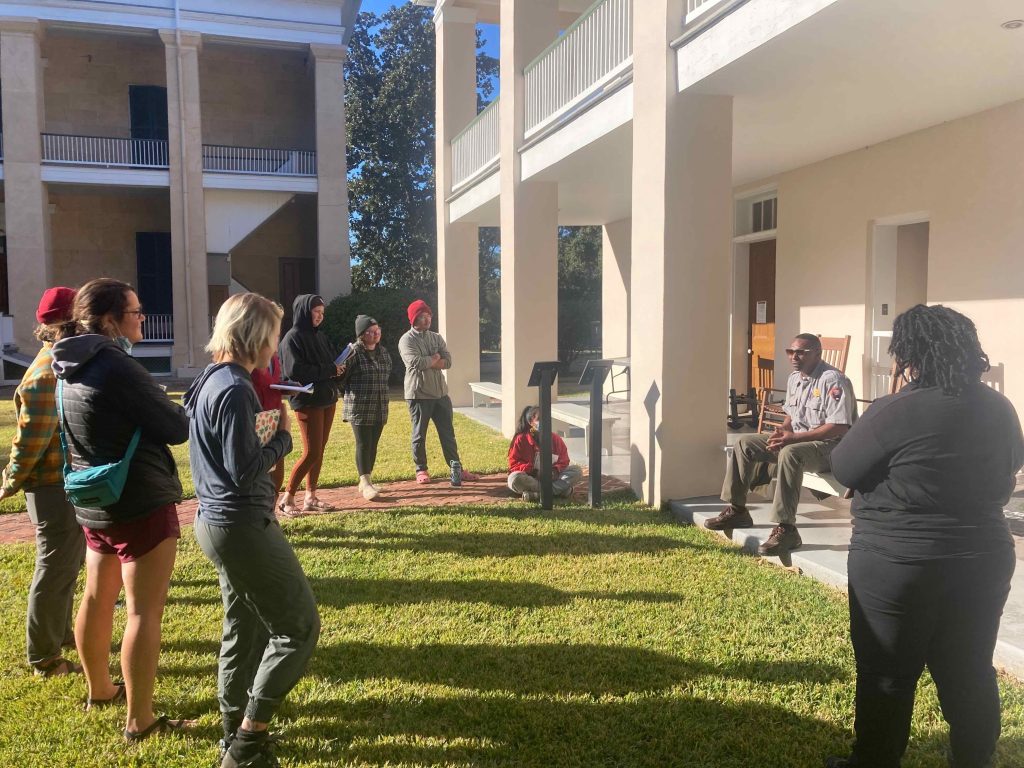
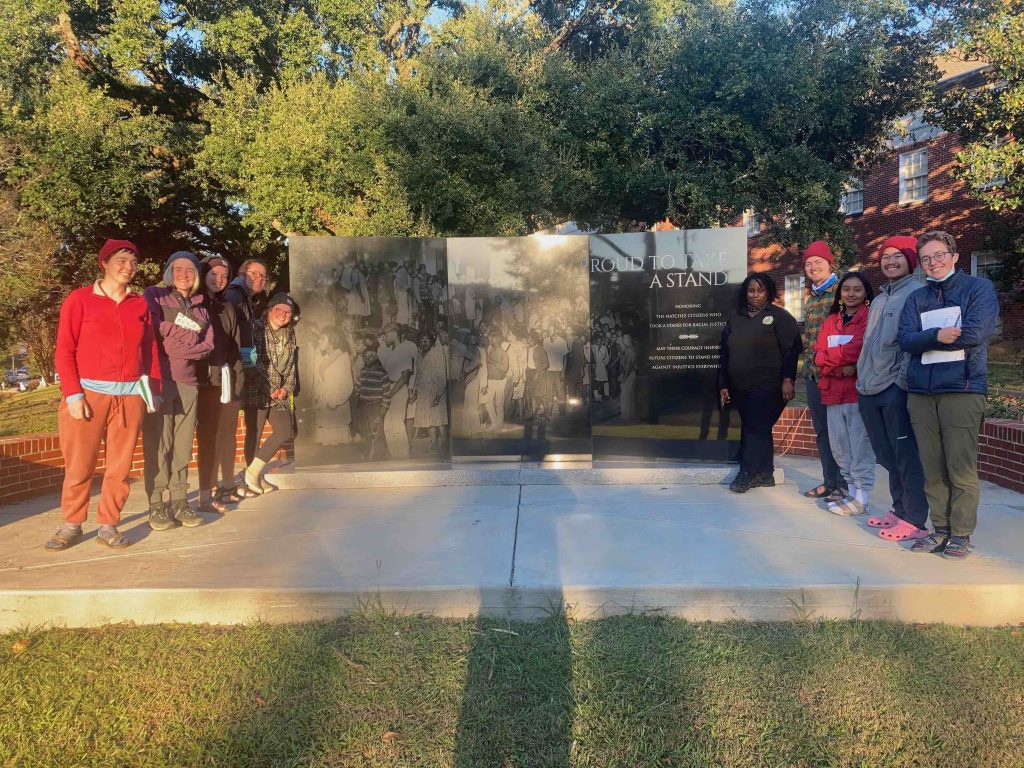
November 12: Day 77
We took today as a study and homework day in a library in Natchez. We were able to rent a room and have some quiet time to work on our projects and our current exam. We had some class time to start to discuss our plans for our ENV 310 final, which consists of the students ‘taking over’ the trip into Baton Rouge.
[Sarah]November 11: Day 76
The day before was my 21st birthday, and it honestly felt like that day continued today. It was our first full day in Natchez Mississippi, and after the long day of paddling the day prior we all needed a break. Today consisted of catching up on some homework, talking to loved ones, and having fun. That night we hung out in the hot tub under the stars eating Little Caesars Pizza, and showered until we longed for the cold we had been so desperately trying to escape.
[Dylan]
November 10: Day 75
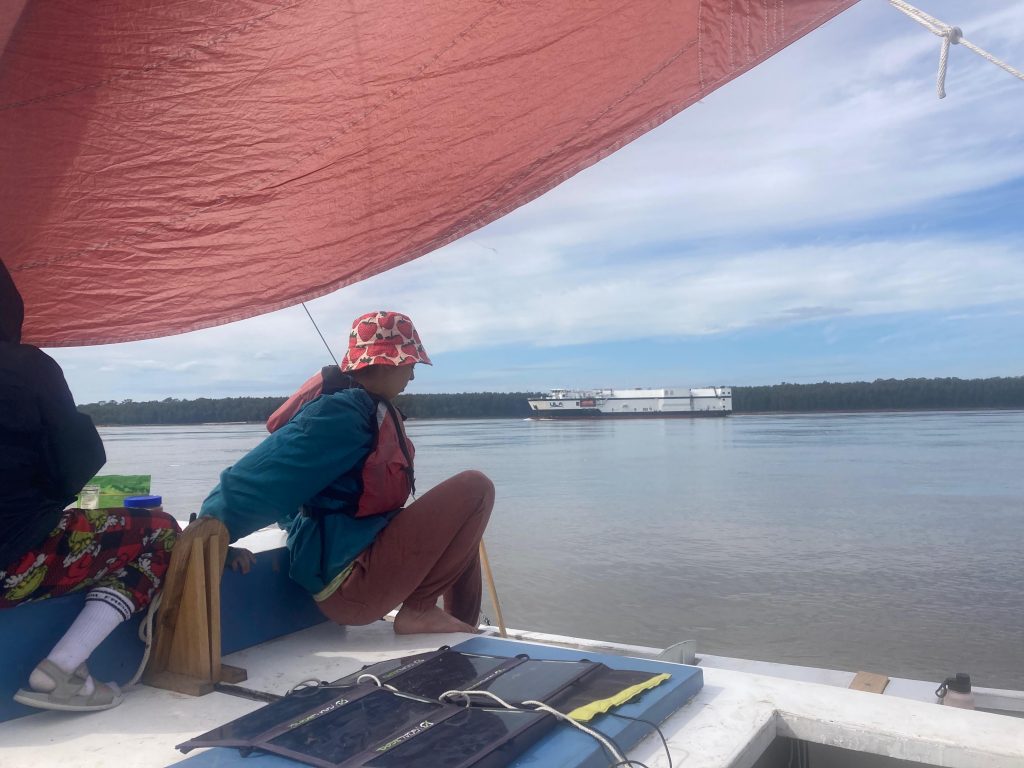
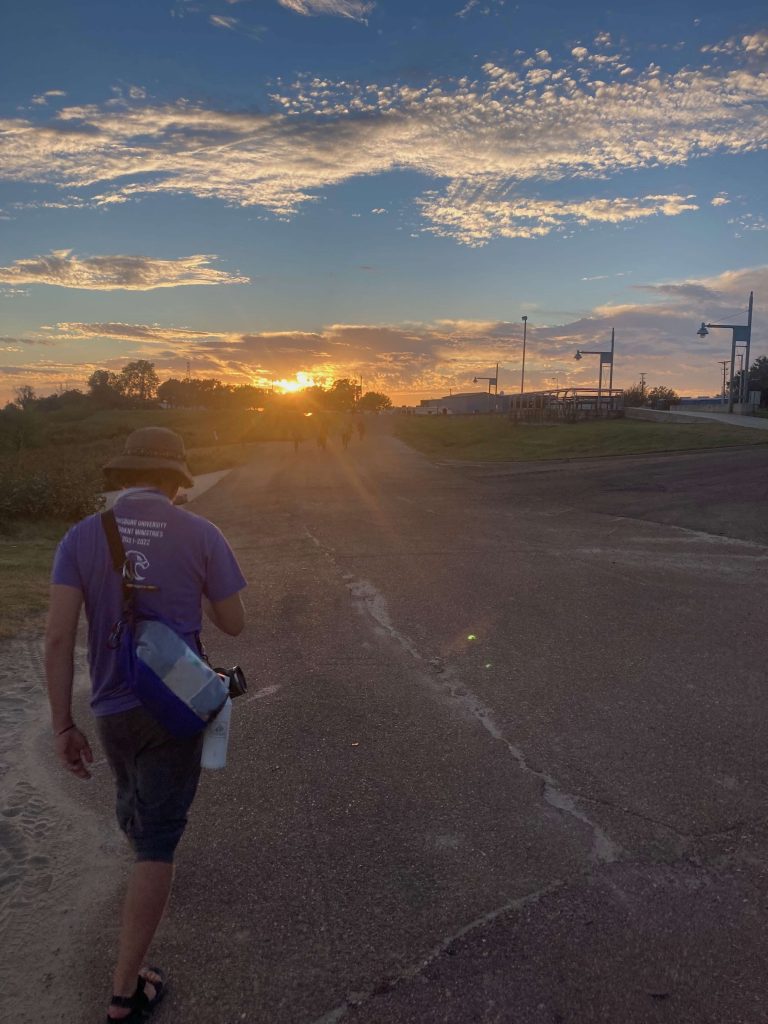
November 9: Day 74
After staying at our layover site, we are now back on the water to continue making our way to the Gulf! The last few days, the river water levels have continued to rise. With the increased amount of water flowing in the river, there has also been an increase of driftwood and various objects floating downstream with the current that we have to navigate around while we are transiting. On today’s transit, we paddled for the majority of the day as there was little wind to help us sail. I thoroughly enjoyed the slower pace of the travel today, as it provided me with an opportunity to look at the landscape that we are surrounded by. I noticed that on days when we are sailing, I typically take the opportunities to read some of our school assignments or my own personal novels, or chat with my peers on the boats, or even take a nap and not look around at the life around me. When we are paddling, I constantly am looking towards the shoreline to notice the trees, observing the foam on the water and wondering why and how it formulates, counting how large the barges are that pass us, and noticing how the clouds are changing throughout the day. I am just overall more observant on paddle days, and I find that I feel more connected to the river because of it. Moving slowly through the river or even through life is not easy to do, but it is something that I hope to incorporate more into my life when we are finished with this expedition.
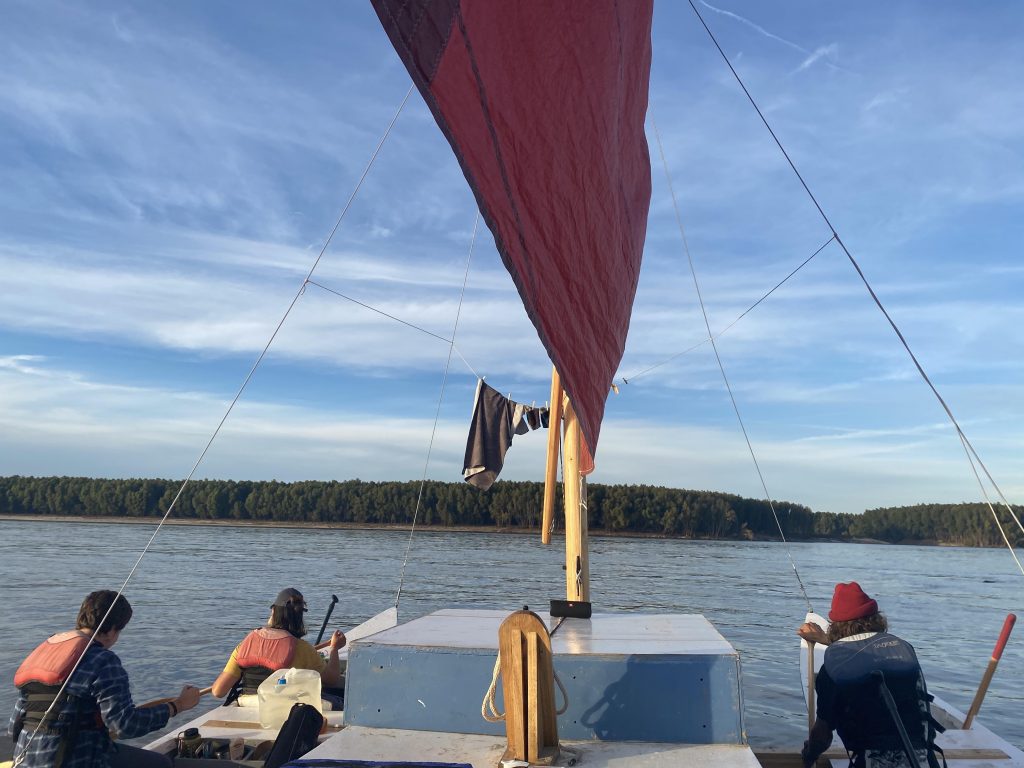
Kelly, Sarah, and Steven(the rest of Water Strider II crew not pictured) paddling towards our campsite for the night at mile marker 402.
[Megan]
November 7: Day 72
Today was historic! After two and a half weeks we finally took showers! It was also our first day since the upper river that all fourteen crew members were together, with Emily back from New York and Steven returning yesterday from a family wedding. While some folks headed into a coffee shop in town, Dylan, Joe and I spent a quiet, sunny, morning in camp. In the early afternoon we headed out to meet the van and go into town. Our campsites along the river have been in the largely undeveloped “batture land,” which is the land between the river’s banks and the levee. The batture land between our current campsite and the closest road is used as someone’s hunting land and crisscrossed with mowed roads. It was at least a mile walk and we got a little bit lost but eventually found our way to the van. In town we headed to the YMCA to shower, an event that, with multiple shuttles to coordinate, took most of the afternoon, but was well worth the effort. Back at camp, Steven had made pasta dough which we made into a delicious dinner.
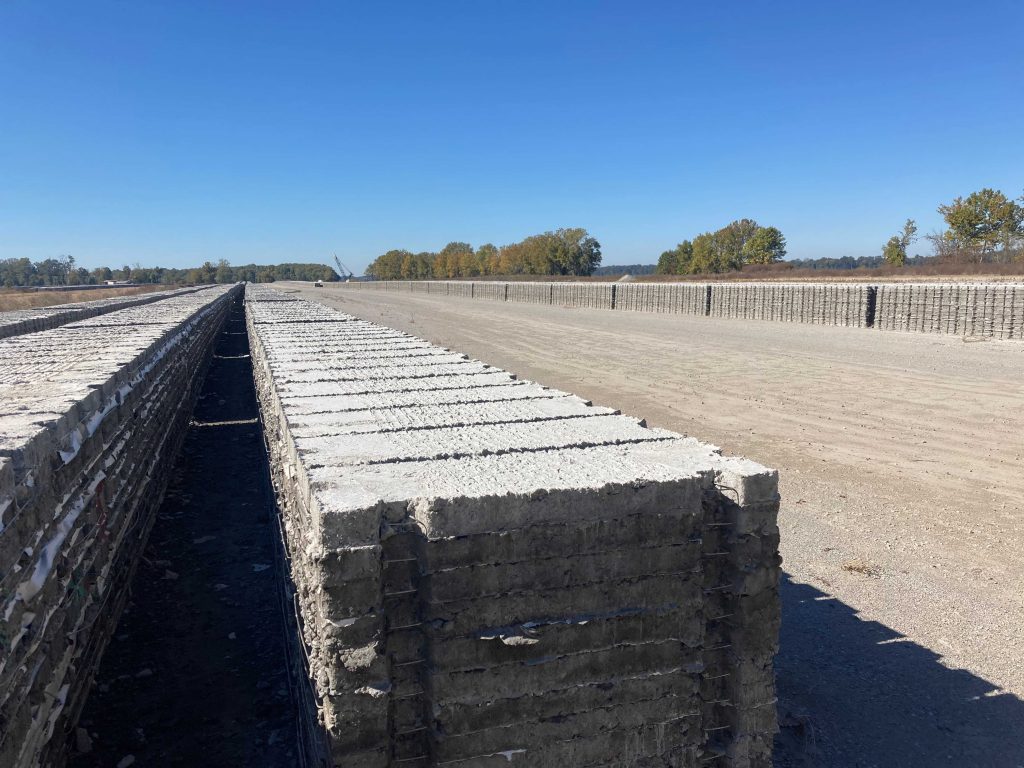
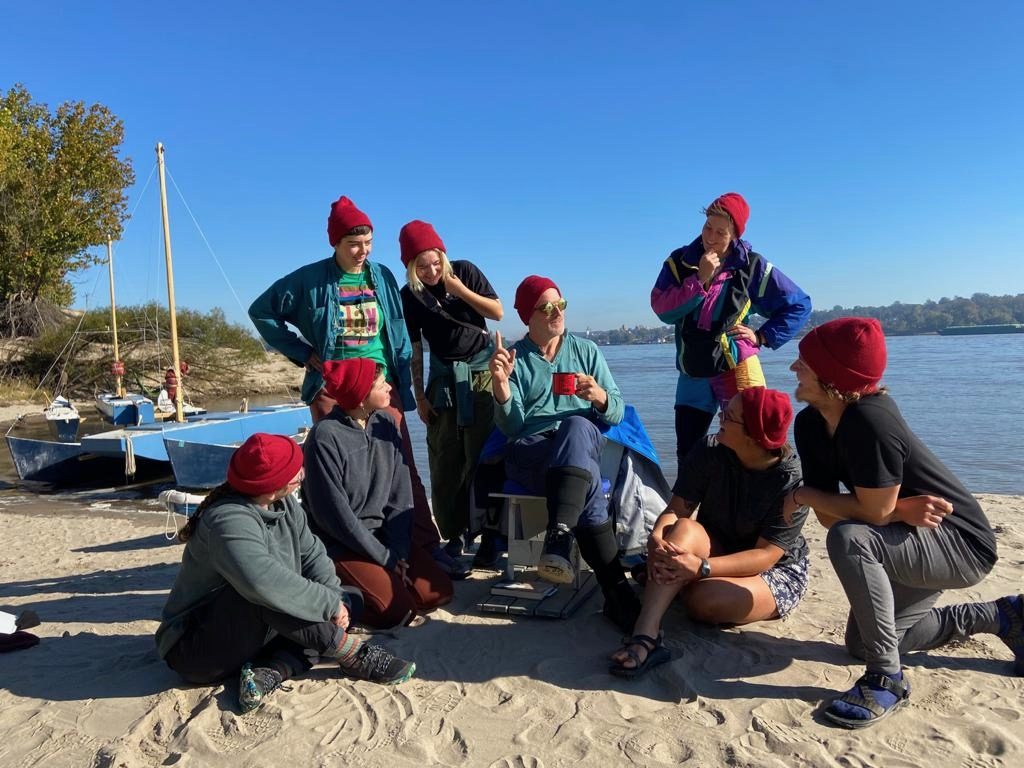
November 6: Day 71
November 5: Day 70
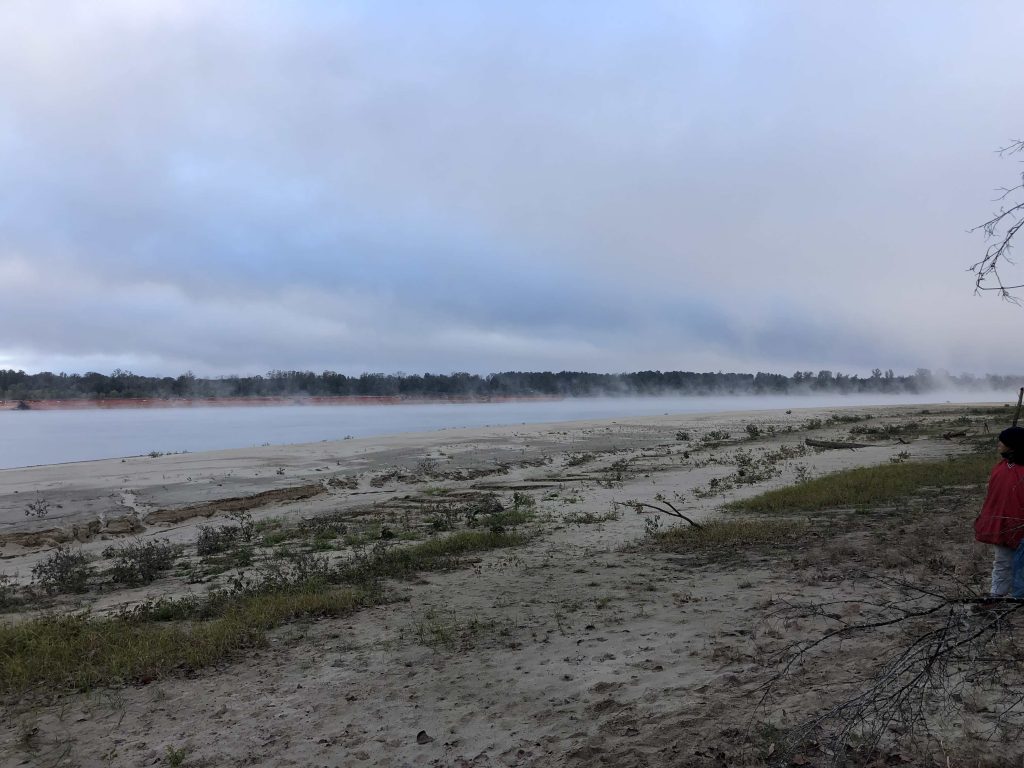
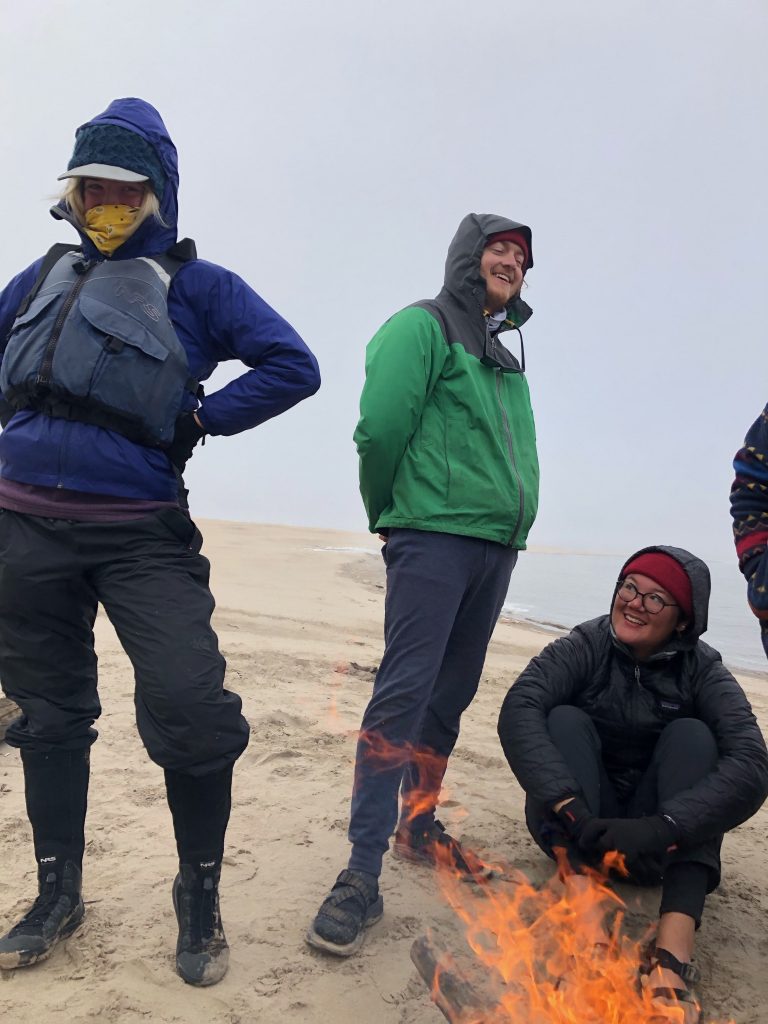
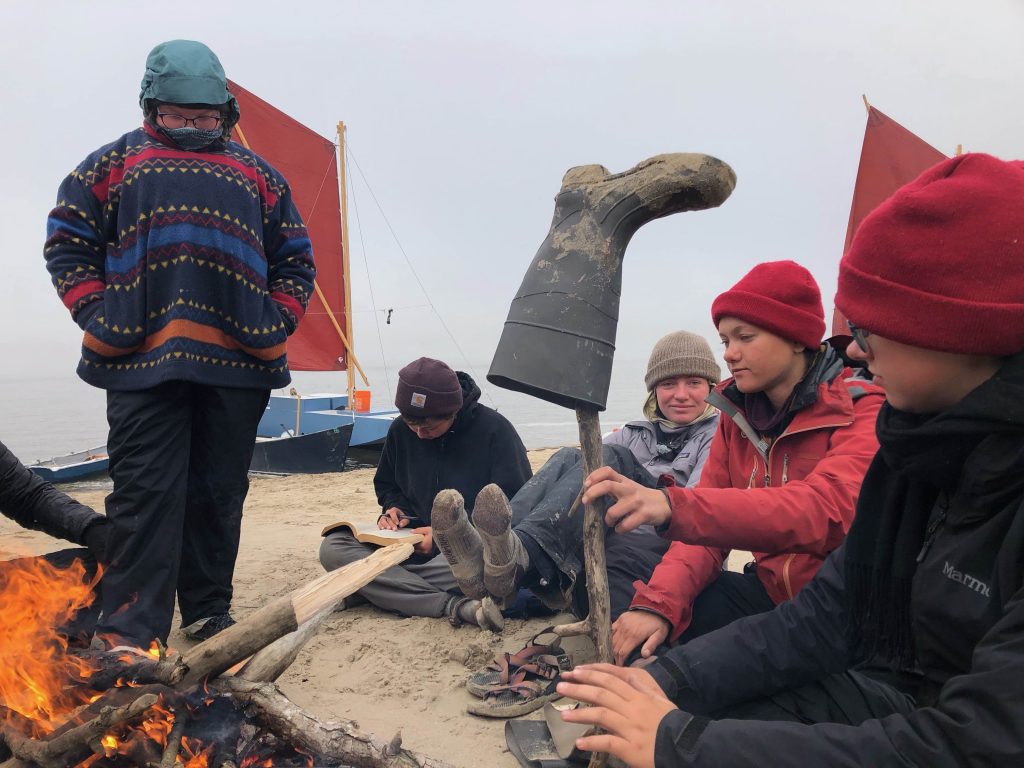
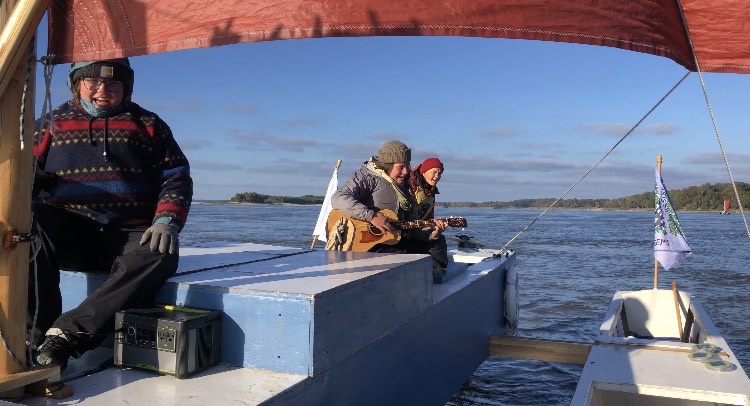
November 4: Day 69
Today, we left Greenville, MS and got back on the water. We had grits and sweet potatoes for breakfast. It has been super cold the last few days and the warm, mushy breakfast tasted better than ever.
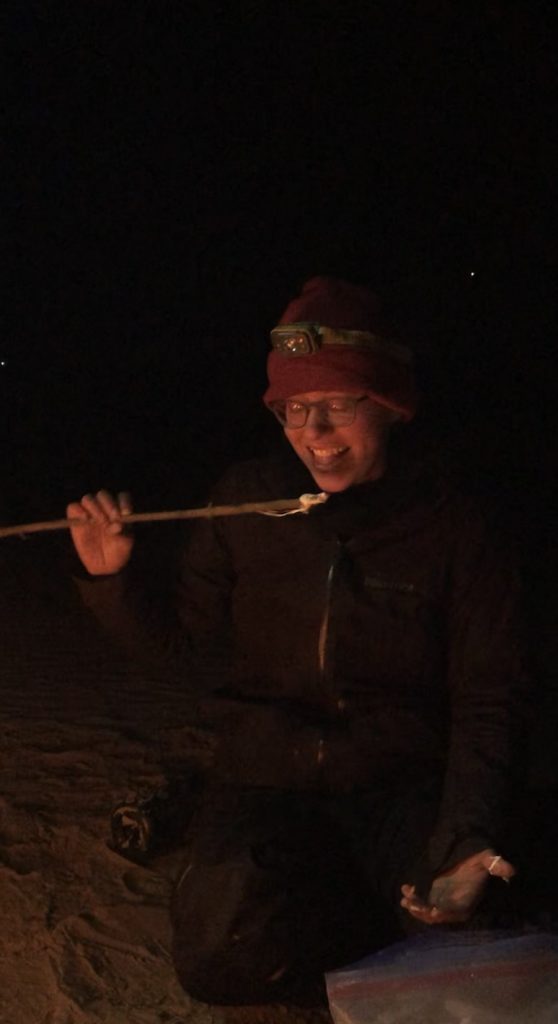
[MJ]
November 3: Day 68
Today was our layover day at Warfield Point Park in Greenville. There was a rain storm that passed through, so we spent most of the day in our tents studying, reading, and relaxing from transiting.
We were able to meet a river angel, John Keen, at the campground, who generously gave us a ride into town to resupply on groceries and help with laundry.
At the end of our cold and rainy day, we had a nice hot meal of spaghetti to enjoy around the fire.
[Sarah]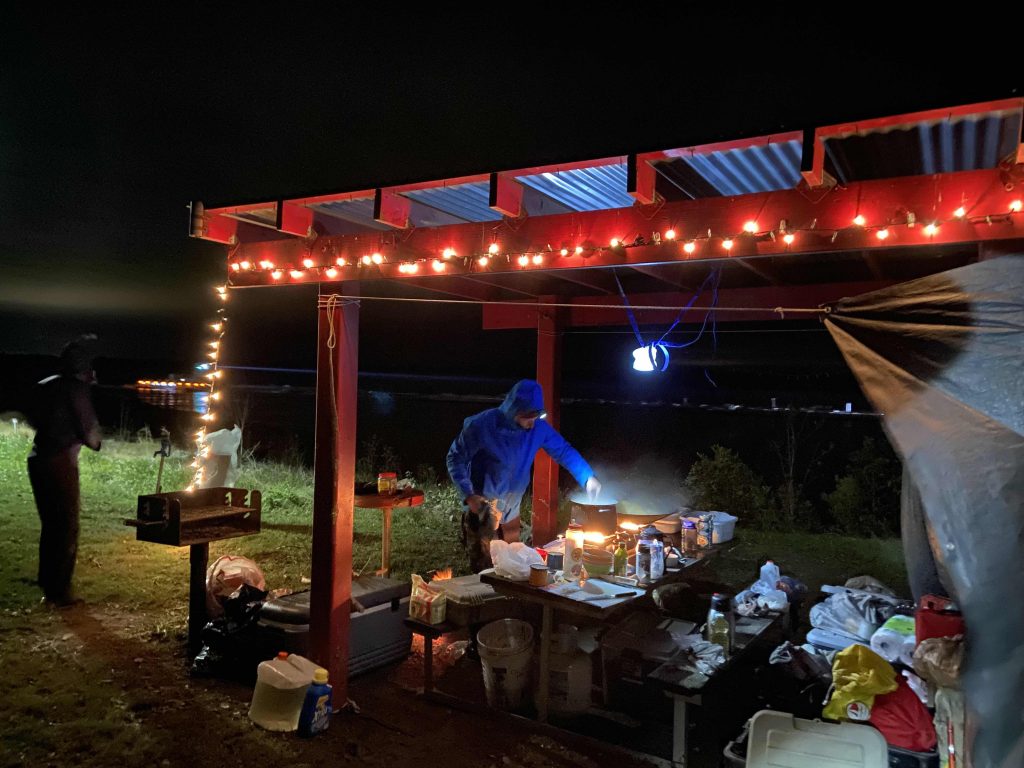
November 2: Day 67
Today was our celebration of Dia de Los Muertos. Below is the ofrenda decorated with pictures of our loved ones and flowers painted and made by the crew. We had a lovely ceremony around a blazing fire, and told stories of our loved ones. I had a handful of photos of my family, however, many I had never met, all but one; my Grandpa Mel. I told a story about one of the last times it was just me and him. We sat in silence watching an NBA game, and at one point I left the room to get him some water, and I remember walking back in and watching him sit there quietly watching the game, and I knew that there was no place he’d rather be. That’s how he made everyone who met him feel like they were the only person in the world he wanted to talk to and be with. One of the kindest souls I’ve ever had the privilege of knowing. This is one of many beautiful memories we heard that night. And I am so grateful to have been a part of this, because this is the closest I’ve felt to him since his passing.
I love you grandpa, we love all of you.
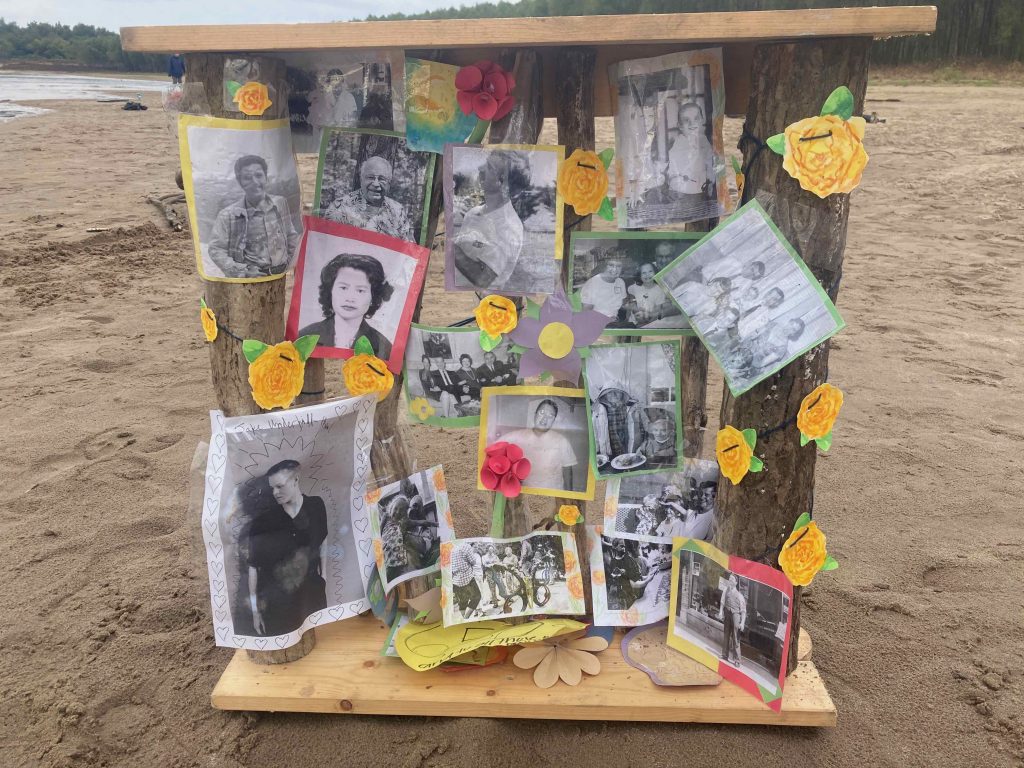
[Dylan]
November 1: Day 66
Happy November everyone! The crew is having a hard time believing it’s already been 2 months since we started our journey! The sun came out today while we were sailing which made a pleasant transit day to our river island. Some crew members were so hot they took a dip in the big river. After this we got to set up camp, read/ relax, make delicious vegetable curry and have time to set up the ofrenda frame for Dia de los muertos. We sat around the fire and the photos around the ofrenda as we were joined by our ancestors and spirits of our loved ones. This ceremony got us out of our normal routine, and it was beautiful to share ourselves and families in new ways.
<
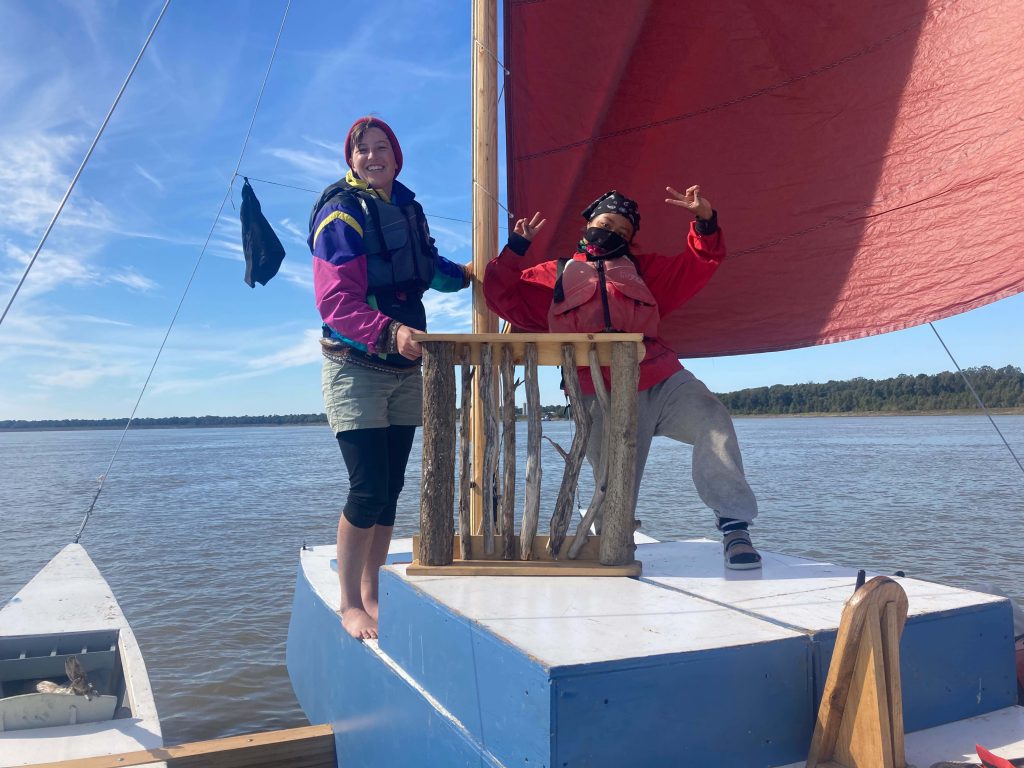
October 31: day 65
This morning we were woken up to a dense fog that encompassed our whole campsite at river mile 610. This beautiful fog was lifted, and sunshine and blue skies welcomed us along with a north wind to help us continue our journey south. Throughout the day, we were able to continue practicing how to take more ownership of our transit days as students in our expedition. We did another rotation of roles for each student to have on the two Water Striders and took advantage of the sunshine and wind for a lovely sail day. When we arrived at our campsite for the night on Island no. 71, we set up our tents to dry after the morning dew made them quite wet as we packed up earlier in the morning.
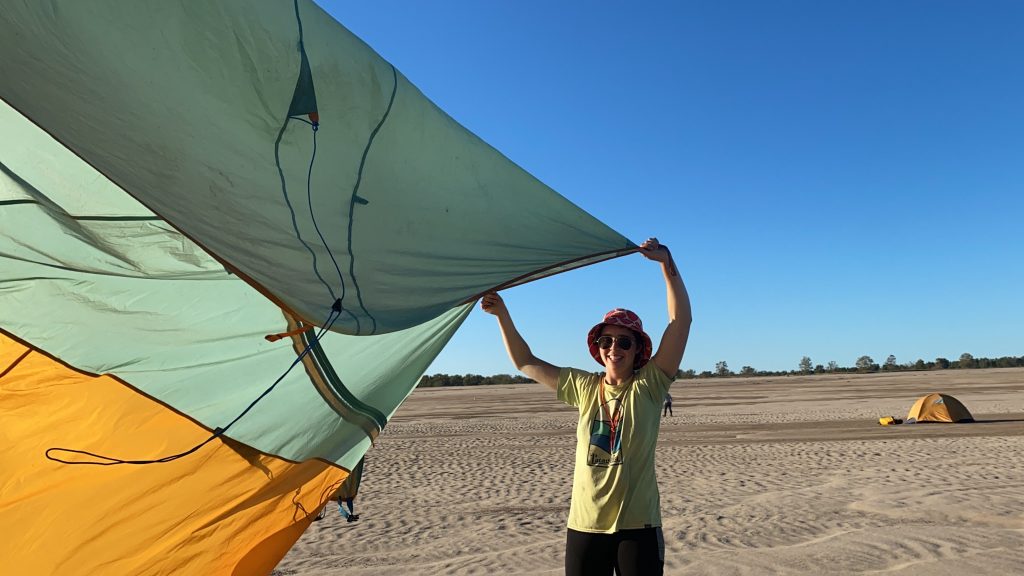
To celebrate Halloween, some of our crew created makeshift costumes to wear for the rest of the evening.
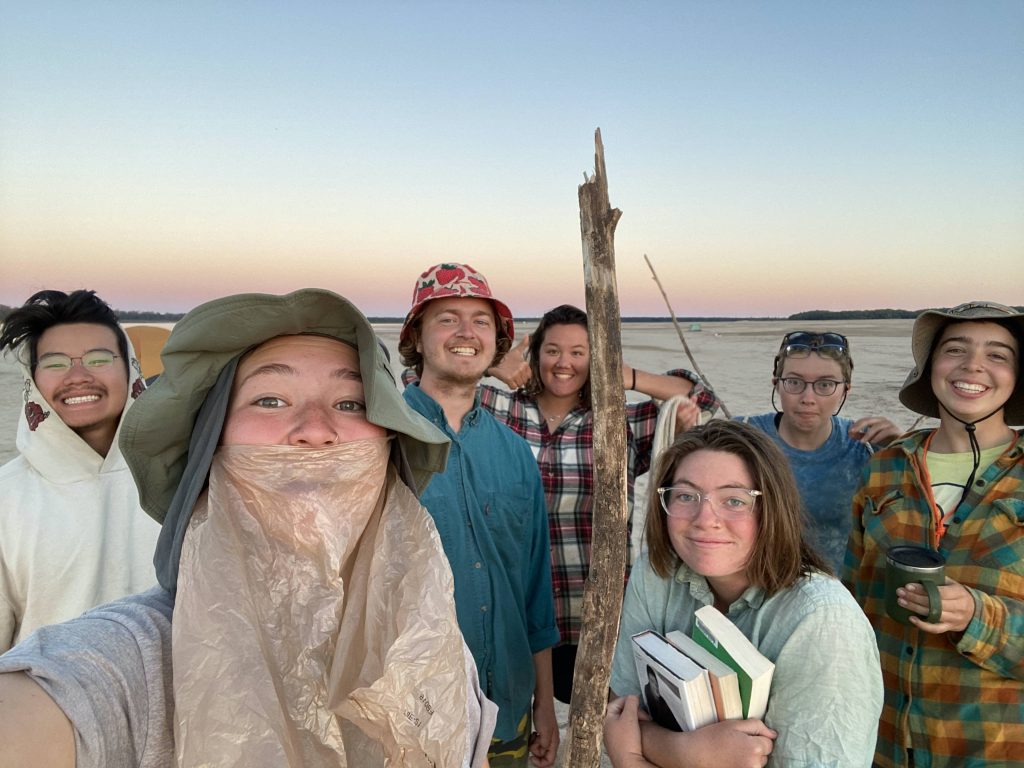 The clear skies brought the cold air out, so for dinner we made some warm soup, and all gathered around the campfire to end the night.
The clear skies brought the cold air out, so for dinner we made some warm soup, and all gathered around the campfire to end the night.
[Megan]
October 29: Day 63
Today we packed up from our cold layover and got back on the river! We had an exciting visitor in the morning who we had been hearing about for the entire trip. John Ruskey is a river guide who founded the Quapaw Canoe Company, the first outfitting company on the lower Mississippi River. He is incredibly knowledgeable, and we’ve been referencing his online river guide, the Rivergator, as we travel the lower river. He welcomed us to shore in Helena, Arkansas with the beat of a drum then got on board Water Strider 1 with some very special treats: fresh persimmons and tea made of ginger and yaupon, which is the only caffeinated plant native to North America. The weather had lightened up from the last few days, but it was still a bit chilly and the tea was more than welcome. With a fair northern breeze we sailed quickly and dropped off our visitor after about an hour, then continued on to find a new camp.
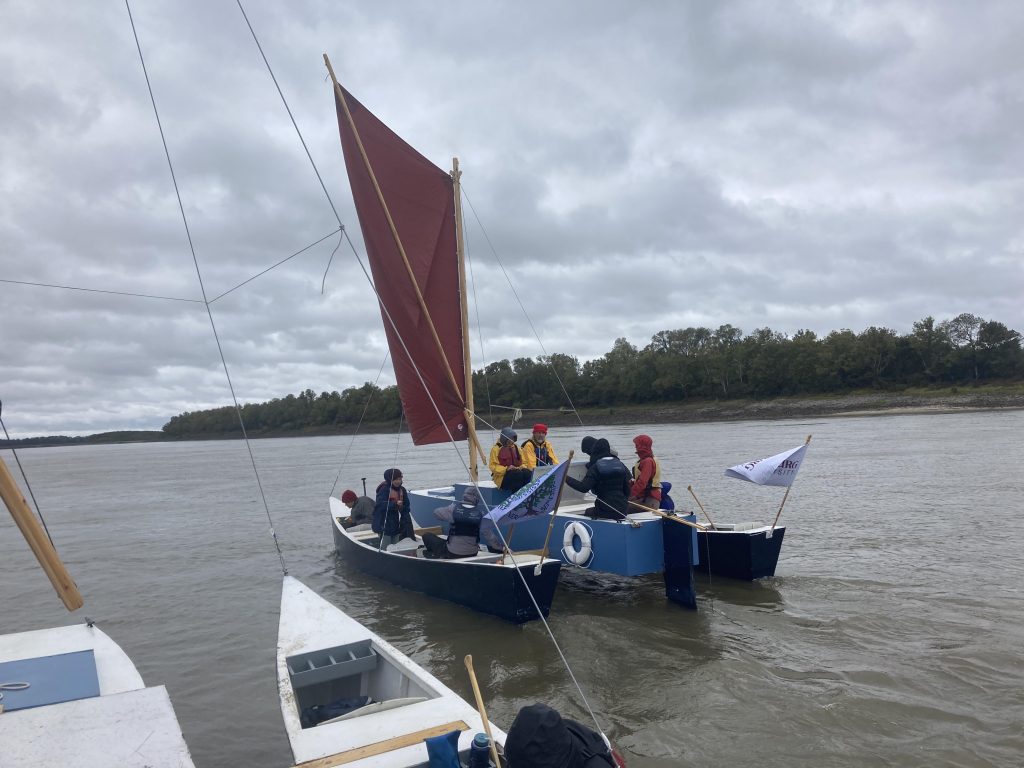
October 28: Day 62
October 27: Day 61
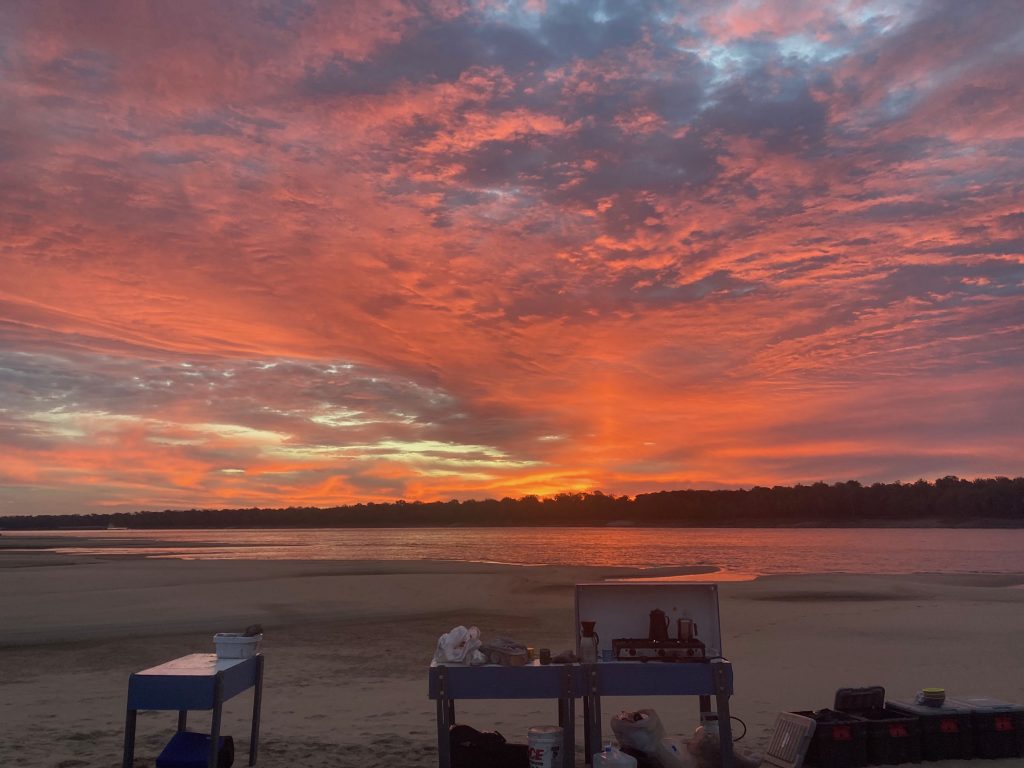
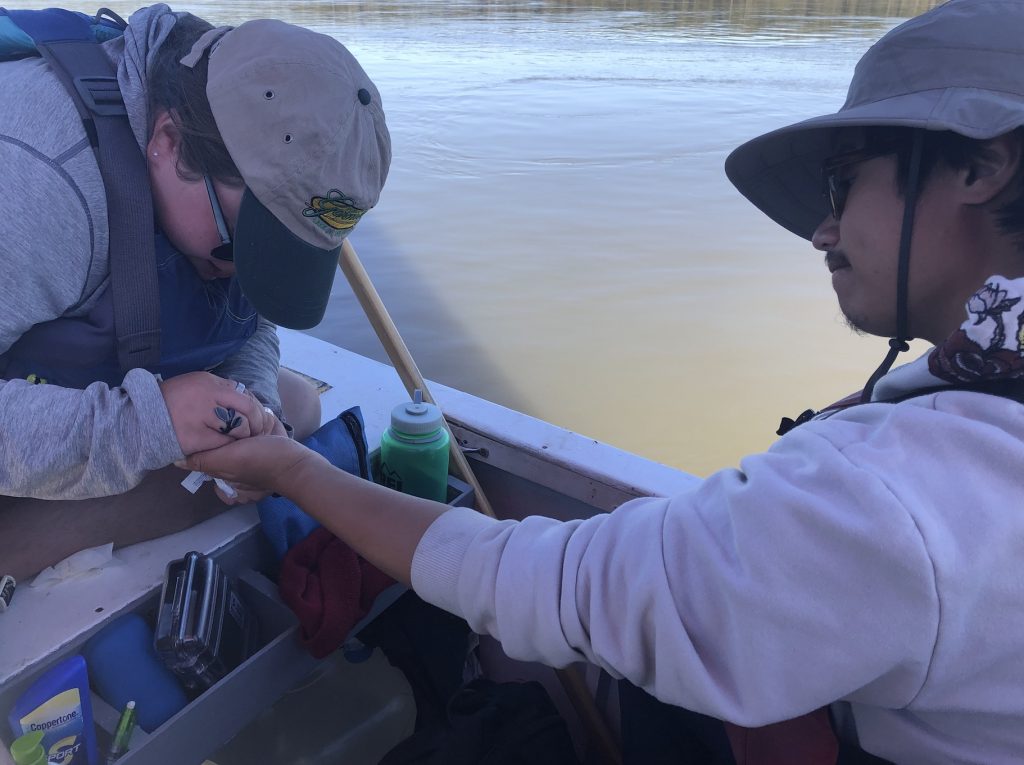
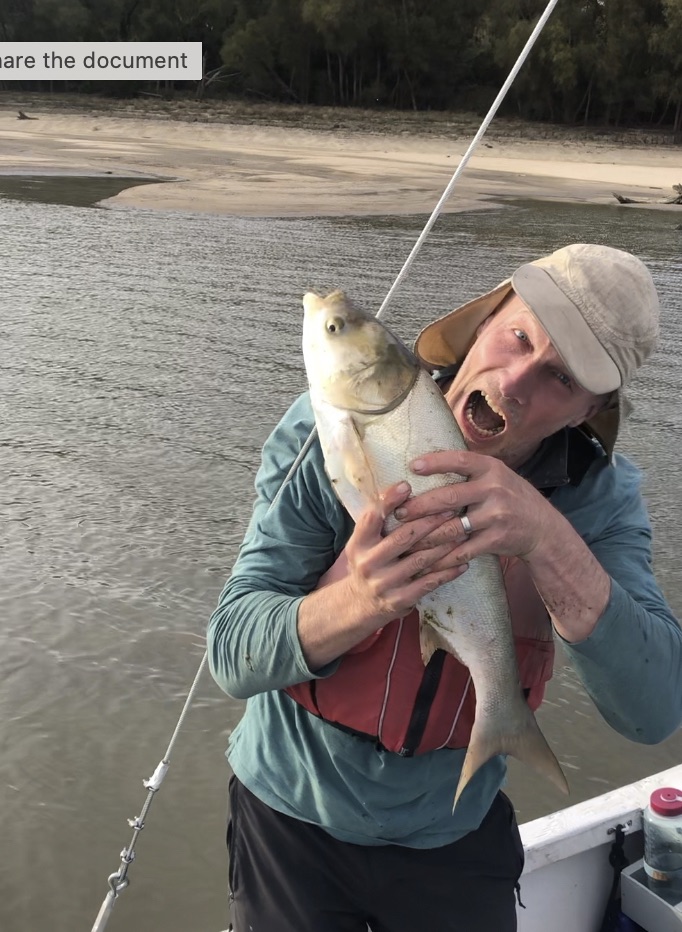
Megan and I were on for dinner duty tonight and made squash soup. We had a cozy campfire and enjoyed this fall delight immensely. The next morning we learned (the hard way) about changing water elevations on the Mississippi and ended up needing to draaaggg the boats out of the sandy shore.
October 25: Day 59
Today was our second day on the lower river. We had a forecast of south winds, and got started sailing in the morning. About an hour and a half into the day, Water Strider 1’s rudder had broken off the boat.
For this emergency, both boats paddled to the shore of the nearest island, Cat Island. We delegated some jobs to help repair, set up and eat lunch, or just take a break on shore. We used pieces of our center board, cart handles, and other pieces of wood and tools we could find to make it work. After a few hours, our team had repaired the new rudder, officially called the Cat Island Rudder.
Although it was a stressful situation, it was handled well to keep us safe and travel ready again.
[Sarah]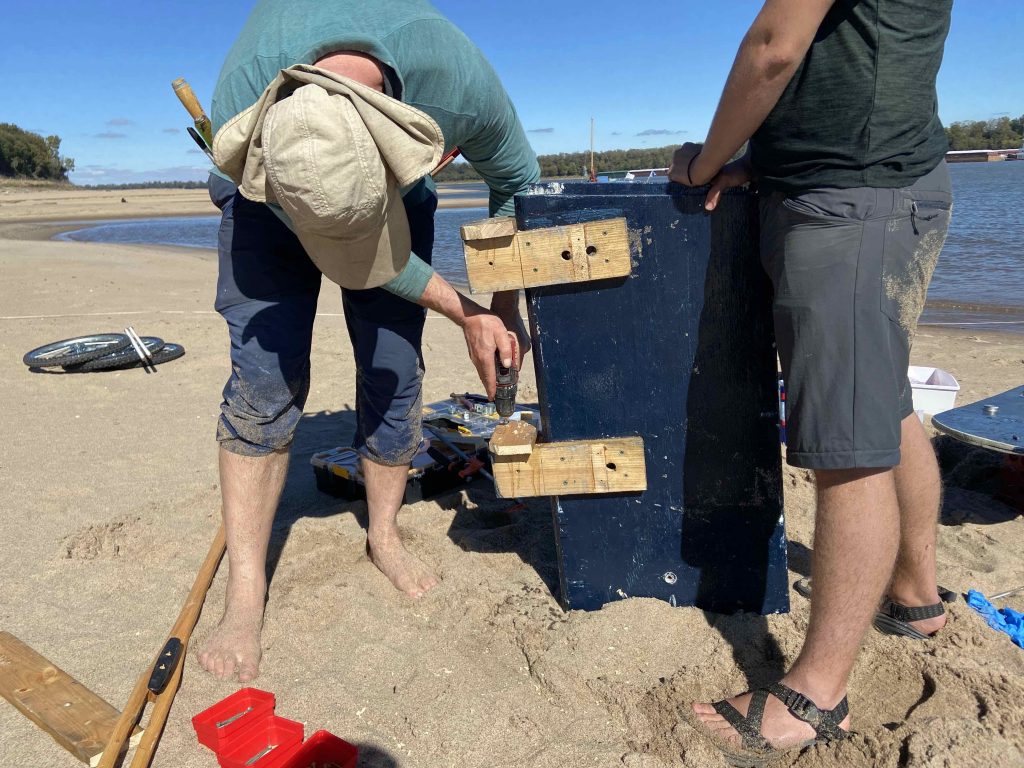
October 24: Day 58
Today we began our second phase of the Journey on the lower Part of the Mississippi. Extremely strong wind head wind, we were left completely in awe by how different the upper and lower river differed. We ended up traveling 35 miles that day which was nearly the same as our longest sailing day on the upper river with a tailwind. We faced a tailwind today, and we’re traveling faster tacking than paddling. No more locks and dams, just the open water, and it truly felt like a new start.
[Dylan]October 23: Day 57
Today was our last day in Memphis! Prepping for part two of the expedition meant getting the boats back in the water. A seemingly simple task one might think. But this required the whole day and took everyone’s help to get the separate boat pieces onto wheels and down the giant hill at the Mud Island Marina. Once that was done, we put the pieces together and paddled over to our launch spot so we would be ready for an early morning take off. We celebrated our work with pizza from Aldos and ice cream (the perfect end to any day).
October 22: Day 56
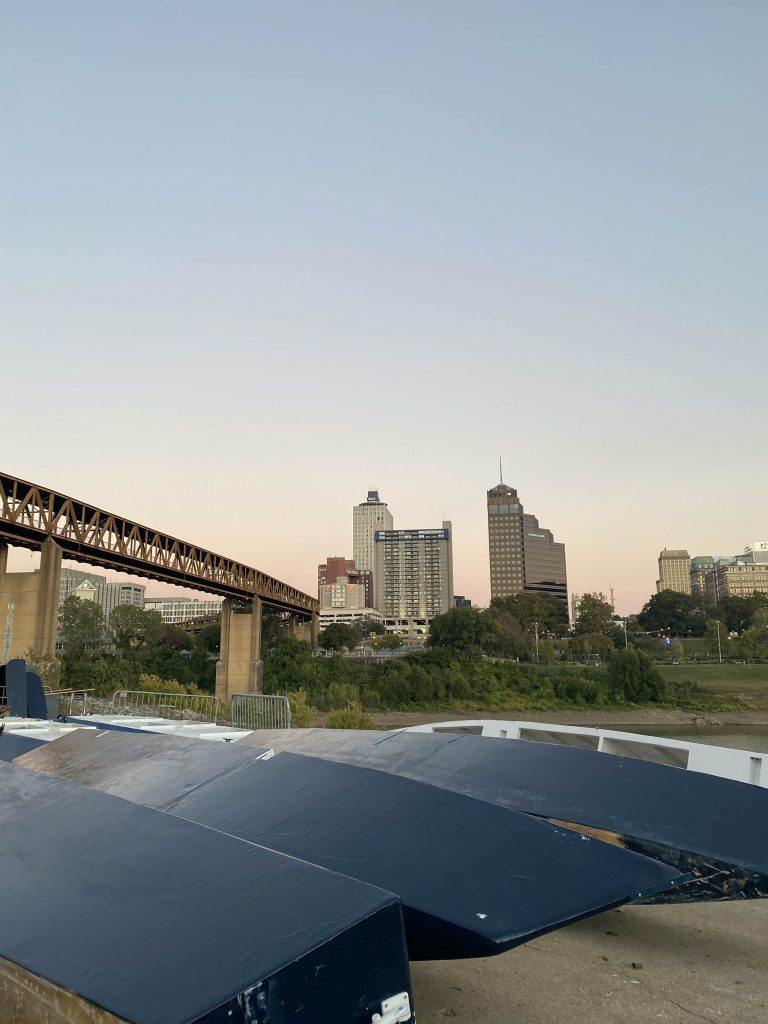
October 20: Day 54
This was a rest day for me. While most of the group went into Memphis, Dylan and I (Nial) stayed at camp in T.O. Fuller State Park. I’ve been learning a lot on this trip about how to take care of myself, and spending occasional days alone has been really important. Today, I went on a long walk around the park. It’s startling to move so quickly to a new place after traveling so slowly for so long. The forest here is nearly unrecognizable. I’ve noticed that there are a lot more vines on the trees as well as a lot of plants with compound leaves, where each leaf is made up of multiple “leaflets.” The park is adjacent to the Chucalissa Indian Village archaeological site which has an arboretum-style nature walk accessible from the park. It was lovely, after wondering so much about the new plants, to learn some of their names.
A few folks came back from town for dinner and we had delicious spring rolls, then everyone headed into town. The folks in town had won over a bar with their river stories and when we joined the group we were greeted by everyone with a hero’s welcome!
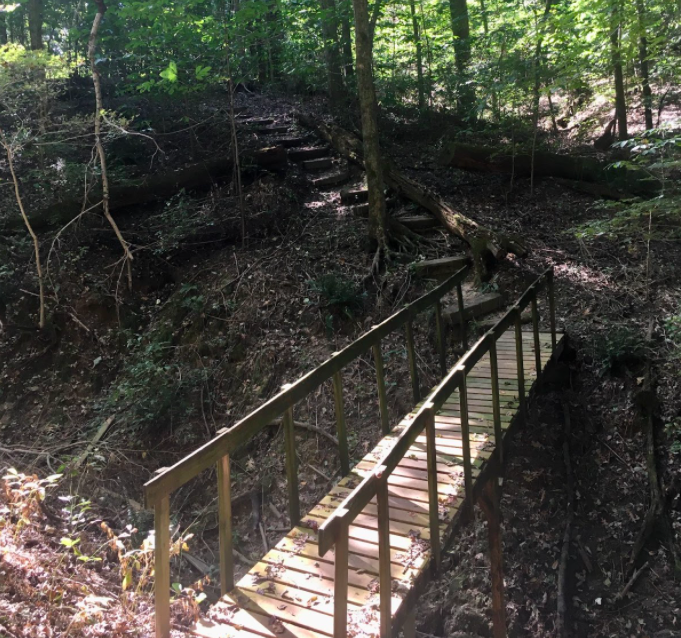
October 17: Day 51
Today, we spent the whole day “portaging” by van from the Quad Cities to Memphis TN. Most of us spent the night at Elias’ brother’s apartment and we woke up at 6:30 to leave and get to Memphis in time to unload to boats before dark. We left a day later than expected because of technical difficulties coordinating with a truck that took our boats there. But we made it! I made a guide to “life on the Mississippi” to pass the time while in the van.
Oct. 16: Day 50
This is about the halfway point of our journey (we are scheduled to return to Minneapolis about 100 days after we departed) and marked the transition from the Upper to the Lower Mississippi River. We have finished our initial 350 miles of “saiddling” or “paddailing” (Chris Fink’s neologisms for our hybrid mode of transport) and today the guides and students loaded the disassembled Water Striders onto a 40-foot “hotshot” trailer for the shuttle down to Memphis. After various back-and-forth exchanges with the transportation broker and a high degree of uncertainty regarding the timing of the transport, the driver Hugo showed up at the Illiniwek State Forest Preserve campground and “Team Gumption” sprung into action. Gumption has become a key part of our vocabulary (first introduced by Steven in reference to the spice level of particular dishes we were cooking) and captures some of the spirit of the group–capable and determined (and maybe a little spicy sometimes). The students are getting to know these boats and the gear very well by now, and with the guidance of Hannah, Nell, and Steven, got it all loaded onto the flatbed, with a little energy left over for some inverted posing at the end.
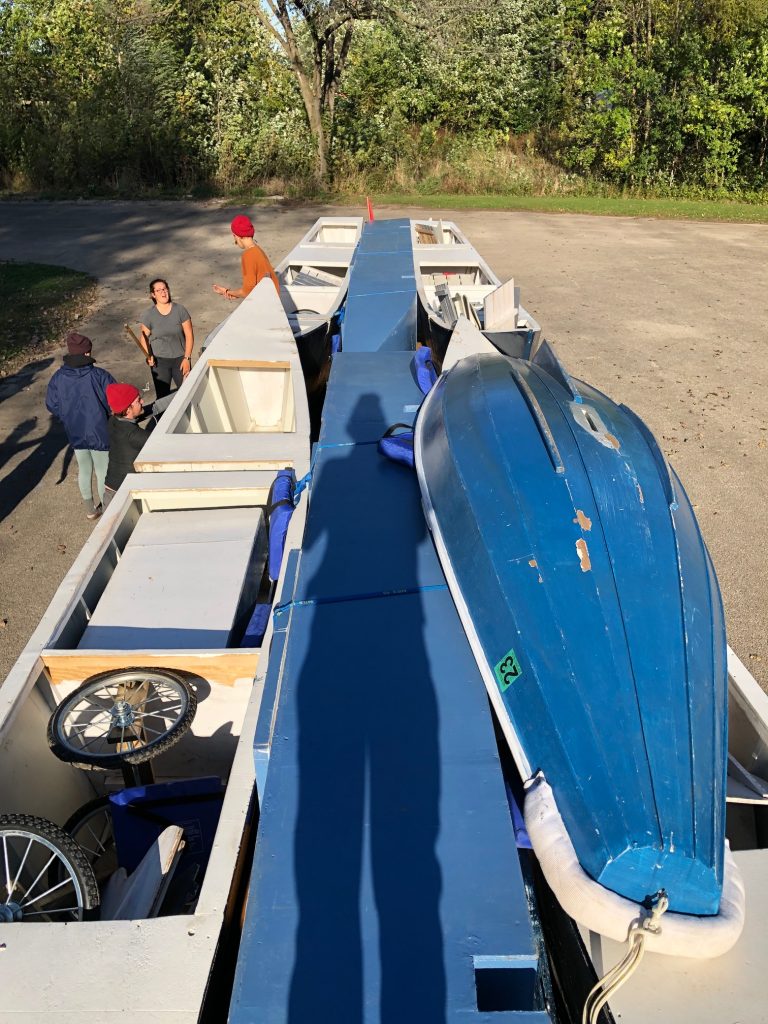
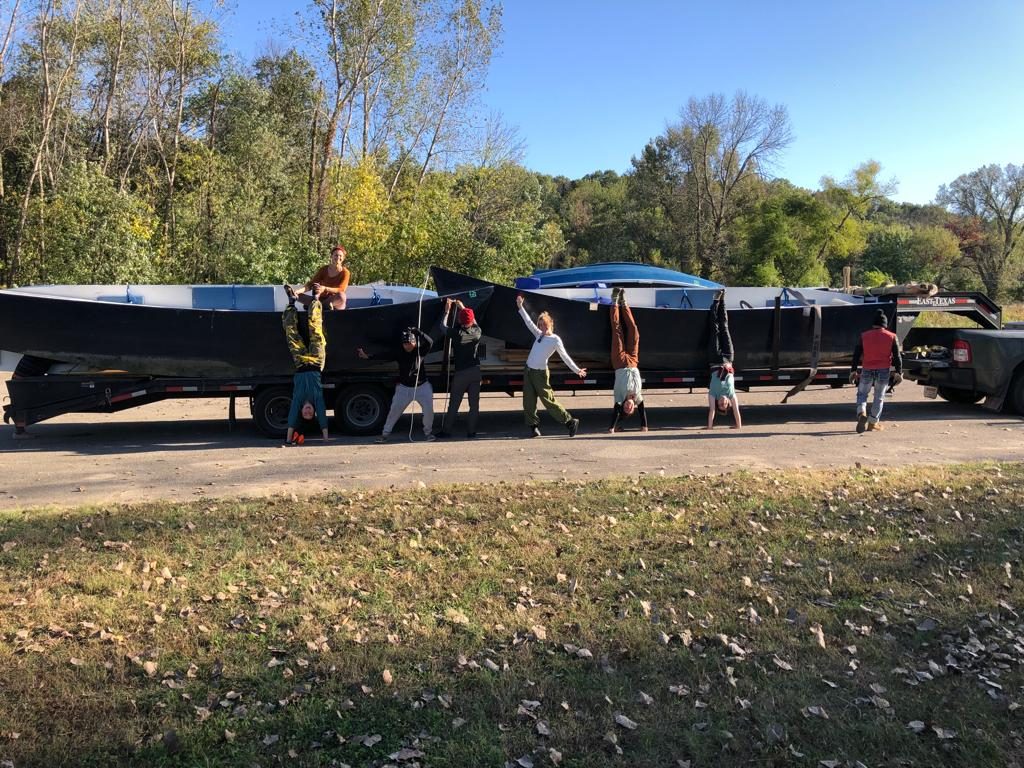
The boats now head to Memphis, and the lower river. In the Quad Cities, the Mississippi flows at a rate of about 37,000 cubic feet/second (CFS). In Memphis, below the confluences of the Illinois, Missouri, and (most notably) the Ohio, the current volume of the Mississippi is around 260,000 CFS or about seven times as much water. The river is low now (average flow in Memphis is more like 700,000). And the river levels can fluctuate wildly, with the record discharge recorded at 3,000,000 CFS, and the record low of 159,000 CFS) We will be entering into a different kind of space, in many ways, and it is exciting to be entering into this next phase of the journey. The students have had their training period, and will begin to take on more leadership roles on the trip, as we enter into the so-called “Wild Miles” or relatively undeveloped river that characterize the lower Mississippi in between the cities of Memphis, Greenville, Vicksburg, Natchez, and Baton Rouge. But it is also very much an Anthropocene River, profoundly shaped in a myriad of ways by engineering, agriculture, industry, and climate change. We will explore these entanglements and interventions through an online course developed in conjunction with the Haus der Kulturen der Welt, and the Anthropocene River Project.
[Joe]
Oct. 15: Day 49
Today was another layover day outside the Quad Cities. This morning we had a visit from Olivia, who works with American Rivers. We were able to hear and learn from her and her work, which is mostly working to mitigate the consequential effects from the Army Corps of Engineers and other harmful groups on the wildlife and habitats down the river. She talked to us about her efforts for dam removal, habitat restoration, and the different social movements that the organization promotes on the river and off of it.
After that, we headed into Davenport to walk around the city to bookstores, libraries, and cafes to study and work.
Olivia then generously offered to cook dinner for us as part of her family’s Friday Pizza Night tradition. She told us how she had helped host other River Rats, but since the pandemic has not recently. We enjoyed the family’s company and meal (and couch) and entertained their kids and pets. We ended the night with some hot cider and thank you’s & goodbyes.
Oct. 14: Day 50
Today we took apart the boats, ‘twas tons of work. We unloaded the boats (at least what was left), removed all the seats and floor boards, and split into different groups to speed up the process. MJ and I were assigned to sand whatever was given to us (paddles, tables, etc.), while some painted and others continued to work on the deconstruction of the boat. Mid day we had a brief lunch, and then continued our previously assigned tasks. Mid-afternoon nearly everyone helped take apart the boats. We started with the bridge decks’ and proceeded to load items into them as they sat atop of the Hugo’s (our driver) carrier. Later we finished up with the four hulls and filled whatever we could in there; overall it only took us an hour and a half. Finished the night at Elias’s brothers apartment for pizza, ice-cream, and movies.
[Dylan]
October 13: Day 47
This very morning . . .
- The refreshing waves of hot shower water dripping down my back
- The smell of essential oils being ever so gently combed into your soft hair
- The sound of birds chirping about how joyous the morning sun is
- The kisses of rainfall on a fresh clean shirt
- The texture of a soaking wet bagel as you try to scarf down a breakfast in the thunderous downpour
- The rattling headache that remind you that you haven’t had a cup of coffee yet
- The cool fall breeze that carries a prayer off of your lips to the soul of the world
- The gratitude of a dry tent
- The hardness of the ground you have become accustomed to by the unfortunate fate of a malfunctioning sleeping mat
- The heartwarming happy birthday tune sung to Kelly
- The flutter of butterflies when you receive a morning text from that special someone
I would have never noticed these simple things if I would have stayed indoors.
-z
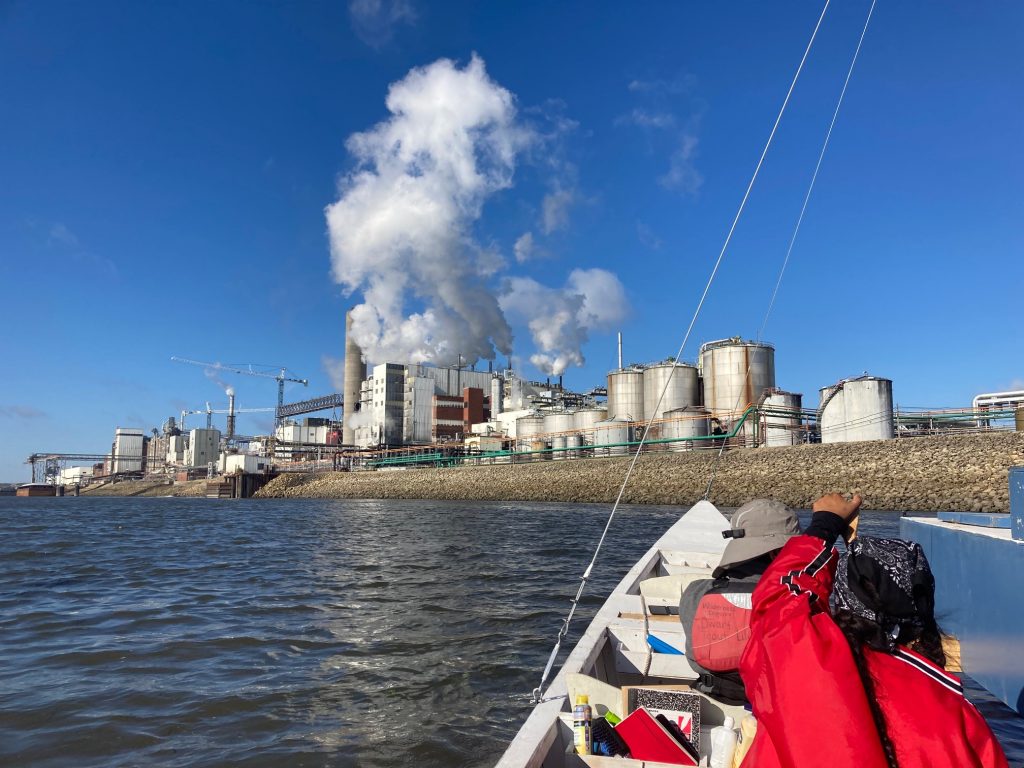
October 11: Day 45
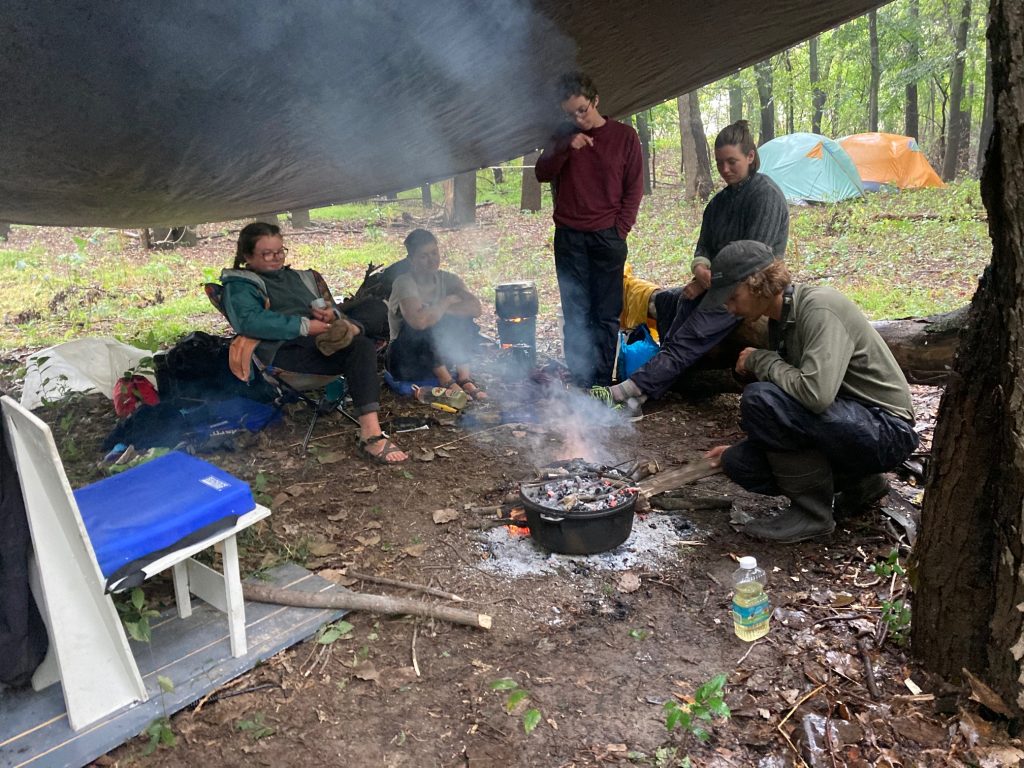
October 10: Day 44
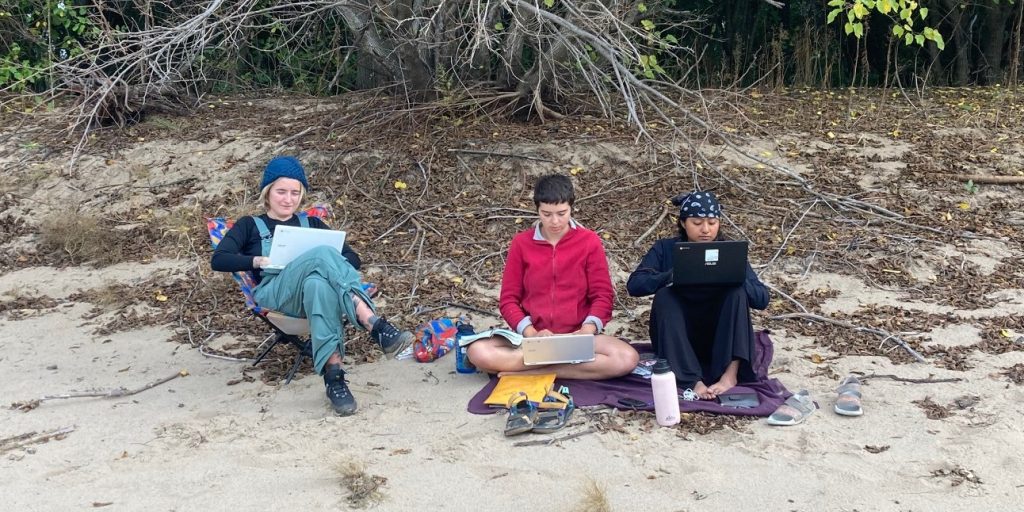
October 9: Day 43
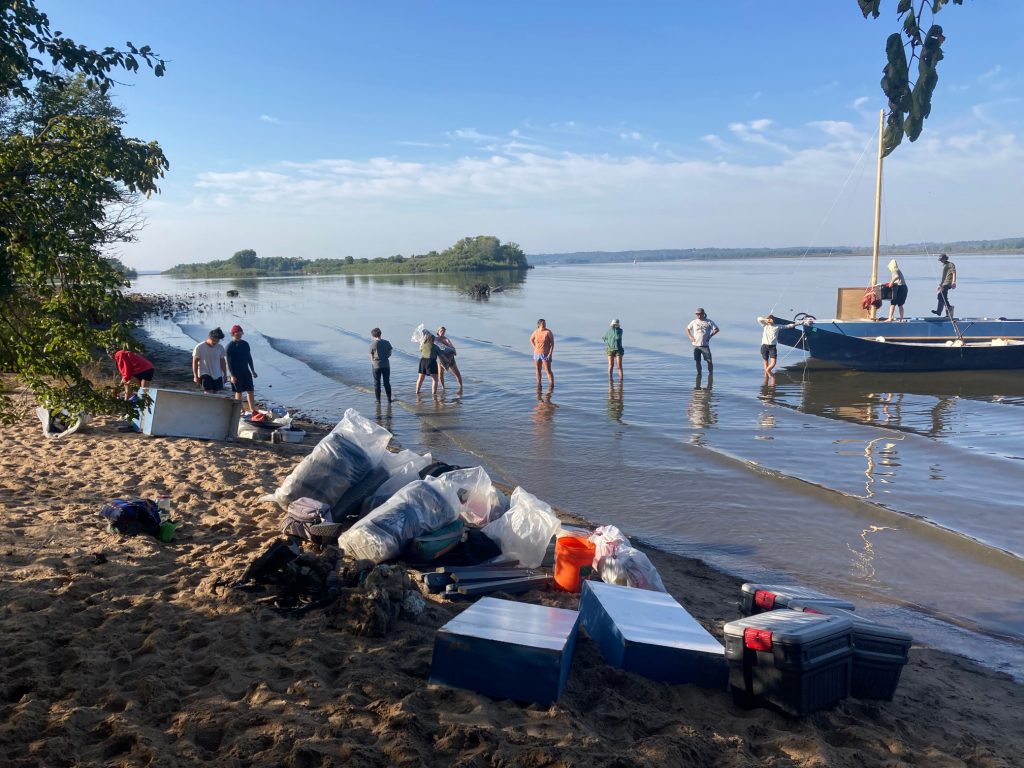
October 8: Day 42
THE “BONEYARD ISLAND” Today, we spent the night on an island where we met up with Chris Fink, an English Professor at Beloit College, a writer, and lover of poetry.
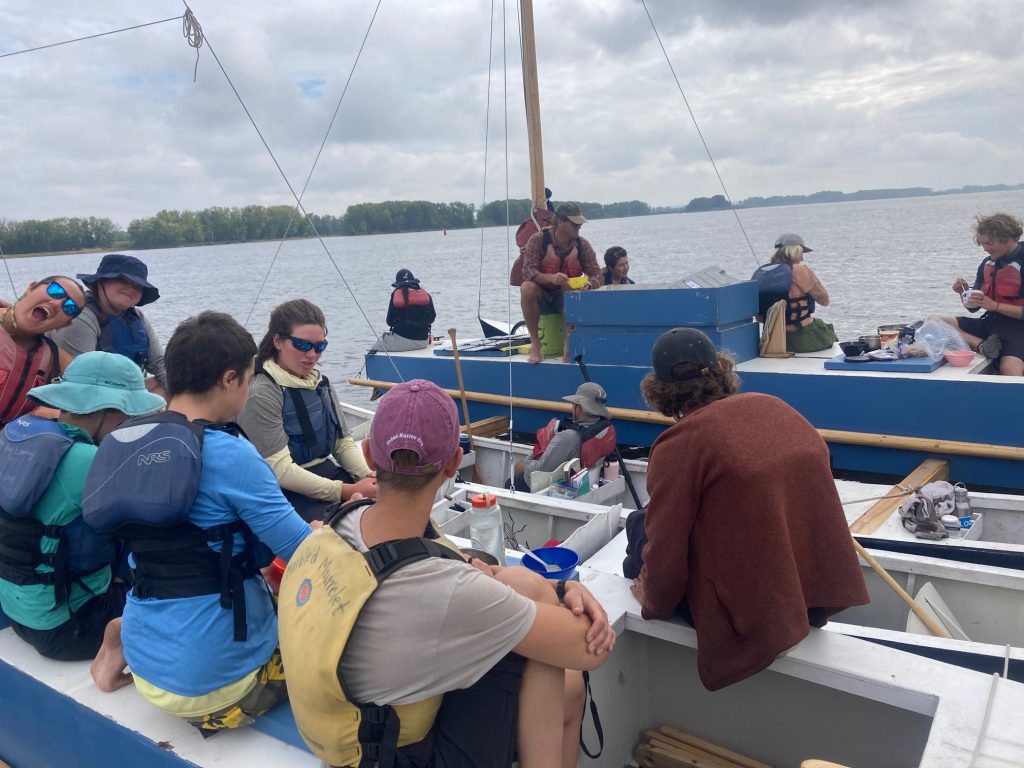
Chris Fink (seated on bucket at center), Creative Writing Professor from Beloit College, joined us for a few days. It was great having him work with students on some creative writing projects and readings. (Kelly was very excited!)
The island that we chose to stay at is filled with bones! Chris Fink noted that some of the bones that we saw (that kind of looked like shells) were actually bones that hang out inside of fish ears to help them hear. He said that certain indigenous groups have traditionally used them to make jewelry.
We finished off the day well when Angelica and Zoe made some incredible enchiladas for dinner. We had a group “check in” in a circle at the fire where we played “rose, bud, thorn”. My rose today was setting up the Latrine with Elias- we found an ideal location and it filled us with pride.
[MJ]
October 6: Day 40
Today was another transit day to our layover spot at Santa Fe Beach (River Mile 539.5). We had oatmeal for breakfast and then packed up the boats and set off. We got to paddle and sail a bit today and set up camp and prepare for rain in the coming days. We made chimichangas and brownies to enjoy by the fire.
Tonight was a new moon, and we celebrated by sitting around our fire and taking time to reflect on the past month and think about the next one. We each got a piece of paper and wrote on one side what we would like to keep or take into the next month. On the other side, we wrote down things to let go of or give up while entering the next moon phase. Then when we were ready, we threw the papers into the fire and burned them together. We ended the night with some guitar playing and singing before hitting the hay.
[Sarah]October 5: Day 39
Today was a transit day where we said goodbye to Dubuque Iowa and ventured off towards our next big destination, the Quad Cities. It was going to be a week and some change before arriving. Today Joe met with people about our Independent studies and the progress we had made on them.
[Dylan]October 4: Day 38
Massey Marina greeted the crew with a lovely campsite and the cool fall breeze. The relaxed pace of the day helped the crew reset, reflect, restock, and revel in the beauty of the day. This layover day was sent catching up on readings and exploring Dubuque Iowa.
On this day I have been reflecting on this prompt “My life is a miracle that cannot be recreated. Each day should be lived on purpose. Shifting intentionality about being with others as well as getting in touch with my body and emotions in real time and learning to express them” – adrienne maree brown
[Zoe]October 3: Day 37
September 30: Day 34
Today was a paddling day. We left Prairie Du Chien yesterday morning and have had two full days of paddling since (~25 miles!!). We are getting very strong. After a strenuous few hours of paddling and class in the sun there is nothing like jumping off the boat into the Sippi!
This afternoon, we arrived at an awesome island where we will lay over for a couple days in order to get a tailwind and wait out expected rain.
Stargazing has been amazing on this island. Joe gave us an enlightening tour of the galaxy this evening using a light laser to point out constellations including Arcturus, Big Dipper, Little Dipper, Corona Borealis, Delphinius, North Star, a couple astrological constellations like Libra and Cancer, and the Summer Triangle (and Swan).
All in all, we are in our #growthzone. Yesterday, we had a group check in and collectively determined that it was a good time for students to start taking on more tasks. This will help us develop a sense of agency and competence and take weight off of our guide’s shoulders!
After about 30 days on the river, I’m already feeling like I have more confidence and mental fortitude. Things like setting up latrines, paddling all day, and having group check-ins seem to be making us a more trusting and cohesive group. Excited to see where we go from here and watch everybody grow, vibe and thrive <3
[MJ]
Water Strider Watercolor art by me too, sunset photo by Joe Underhill
September 27: Day 31
River Mile: 636
Today was another full layover day in Prairie du Chien. As the morning started, we made banana pancakes and split off to work on our respective plans. Some of us went to revisit Effigy Mounds National Monument in Harpers Ferry and others went into town to continue our readings and studying for our courses.
Later in the day we got to shower, thanks to the kindness of Cindy, who lent their time to drive us.
We then ate dinner in a spare tent to escape the mosquitoes together to end the day!
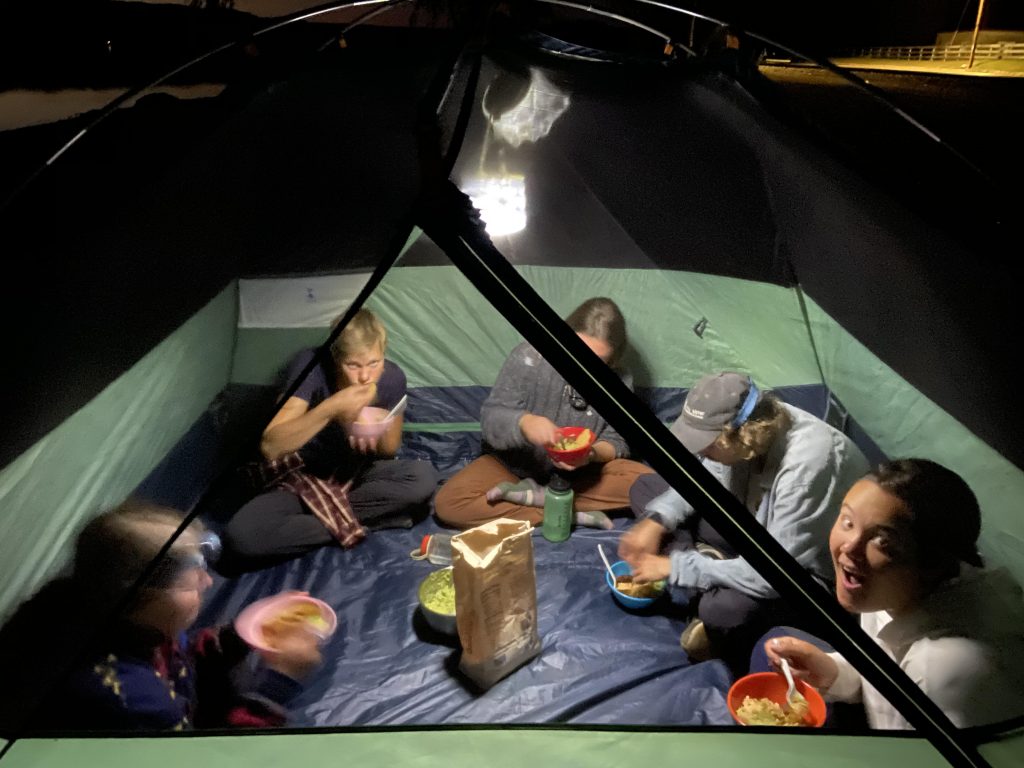
Day 30: Sept. 26
The generosity of river people is something special – as the famous song Proud Mary goes “people on the river are happy to give” is no joke. In the morning we were greeted by Prairie Du Chien local named Wendy. She worked at the town’s only fair trade organic coffee shop and offered to bring us all hand crafted drinks. We sipped coffee and shared stories over a delicious omelette breakfast bar. Next in the day was our Sunday water blessing. We shared a land acknowledgment, history of the land and thanks for the water. We then played a riveting game of soccer where the crew worked make shift a field and goal post with possessions around camp. The day concluded with some relaxation and time to catch up on class readings.
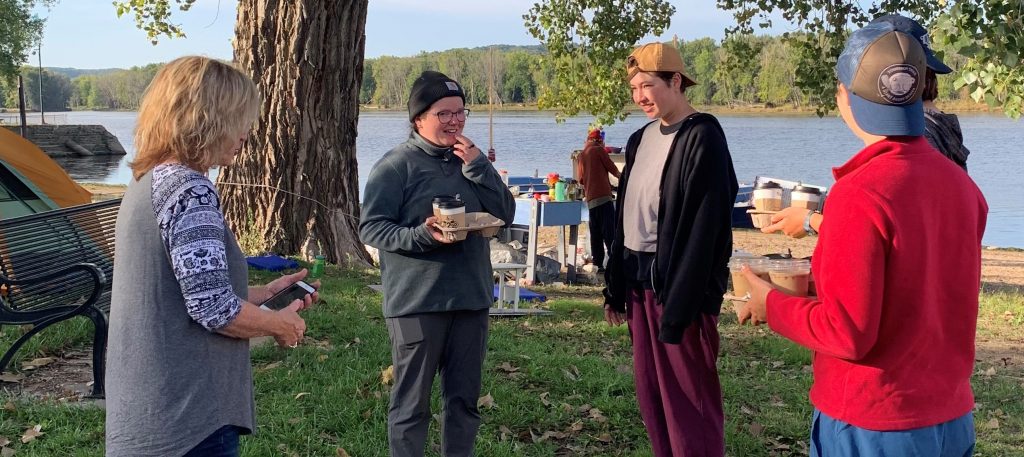
Day 29: Sept. 25
Reading a copy of Emergent Strategy at the local coffee shop, I want to share with you some of the teaching from adrienne maree brown
Ways in which western contents are socialized to work against respecting the emergent process of the world and each other:
- We learn to disrespect indigenous and direct ties to land
- We learn the testing deadlines are the reason to take action
- We learn to deny our skills and longing to do work that occupies hours without inspiring our greatness
- We learned that the natural world is to be manicured, control and pillaged to support our consumer lives
People keep asking “why did you choose to do river semester?” I would answer in response to the text stated above. It is one thing to read these words, put the book away and go back to life as we know it. It is another to live with these ideas and how they shape how we move and present ourselves in the word. As I young person I want to be challenged and unlearn these ways in which we disrespect the natural process. I want to feel rewarded by intentional community and time in outdoor spaces. I want to pay closer attention to how the natural world solves problems and how that can transform the world I grow up, and the world my children will one day live in.
Day 28: Sept. 24

Day 25: Sept. 21
Today was a transit day so we got started early. After our big rainstorm and water blessing from the night before, on the night of the full moon, we were ready to go. Later in the day, we spotted several bald eagles while on the water. We ate homemade hummus, tabouli, and yogurt sauce for lunch “on deck” and a delicious papaya salad and tea for dinner on shore that night.
As we were paddling through, we touched on the violent histories and current realities of Victory Wisconsin and surrounding areas. We offered some blessings to the spirits here. This led to a bigger discussion about how to talk about and process historical traumas together as our journey continues.
That night as we slept, we encountered the sounds of coyotes howling and what we believe to be a screech owl.

[MJ]
Day 24: Sept. 20
Day 23: Sept. 19
Today was another layover day in La Crosse which is around river mile 697. There was a south wind so instead of paddling into a headwind we had some time for class where we began to talk and learn about sediment along the river. As a semester-long project in partnership with Catherine Russell at the University of Leicester we will be taking samples of sediment to look at its plastic content. Later in the afternoon we reviewed for our first exam and became more familiar with our remapping project in partnership with Brian Holmes. You can find the project here and look into the many features including following our personal entries about the sites we stay at or other geographic information like indigenous lands, pipeline systems in the Mississippi river watershed, Army Corps navigational charts and more.
Day 22: Sept. 18
River Mile: 697
Today was our first full day in La Crosse, WI. After many days of transit, we dedicated the day to be able to relax, study, and explore the town. We were excited to replenish our travel necessities and be on land for a while.
We also took advantage of having our full crew here to take pictures with our hats and outfits! We were inspired by the movie The Life Aquatic to dress as the sailors in it.
 We were sad to say goodbye to our guide, Emily, as they went back home today.
We were sad to say goodbye to our guide, Emily, as they went back home today.
While in the town, a few of us went to coffee shops to study, or shopped around in bookstores, thrift shops, and restaurants. All in all, it was another great day on the journey!
[Sarah]Sept. 17: Day 21
Today was a transit day (NW wind), where we left our beautiful campground on Richmond Island to make our way to Lacrosse Wisconsin. A long morning of moving all our gear down the driveway and across a sandy beach we launched around 9:00 am. Our day on the boat was typical with sandwiches on the boat, and people reading, writing, listening to music, etc. Landing around 5:00 pm we were greeted by a man on a tractor, who quickly disappeared after telling us, “Put your tents wherever.” Our long day was complete with a delicious meal from our new member Stephenopolis.
[Dylan]Sept. 16: Day 20
Today started with a stunning sunrise and chocolate chip pancakes. After this we enjoyed class under the big pin oak tree. Part of class is learning different sailing knots so our creative wilderness guides set up a thrilling obstacle course that had the crew running up and down the beach (all while becoming faster and more efficient at our knots). After class we trekked through the woods to forage for mushrooms. While exploring through the woods we found signs of beavers along the shore, bones of different animals in the underbrush and dry signs of vegetation from the drought we are currently experiencing. Foraging mushrooms required a sharp focus on location and identification. From our readings we learned about the honorable harvest and held these points close to our hearts while completing this tasks. We were able to bring chicken of the woods and oyster mushrooms back to be cooked and thrown in our pasta dinner.
Much love, Zoe
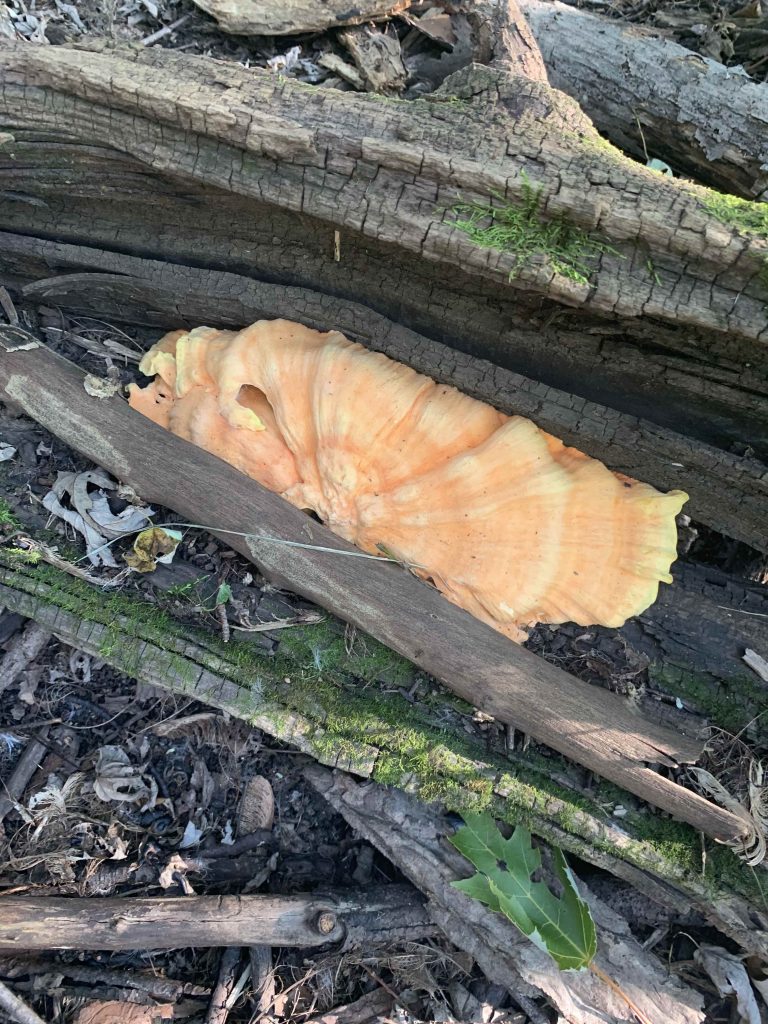
Day 19: Sept. 15
-
Location: River mile 712, “Richmond Island”, located outside Trempealeau, Wisconsin.
-
Conditions and Surrounding: Beautiful sunny day with minimal cloud coverage across the sky. The large pin-oak tree provides shade and cooler temperatures to those who hang in hammocks, sit around the tree trunk, or sit on top of the wide and welcoming branches.
-
Today we welcomed several guests to our camp set-up on what is now known as “Richmond’s Island”. In the morning, we heard from our guest, Natalie Warren, who spoke all about her expedition to Hudson Bay and how it has impacted her life ever since. After Natalie spoke to us all, and we discussed some of the themes that paralleled to our own expedition, we met two new guests who arrived on the shores of the island in a curious form of why there were two catamarans tied up to an island off the Mississippi river. Our first curious guest, Cathy, paddled in her kayak to our shores, and timidly approached us all. As we were talking with Cathy, and were beginning to cook our lunch, we had another guest arrive on the shoreline. Fritz arrived in their self-made vessel and was kind enough to help us with shuttle services for our guests. Natalie and Richard left our crew with the gracious help of Fritz, as Nell and Emily made their way to the mainland to pick up our remaining guide for the semester, Steven! As all these shuttle services were occurring, we had the opportunity for the rest of our crew to clean and organize both Water Striders while the lunch crew continued to make a delicious pasta salad. After a fulfilling meal, we began our class session on knots and boat terminology, with our favorite professor and captain, Joe. All of us students began practicing the bowline knot, from all different angles, how to tie a line in a hanked coil as well as making it off on a cleat. These are the three basic skills that we will soon be evaluated on to have a successful and safe journey south. For the remainder of our class, we did a writing exercise to practice our field note entries. These field notes are a baseline for one of our courses, in which we will each have a unique approach to recording the things around us. We then went around and shared a bit about what each of us wrote about for the 15-minute duration. It was so intriguing to see how each of us took our individual approach to recording the place we are in, and how it relates to what we are doing at this moment. Later in the evening, we welcomed our guides back, and noticed that we now have our full crew for the duration of the semester! As the dinner crew was cooking, and a group was sitting around the campfire singing the “rhyme real good” tune, we were approached again by our friend Fritz from earlier in the day! Fritz informed us that as they were passing through lock and dam 5A, our group was remembered by the lock master and they graciously gave us two books to add to our traveling library. What a day to appreciate all our river friends that we have made in our expedition so far!! The day turned into night as we ate a meal in community with one another around the campfire, which was filled with stories, connection, songs, and laughter as the stars began to appear in the clear night sky.
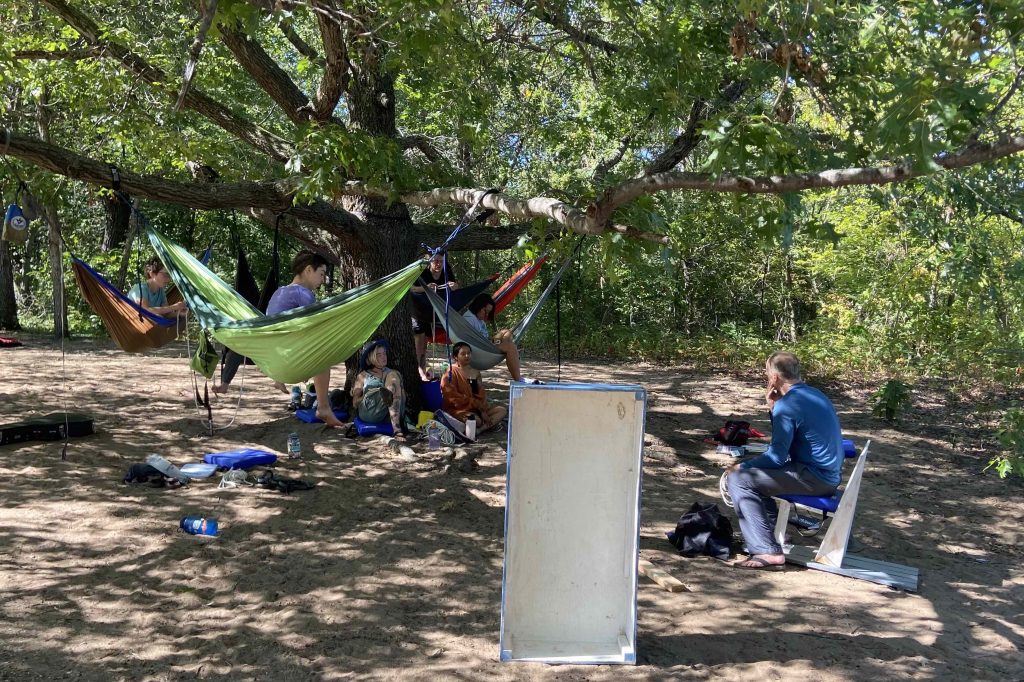
Day 17: September 13
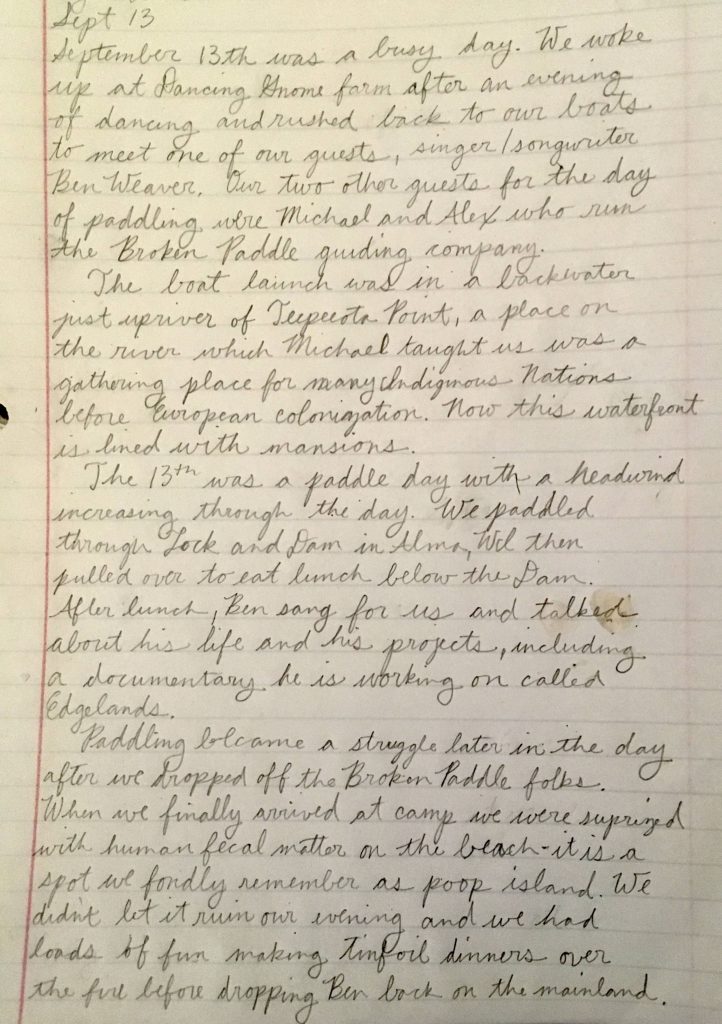
Day 16: September 12th:
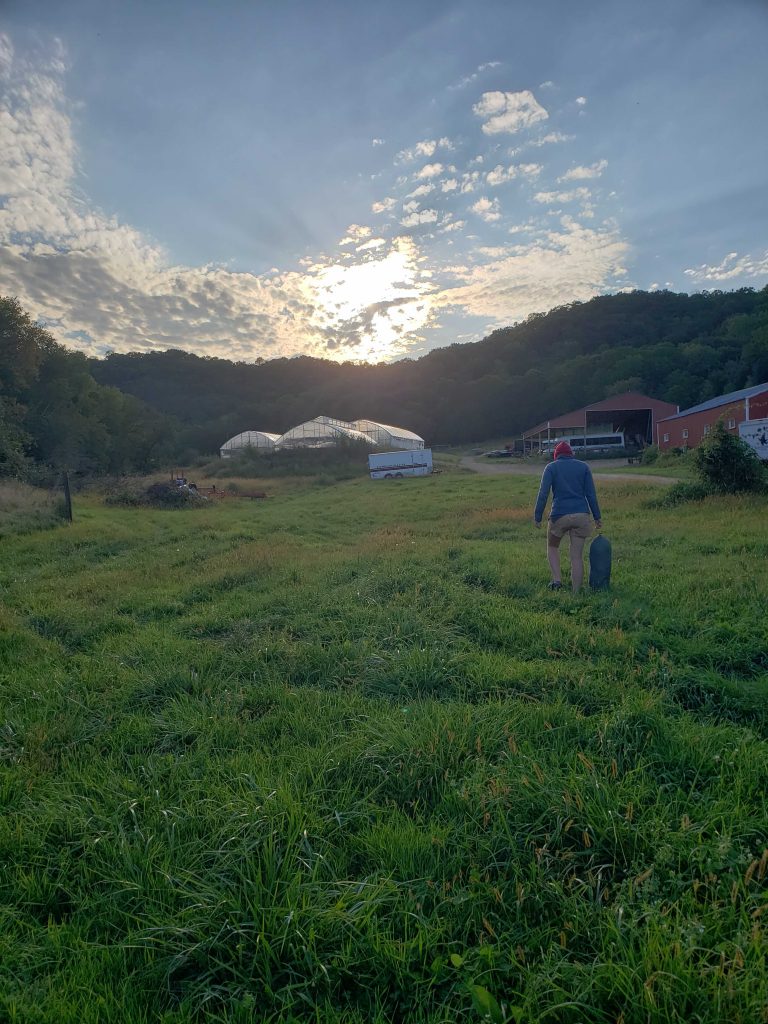
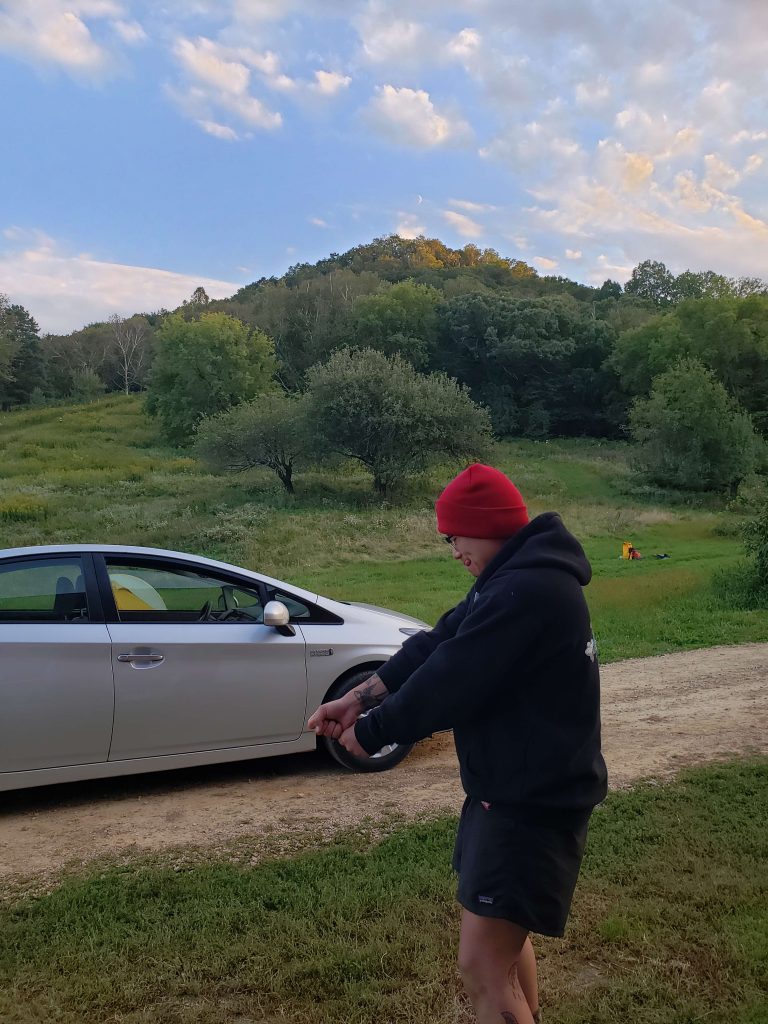
[Elias]
Day 15: Saturday, September 11, 2021
Personal Update:
Today was our first day back on the river after our layover at Hok-Sa-La. Immediately after unloading our gear, we jumped in the river with our life preservers and floated around a little bit. Angelica and I were on “dinner crew” tonight and we prepared the group’s first hot dog night!
We are getting a feel for “river culture” in the Midwest. People are very interested in our Catamarans and a couple groups of people hanging out on the shore came right up to us and asked questions about the boats. We joshed with them a little bit and told them that the cart wheels stored at the bow of our boats were used to convert the hulls into transformer cars 🙂
We are in the “norming” phase of our group establishment. We are learning about self-advocacy, community care, getting used to coursework, and collaborating with one another in planning our research projects.
Classwork Reflections :
Lately, in class, we have been thinking about how to see ourselves as actors with agency in our world. We are working with histories of settler colonialism, racism and slavery, and capitalism and the environmental implications that these systems have.
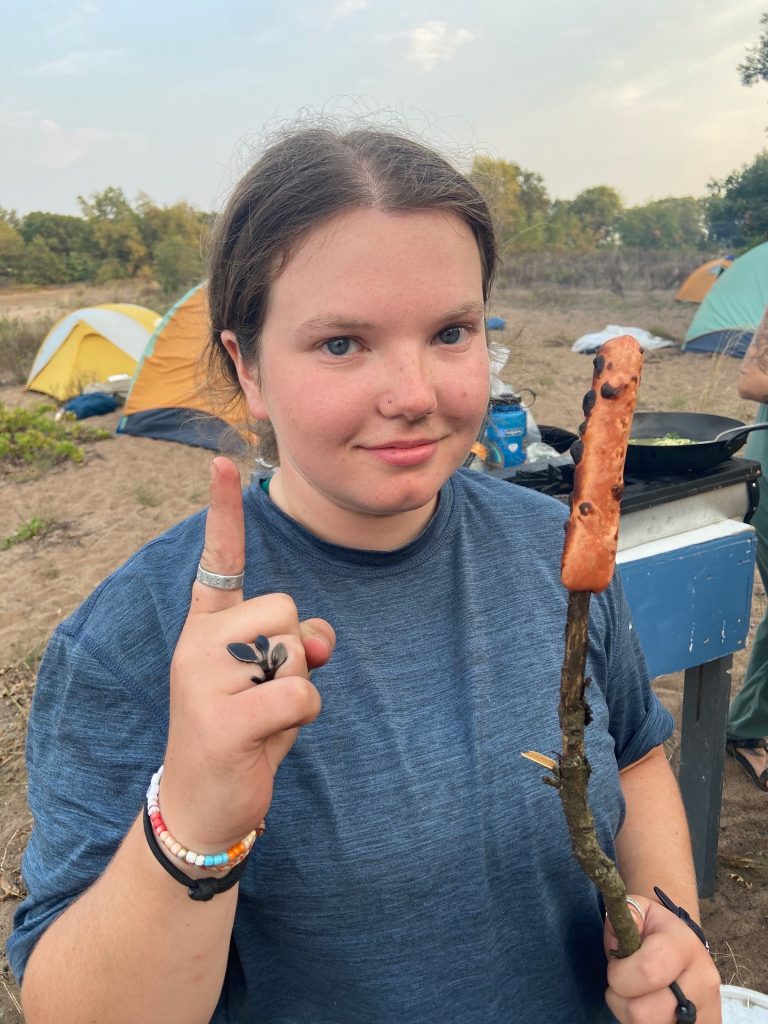
Day 14: September 10th
Today we woke up at our campsite in Hok Si-La and for breakfast we had a delicious egg bake then we had our first official class session of the year and learned about each of our independent study projects. We have a wide range of topics from studying the sediment of the shores to an examination of environmental topics in science fiction literature. Class ended and we had some cheese and crackers for lunch which was delicious! We had the afternoon off to relax and enjoy our lovely campground where we found a giant puffball mushroom which we unfortunately couldn’t eat. The dinner crew made us some delicious personal pizzas which were a crowd favorite and for dessert they made peach banana cobbler over the fire which we put candles in for a late birthday celebration for one of our guides Emily!
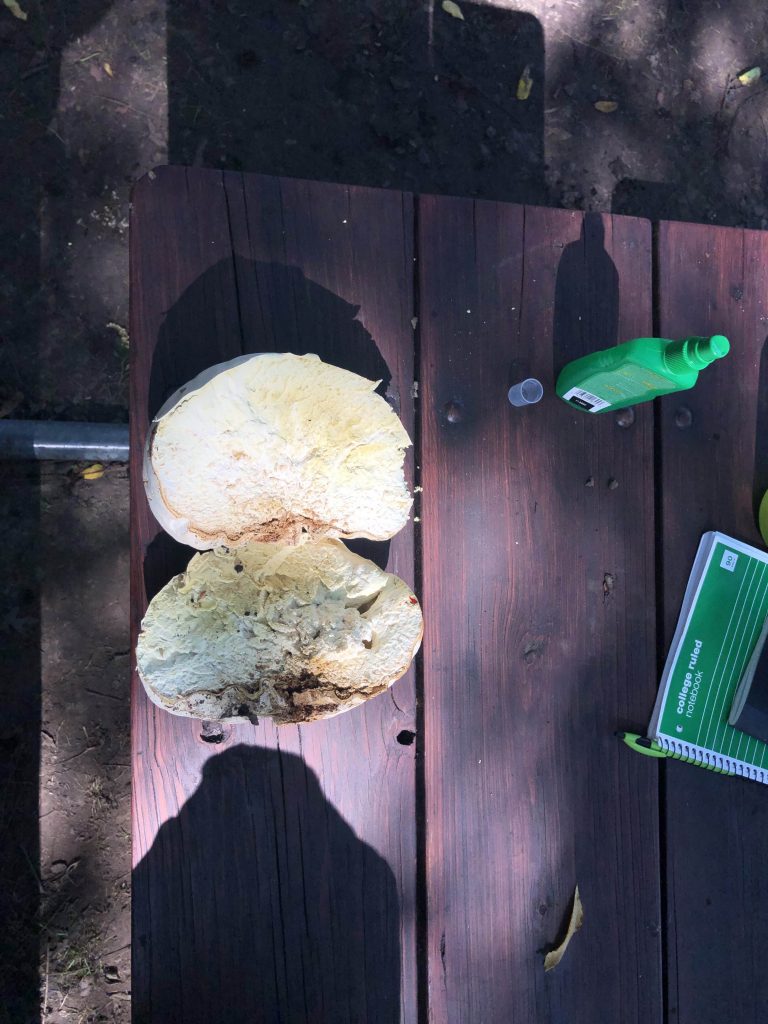
Day 13: September 9th:
Today we spent another day at our campsite in Hok Si La. We dedicated the day to be unstructured to help us get some more rest as a break from the fast-paced nature of the trip so far.
In the afternoon, some of us visited a local mussel propagation center. We met Bernard, who graciously showed us around the facility and taught us a lot about the mussel populations in the Minnesota rivers.
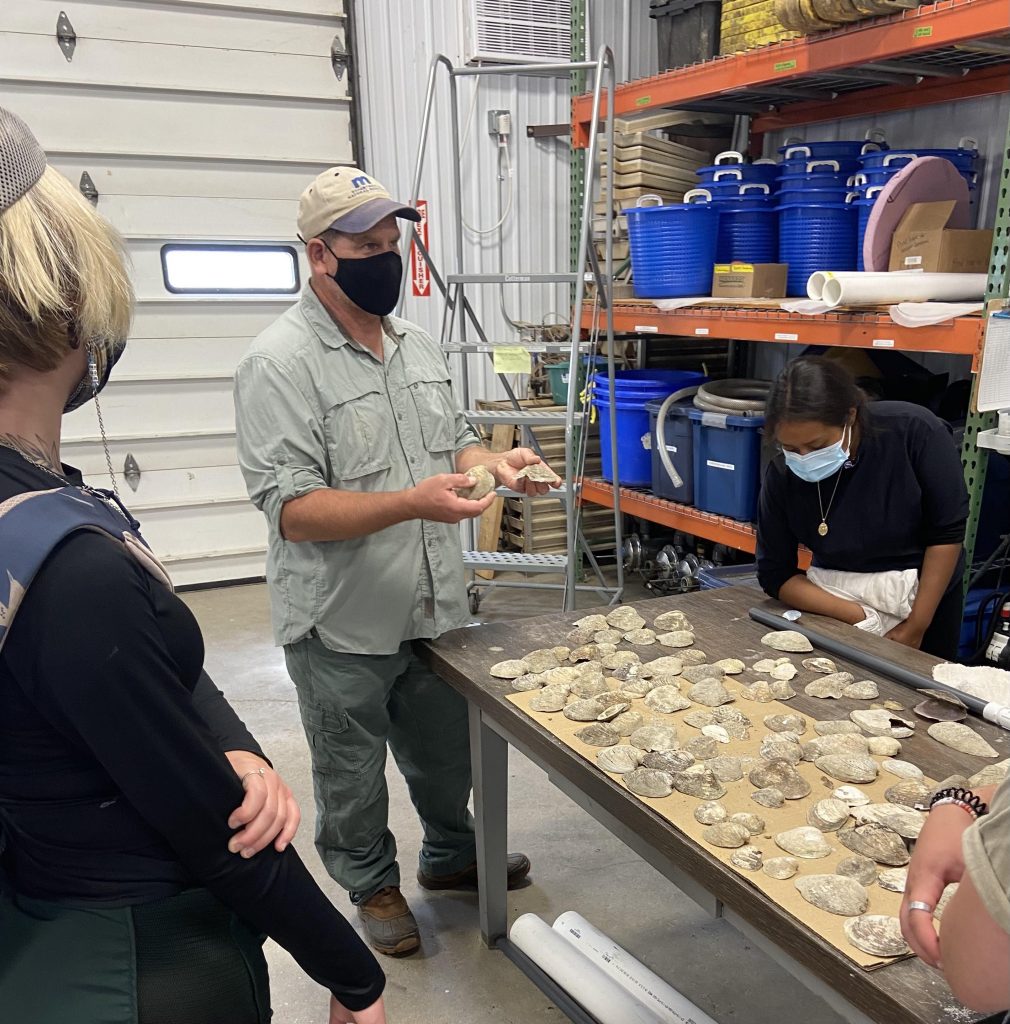
We got to ask questions and learn about how mussel propagation works and understand the amount of time and work it takes to grow baby mussels to recover the populations that are suffering in the river regions.
During dinner we got to chat with our Hok Si La friend, Joanne, and eat together with her. She has shown us a lot of kindness and generosity in the past few days and we loved getting to talk to her more.
We also had a campfire and enjoyed the use of all of our instruments, which have now accounted to a fiddle, mandolin, guitar, maraca, mouth harp, harmonica, and everyone’s oh-so-talented voices.
[Sarah Egertson]
Today we discussed the importance of self-advocating, and doing it sooner rather than later. Poor mental state and being overall worn out is less than ideal for learning and teaching. School should not be stressful to the point where the idea of learning causes turmoil.
“Seems pretty counterproductive if you ask me…” –Joe Underhill
[Dylan Garbow]
Day 11: September 7th
The wind was favorable yet again for our crew! We packed up from our river island and set sail early in the morning.
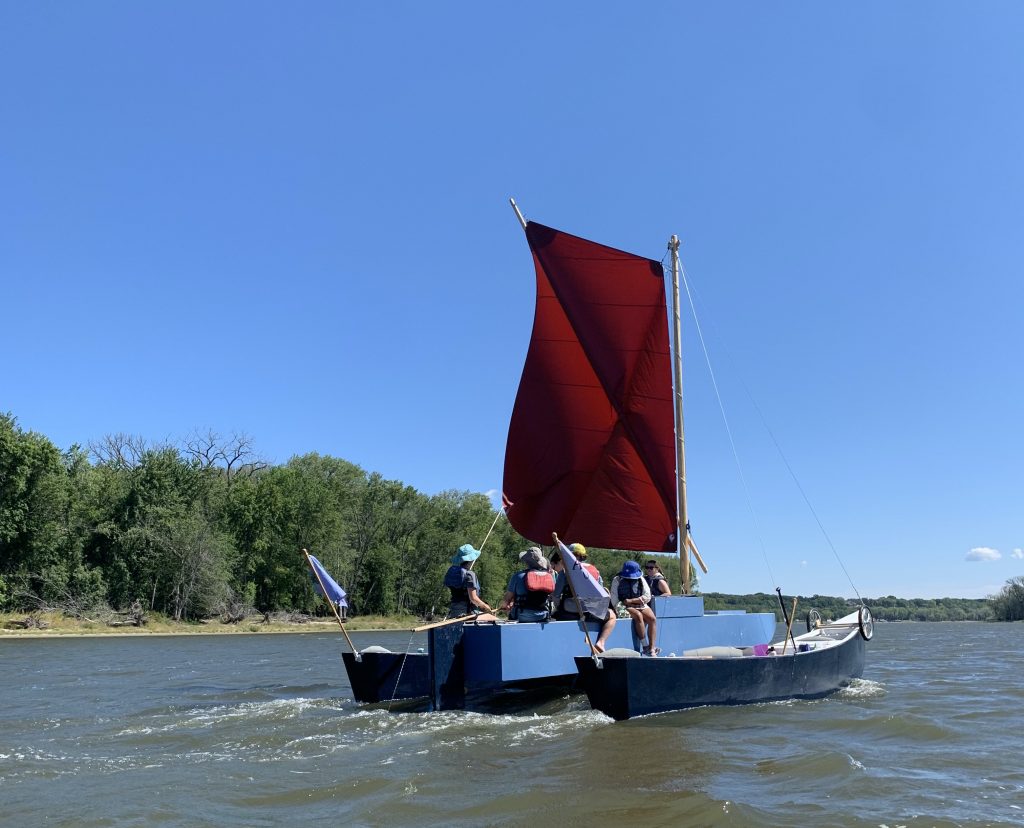
We stopped for a lunch break in Red Wing and continued sailing into the afternoon while wearing funny glasses, getting lost in conversations, reading books and signing a song that goes like this:
Heave-e-oh
Day 10: SEPTEMBER 6th:
-
Happy Layover Day! Today our river crew took time for self-care, as we stayed on an island from the night before located south of Prescott, Wisconsin. We had nothing on the agenda right away in the morning, and simply woke when our bodies told us too. We then took time to have our weekly water blessing, followed by a swim in the channel to immerse ourselves in the joy that the water brings us. The afternoon consisted of a variety of activities and discussions led by members of our crew that highlighted our gifts and passions, and individuals selected which activity they wanted to partake in. As the sun began to set, we gathered together again for a meal. The dinner crew utilized our ¨rocket stove,¨ loaned to us by John Kim for the semester, to cook a vegetable coconut curry dish. The ¨rocket stove¨ provides us with the opportunity to use firewood to cook with a single burner and not rely on any fossil fuels. After the delicious meal, we continued to immerse ourselves in each other’s company around a campfire and slowly moved back into our tents for the night.
-
Pictured below is an in-progress photo of the vegetables cooking in the wok on the ¨rocket stove.”
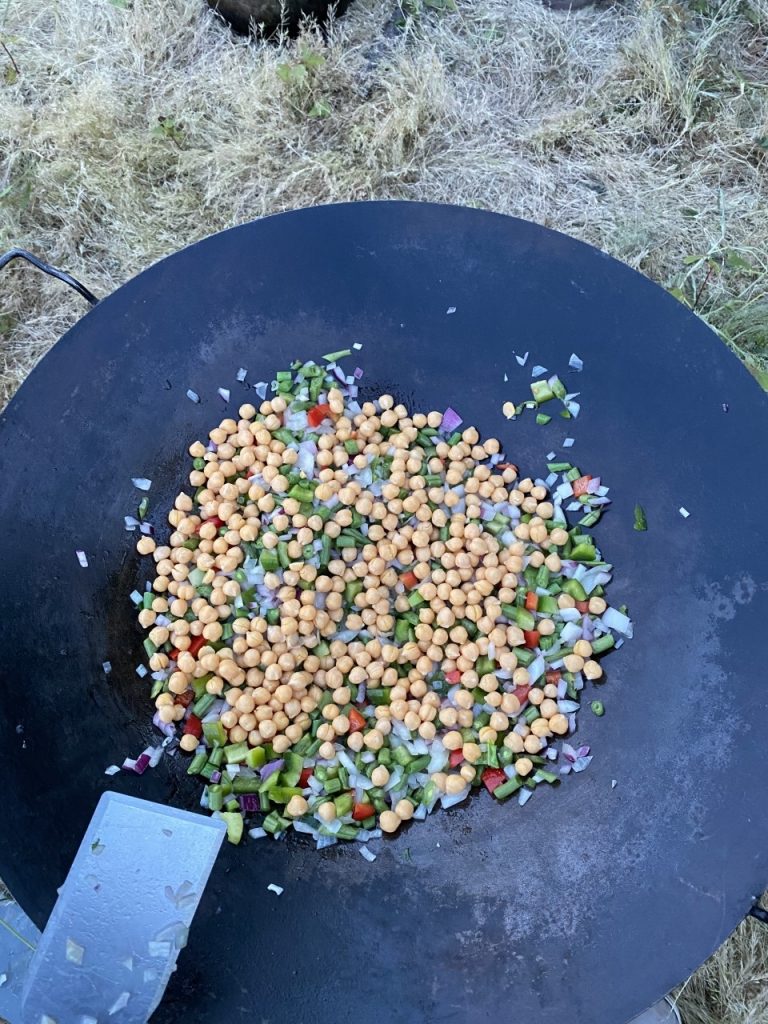
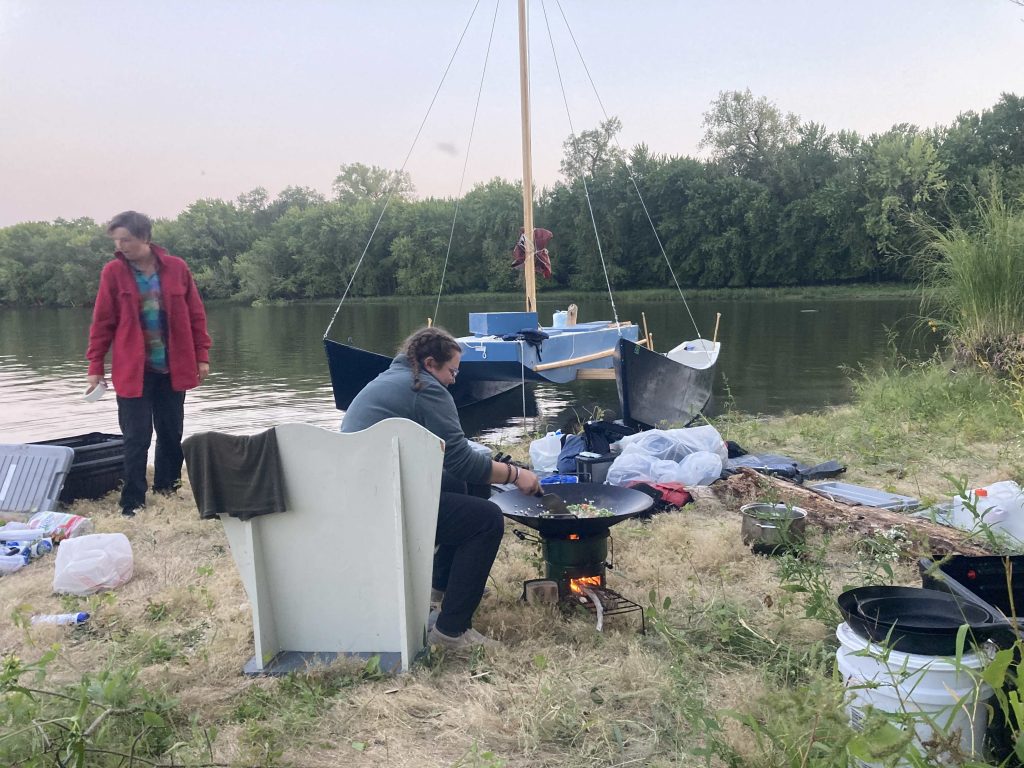
Drawing by Nial from the Day:
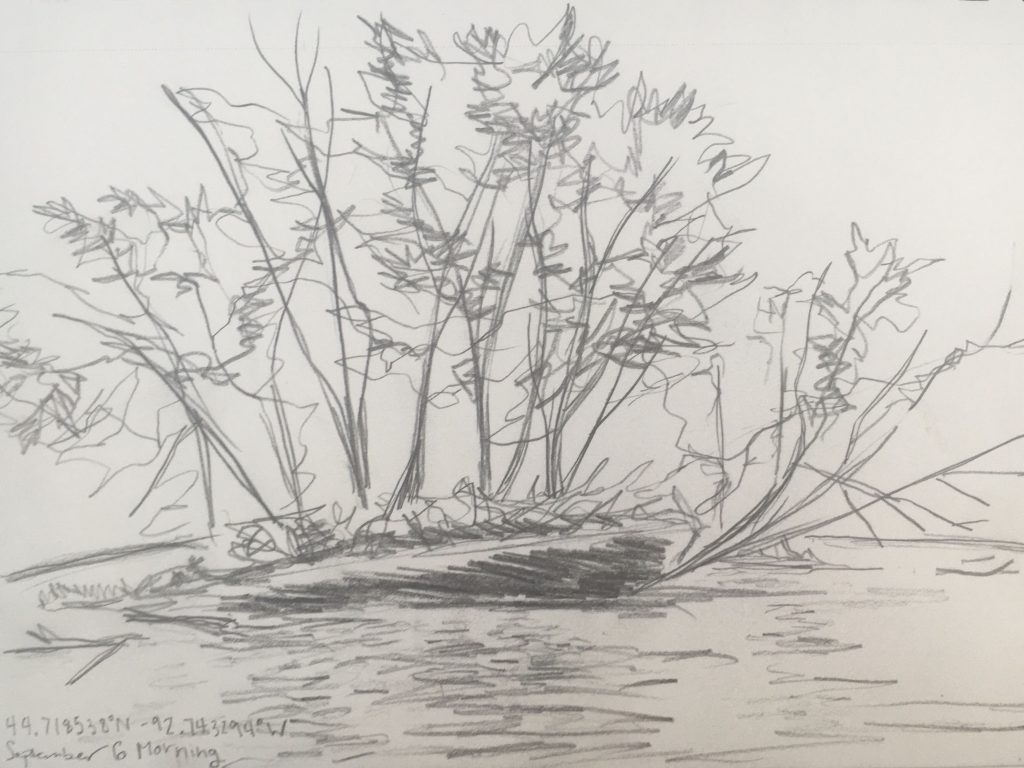
Day 9: Sept. 5
This was our third day traveling on the river and it feels like we’re starting to get into the rhythm of traveling. After the long day of sailing yesterday, we had a more leisurely morning and less than ten miles to cover to the island where we set up camp. Four lovely folk who traveled the first leg of the journey with us (three people and a dog) left the group today.
With a more relaxed travel day we were able to spend a bit more time discussing the things we were seeing. In the morning Joe read to us about the mayflies and the confluence of the St. Croix and the Mississippi. The mayflies we saw a few days ago in St. Paul. We learned that they had lived almost their entire lives in the water- all but the say that we saw them. The mouth of the St. Croix, we learned, is a very important place to the Dakota people. At the confluence there is a sand bar which we read about in Mni Sota Makoce by Gwen Westerman and Bruce M. White. In the Dakota tradition it was created by a man who turned into a fish.
With a wind from the north, it was a great day to sail down the river. I’ve sailed quite a bit before, and I am so happy to be traveling by boat this term. A few different folks in my boat took turns at the tiller and it’s really fun to see them getting a feel for sailing.
We set up camp on an island that we are planning to stay on for two nights. Despite some poison ivy, it’s a lovely place.
[Nial Howley]Day 8: Sept. 4 (St. Paul to south of Prescott, WI)
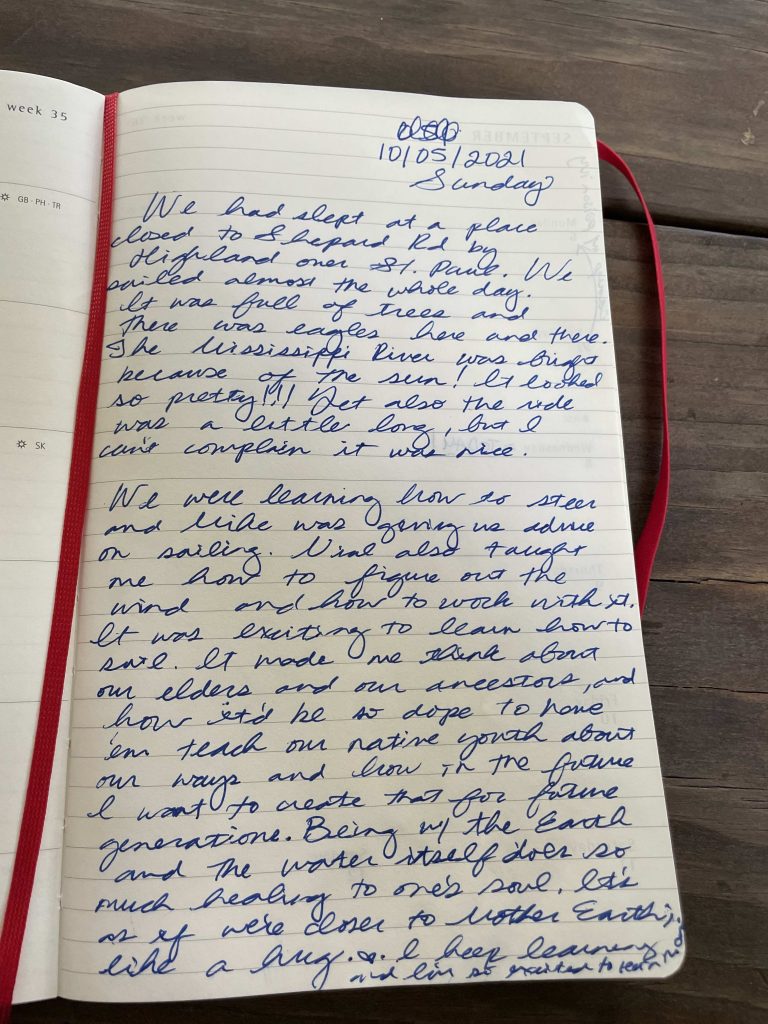
Day 7: September 3 (St. Paul, MN)
Day 6: Thursday, September 2: Day Before Launch Day (The Final Push)
I would describe today as stressful, taxing and exciting.
My first activity of the day was going to the Augsburg Campus and making some screen printed bandanas for our trip!

After that it was another hot day of packing and assembling the boats at the marina. A lot of physical work had to be done today. I kept morale high today by meeting many river dogs and their people at the Watergate marina, doing the daily “wake up shake up” with my river comrades, and sharing laughs and maybe a couple tears.

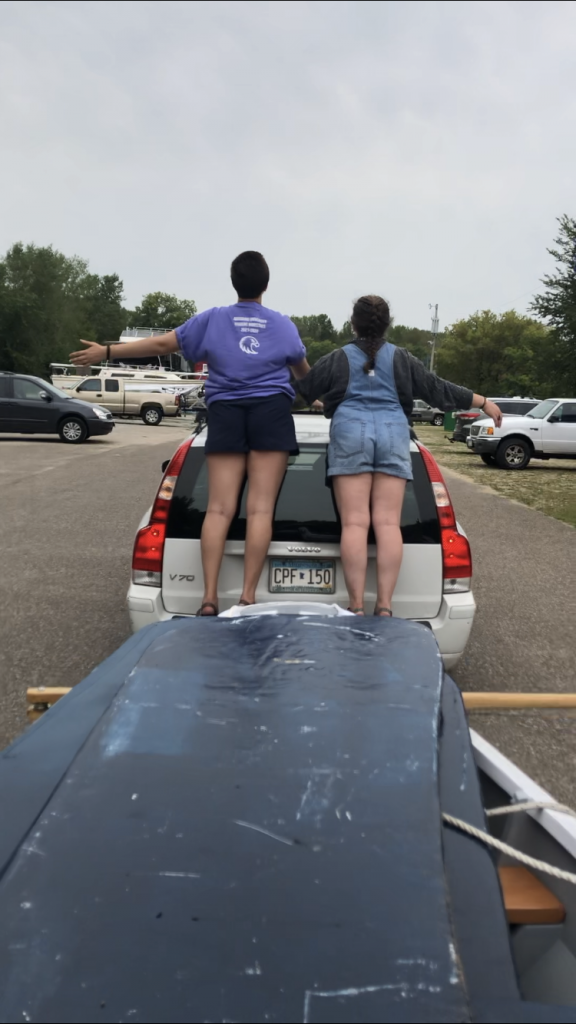
The group was somewhat separated today as we prepared for our journey. For me, the day ended with eating some delicious celebratory pizza after a long days work, buying a last-minute cold weather sleeping bag at 8:30pm at Cabellas (a fascinating experience :-P), and doing some late night packing and water jug filling at Camp Knudson (Emily’s house that they have been generously sharing with a few of us), in preparation before the big day tomorrow.
Already, I feel I am learning and growing a lot. I am excited and curious about this beautiful project we are co-creating. Although we are all bringing knowledge, experience, and other gifts along with us, we are embarking on something completely new. I look forward to seeing where we go together.
[MJ Whitaker-Long]
Day 5: September 1
Happy September! Today started off with silliness. We showed up to the marina singing tunes and dressed as the characters from Wes Anderson’s “The Life Aquatic with Steve Zissou” (all blue clothes and red beanies). This set the tone for our day of work together.
We got back to priming the boats and finishing up the rigging for the mast. After working for a bit, naturally we got thirsty and were pleasantly surprised with a cooler full of ice cold lemonade, sparkling water, soda, and fresh fruit from Joe! This held us over to late afternoon when we finished putting together the first boat which was a moment of pure joy!
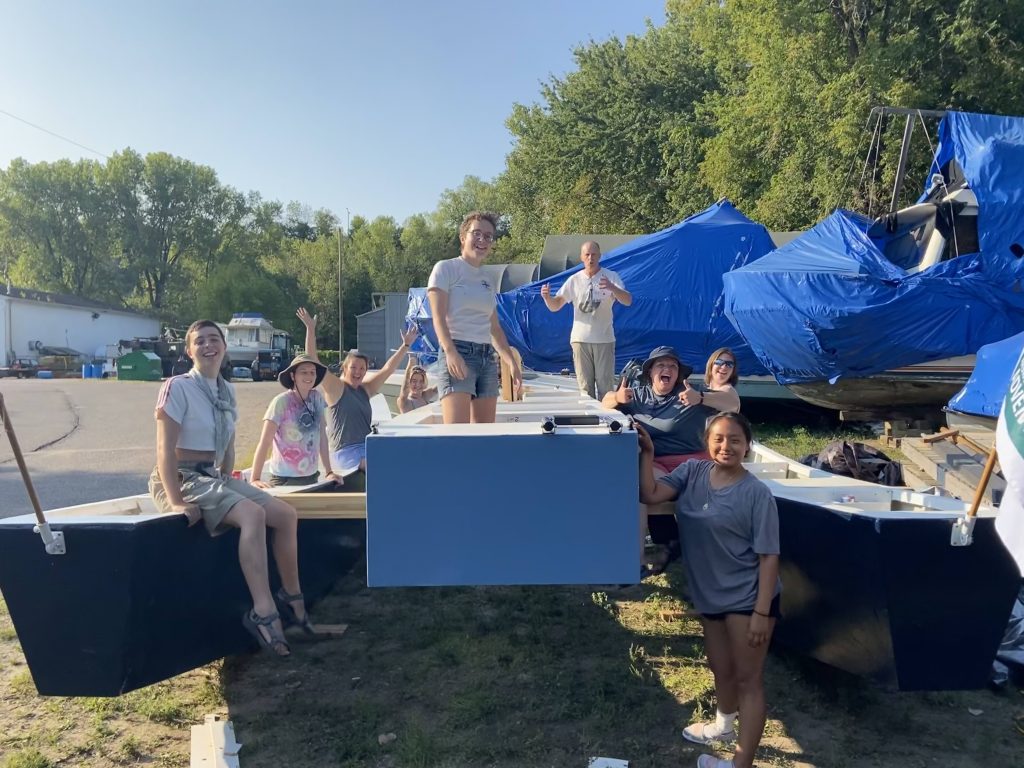
Finally, we ended the day with an opportunity to connect with past river semester students at a bonfire on the shores of the Mississippi.
[Kelly Shono]
Day 4: August 31
River Dan here, reportin’ the exciting events and encounters of our river semester. Today started off with a rendition of Happy Birthday for Elias, who turned 21! We then packed up our things from Big Sandy Camp and headed on the road towards Minneapolis.
The “Before”….
Once we got to the Marina, we got to see our (deconstructed) boats and start touching up their exteriors. We sanded and painted and started the rigging process on the masts. After a hot few hours of work, we called it a day and packed up our things to prepare for the next few days in Minneapolis.
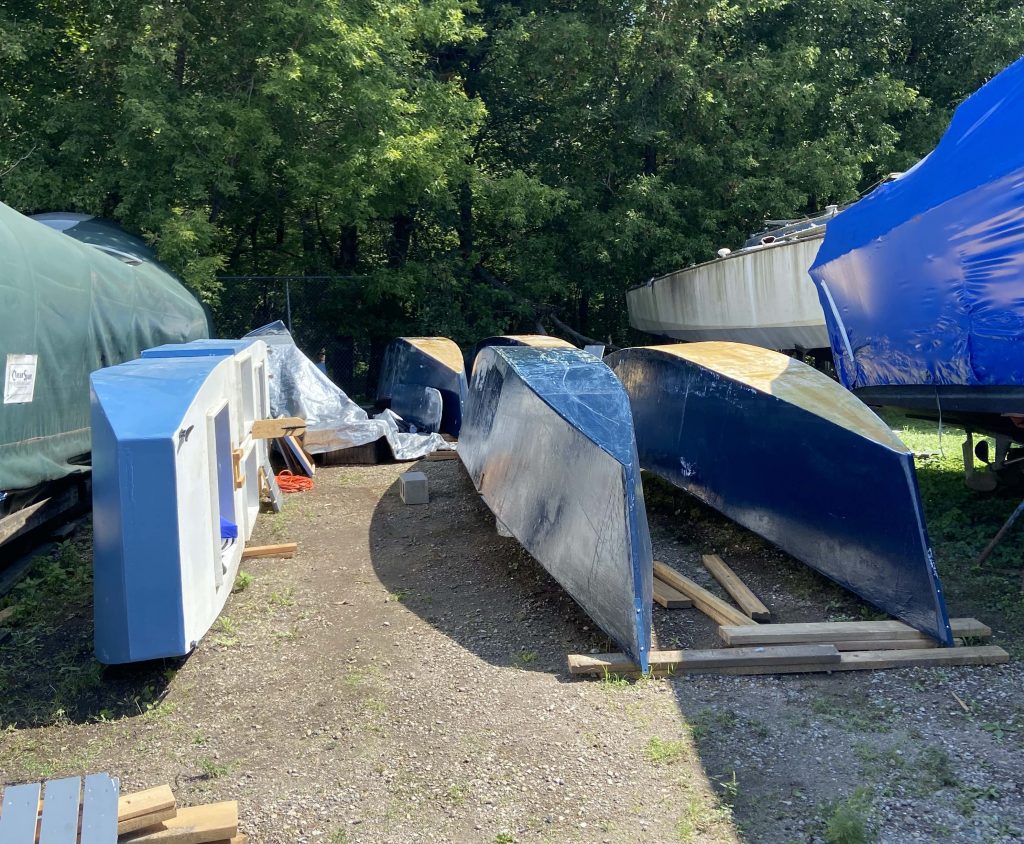
In some relevant news, River Dan has started an Instagram account (managed generously by MJ). It will update our encounters with many of the dogs (and possibly other animals) that we will see.
Follow us on Instagram to see it all: @riverdanriverdawgs
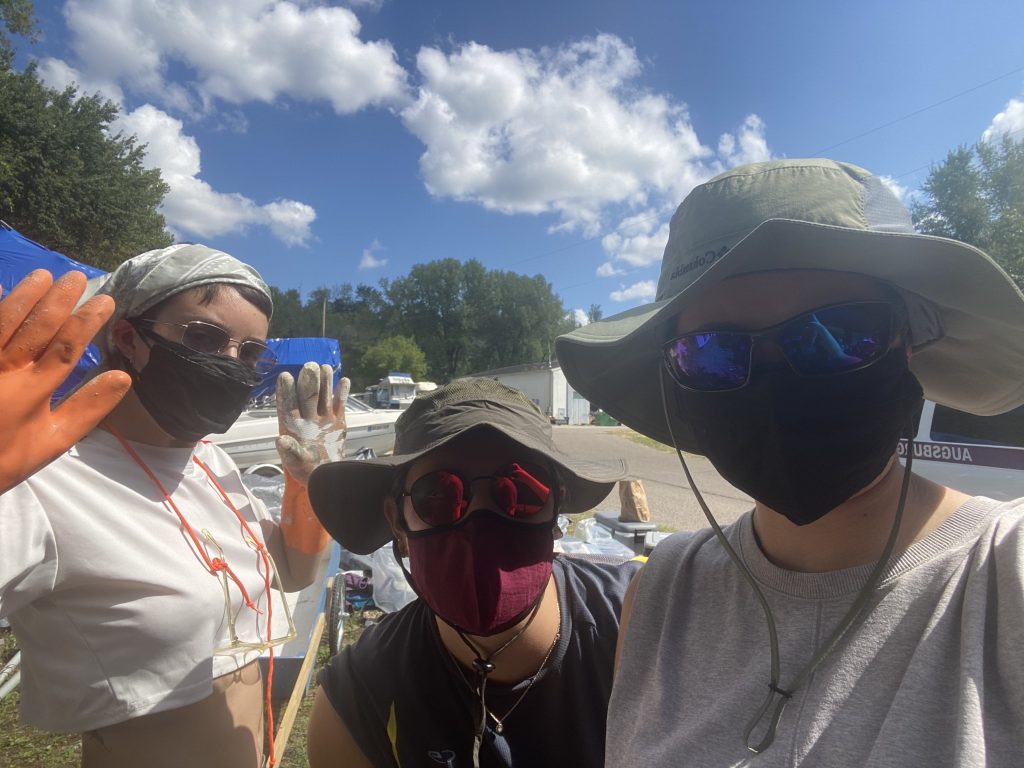
Day 3: August 30
- Met Alan (at the Line 3 Protest Welcome Center near Palisade)
- Talked about work they were doing with Line 3
- Talked about puppets
Learned about the work environmental activists such as Alan were doing in relation to Line 3. Told us about lawsuits that unfortunately did not proceed. Talked about working with Winona LaDuke, being at the forefront of much of the operation.
[Dylan Garbow]Day 2: August 29
Today we centered ourselves around the water. We sang to nibi, we wished our intentions into it, and we prayed for its protection. We offered it Copan and Angelica sang to it in a language of her ancestors. The wild rice danced and a bald eagle circled overhead. We have been told that an eagle’s presence is a sign that we are going in the right direction.
We visited the place where the water first pours from Lake Itasca into the Mississippi River, and discussed how this space is completely constructed and artificial. The start of the river was originally a wetland swamp, but gravel and stones were brought in so that tourists could visit a neatly defined start of the river.
We walked over the iconic stones and one by one returned a gift to the lake – a jar of water collected by river Semester 2019 at the Gulf of Mexico after their own 100 day journey. Each 2021 student pored a bit of the gulf water into Itasca, and afterwards each student scooped up some Lake water back into the bottle, to begin the cycle anew and to have something to return to the river at the end of our own 100 day journey. We baptized ourselves in the water, took a family picture on the iconic log crossing, and waded down the stream until the riverbed became too muddy to comfortably continue.
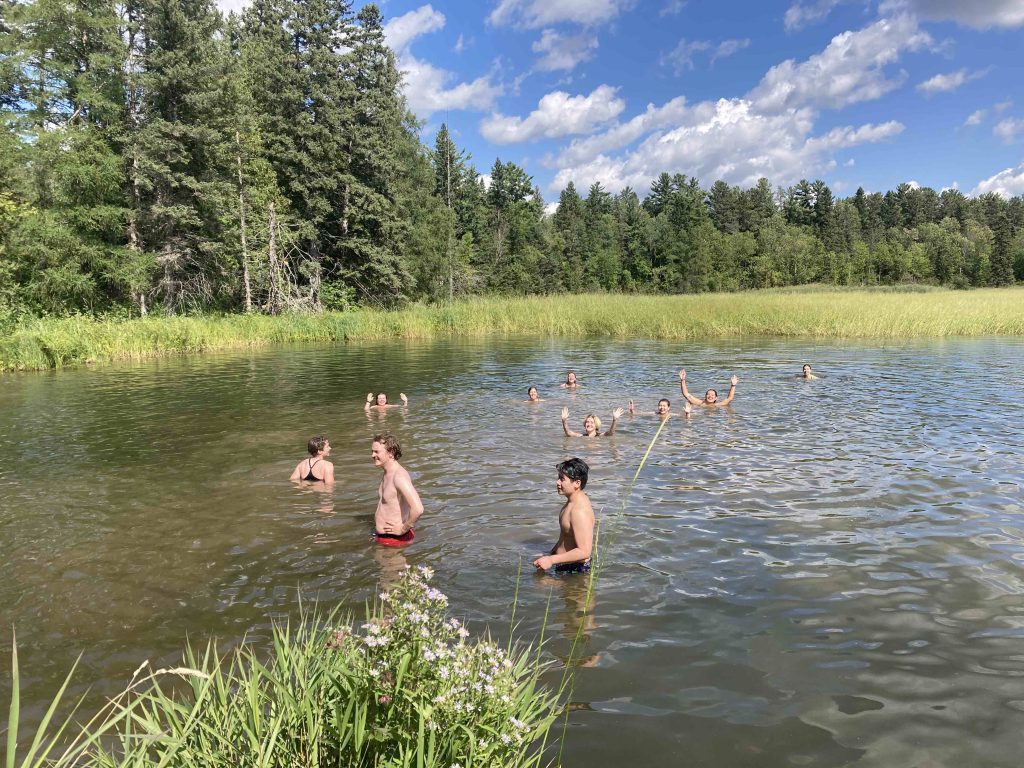 Swimming at the outflow from Lake Itasca, in water that within about 100 days will be at the Gulf of Mexico. We hope to join it there.
Swimming at the outflow from Lake Itasca, in water that within about 100 days will be at the Gulf of Mexico. We hope to join it there.
We returned to camp to rest, draw, journal, discuss class work, and look over architectural blueprints of our water strider boats. Joe told us that six months ago these boats didn’t even exist as an idea, but dreaming, teamwork, and hard work brought them into reality and brought this river semester into reality. Joe has put an insane amount of energy and dreaming into all of this and for that we are all thankful. He told us that he wants us to think about what kind of boat we would like to build – what seemingly impossible dreams we would like to bring to reality through our own incessant dedication and hard work.
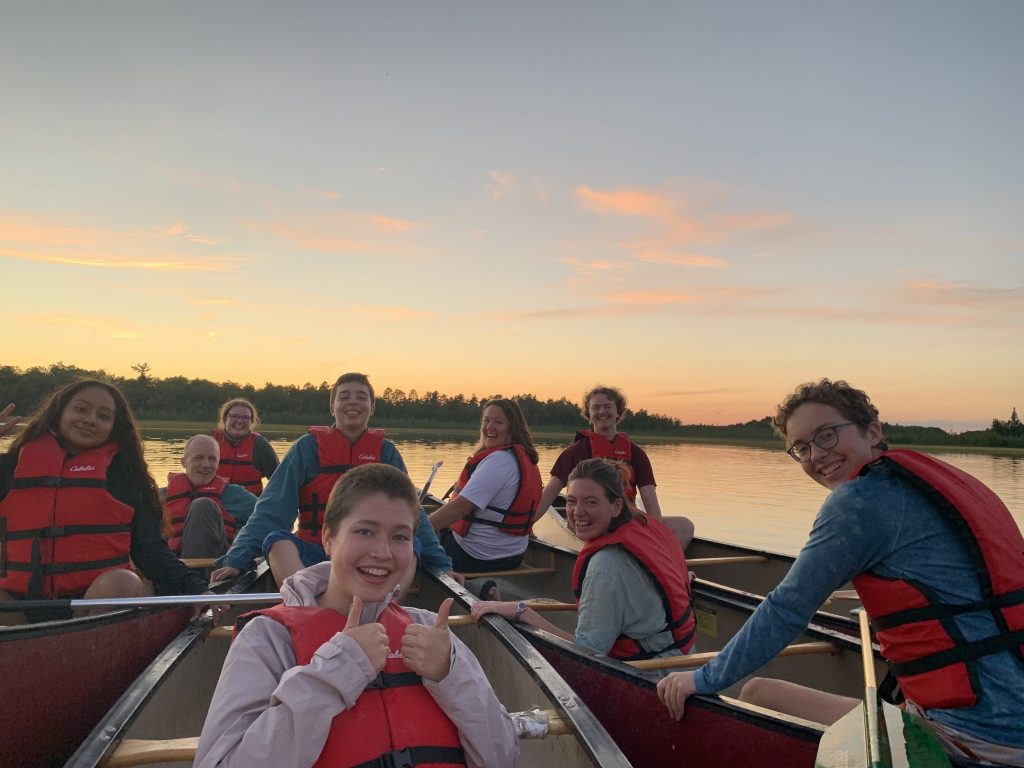
Day two has been filled with laughter, deep discussions, and the delirious joy of being able to come together after such a long time of pandemic isolation. We walked down to the lake to catch the sunset, and ended up taking canoes out just in time to catch the view from the water. When dark fell we gazed at the stars while we chatted until we were too tried to stay awake any longer. We are thankful for the incredible beauty of this natural space on earth, of this new community, and of this incredible journey that we are about to embark upon.
[Emily Knudson]
Day 1: August 28
Love today…
Looked like- new smiling faces
Smelled like- fresh pine surrounding camp
Sounded like- the first zipper of a new tent
Felt like- connecting with fellow crew mates
Tasted like- spiced vegetables over hot rice
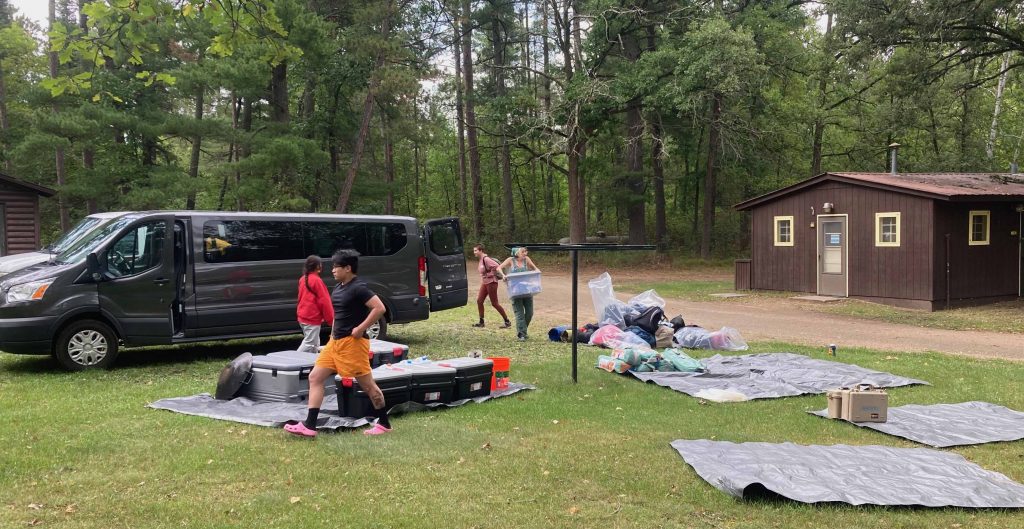
Excitement was in the air as the 2021 river semester crew took off on the first day of their grand adventure. The day started off at Augsburg University where they gathered their gear and got to know each other. Later in the afternoon they made it up to Lake Itasca (despite the strong winds and heavy downpour). This location had a biological field station where the crew talked about science, land and place based work. They conversed and connected with river semester alumni about what to prepare for and expect on the journey ahead. The crew wrapped up the night and enjoyed their first camp dinner of curry and fresh vegetables.
[Zoe Barany]
August 25
We’re pleased to report that the shakedown cruise or “river trials” of the first Water Strider went really well. We had great luck with the weather and were able to sail most of the time, and the boat really exceeded expectations. It carries plenty of weight, scoots right along under sail, is maneuverable, and has “nice lines,” as they say in the business. The students will be helping with final painting, modifications, minor repairs, and improvements during the course of the semester, but we are very close to ready now. Students arrive in two days, and we leave for the headwaters in three days!
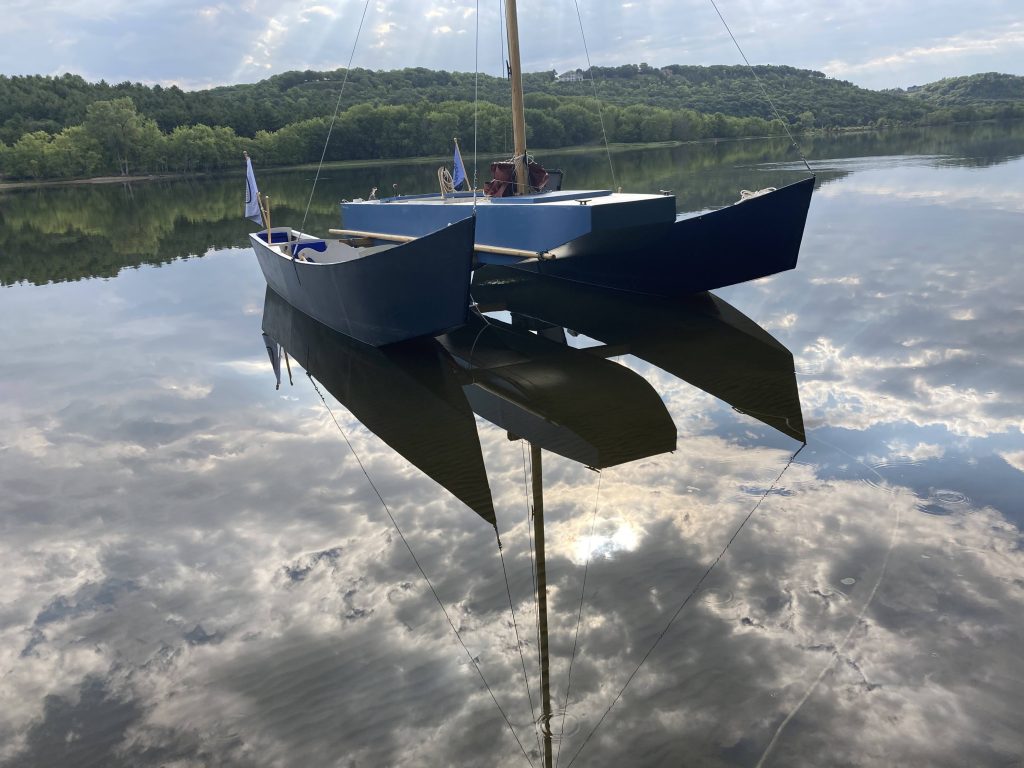
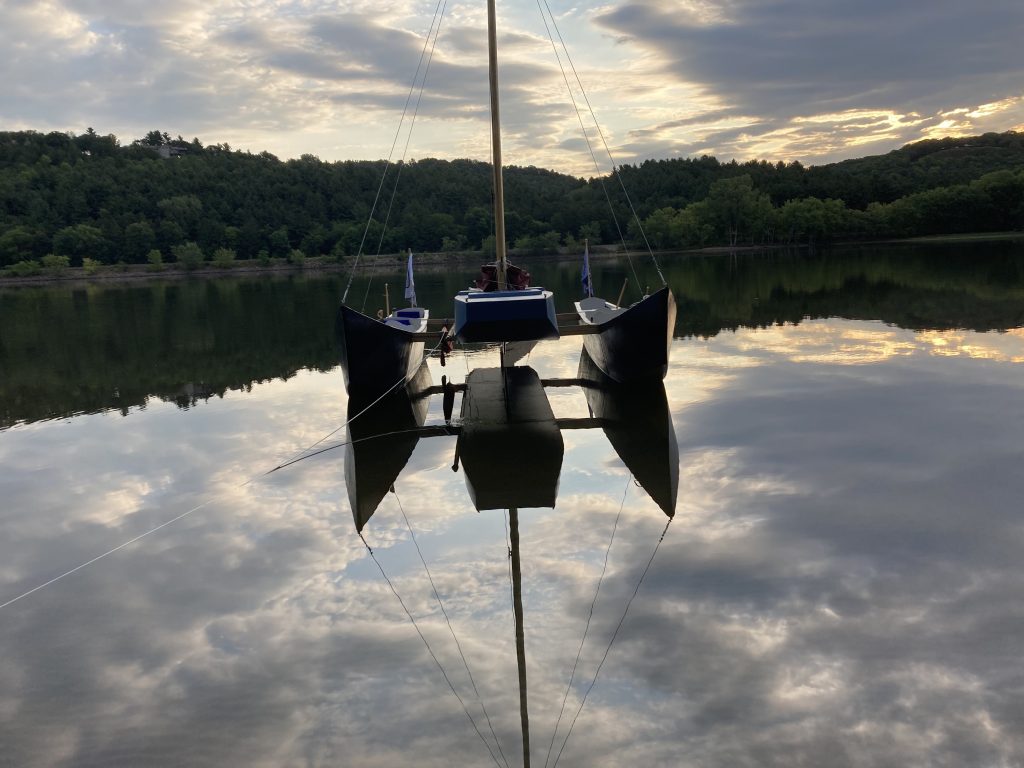
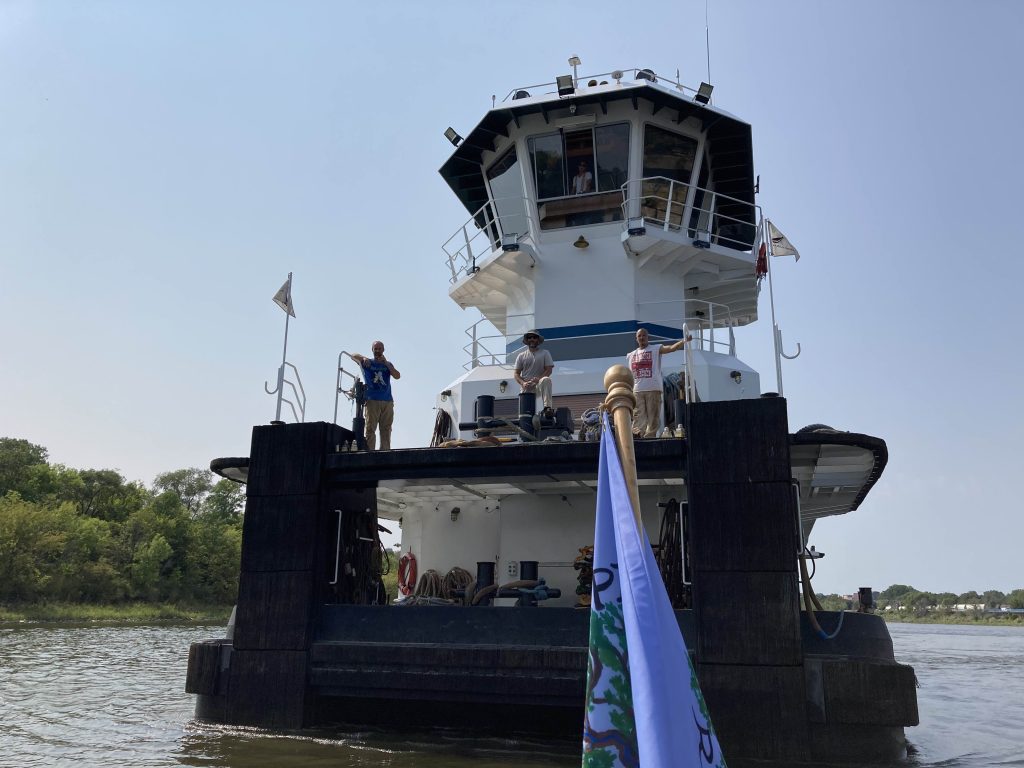
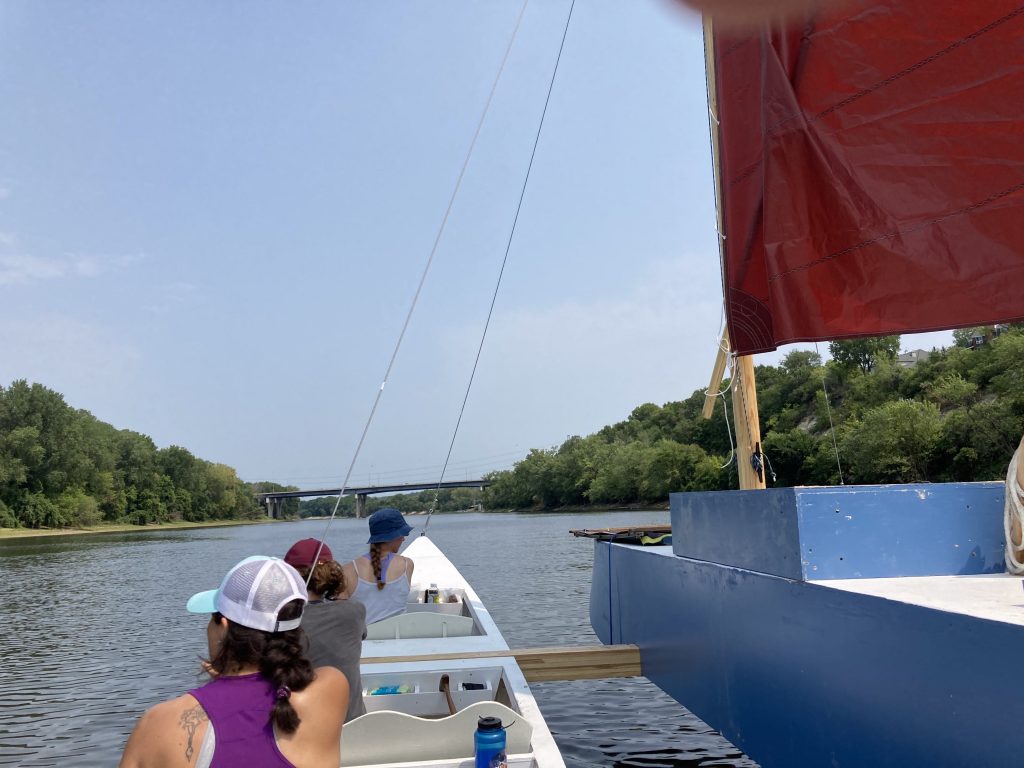
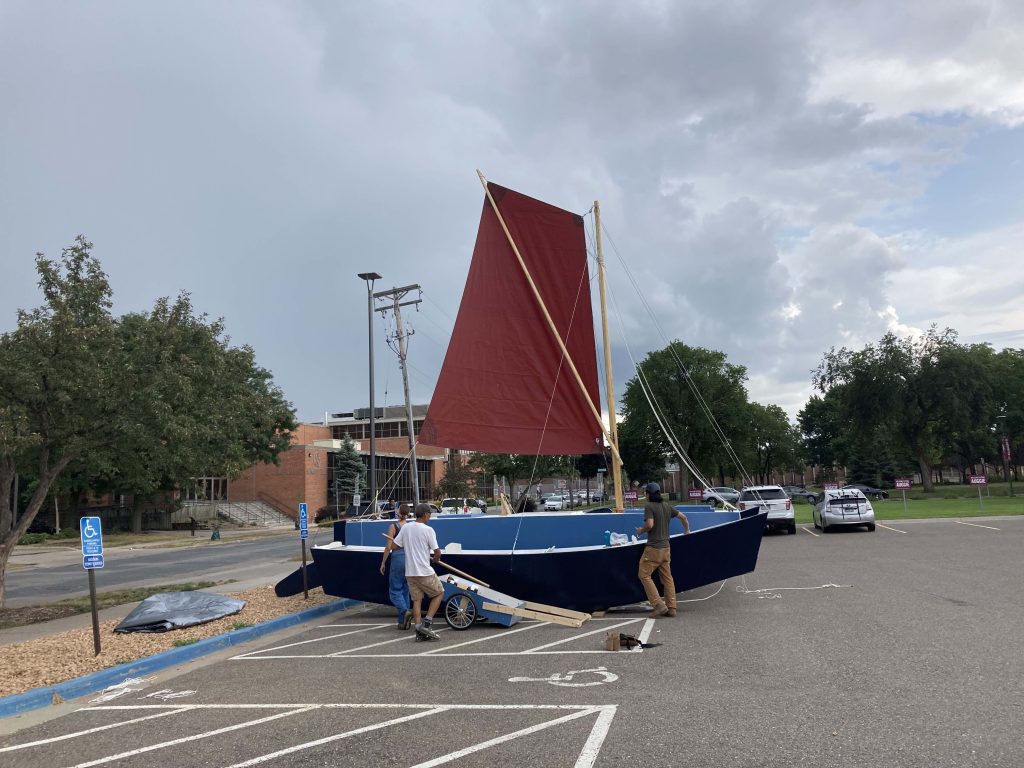
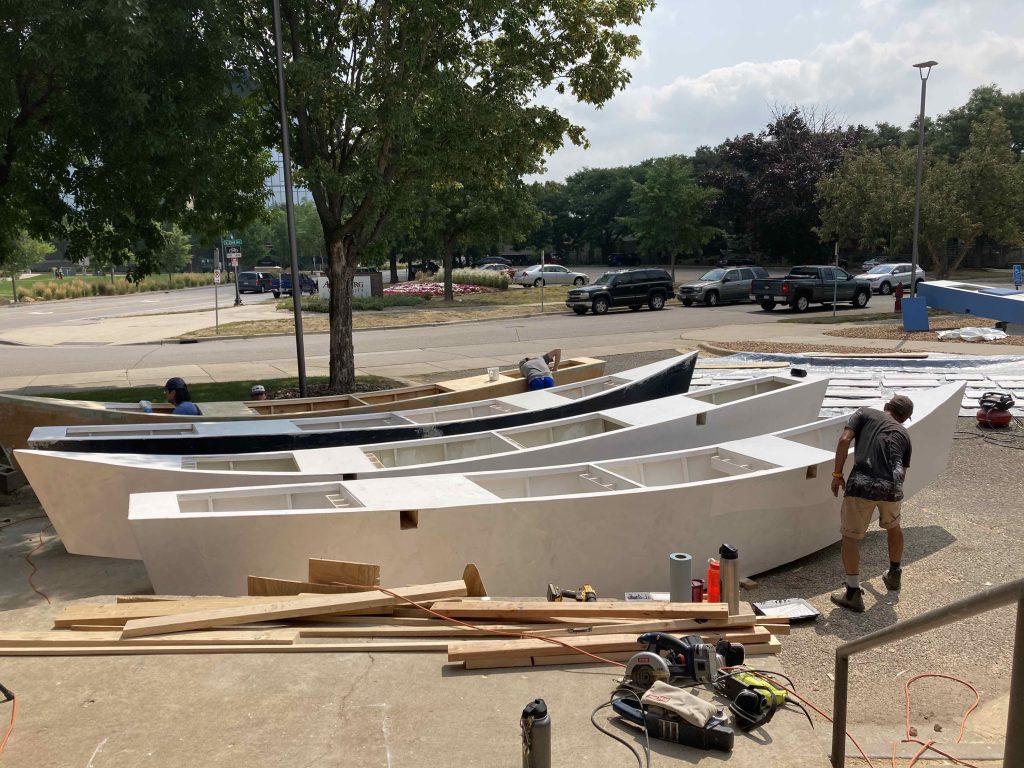
July 31
The past two weeks have been a blur. The weather has been hot and the skies full of smoke from the wildfires in Manitoba. The reddish glow of the sun and the record-breaking levels of particulate matter have lent an apocalyptic air to scene, are are further evidence of how climate change is increasing. We have been working nonstop to get the boats done in time for the August 10th shakedown cruise, and it has been a frantic pace. We are on the verge of overdoing, with machines breaking down, the table saw blowing blue sparks (had to buy a new table saw!), muscles cramping up, and the floor (and bottoms of our shoes) covered with epoxy drips. We’ve thankfully had various folks stopping by to help out–Steven and Audrey from the 2019 River Semester, John Kim, Alicia and Mark have all been a great help. And Hannah has been consistently amazing. It’s safe to say the boats would not have happened without her!
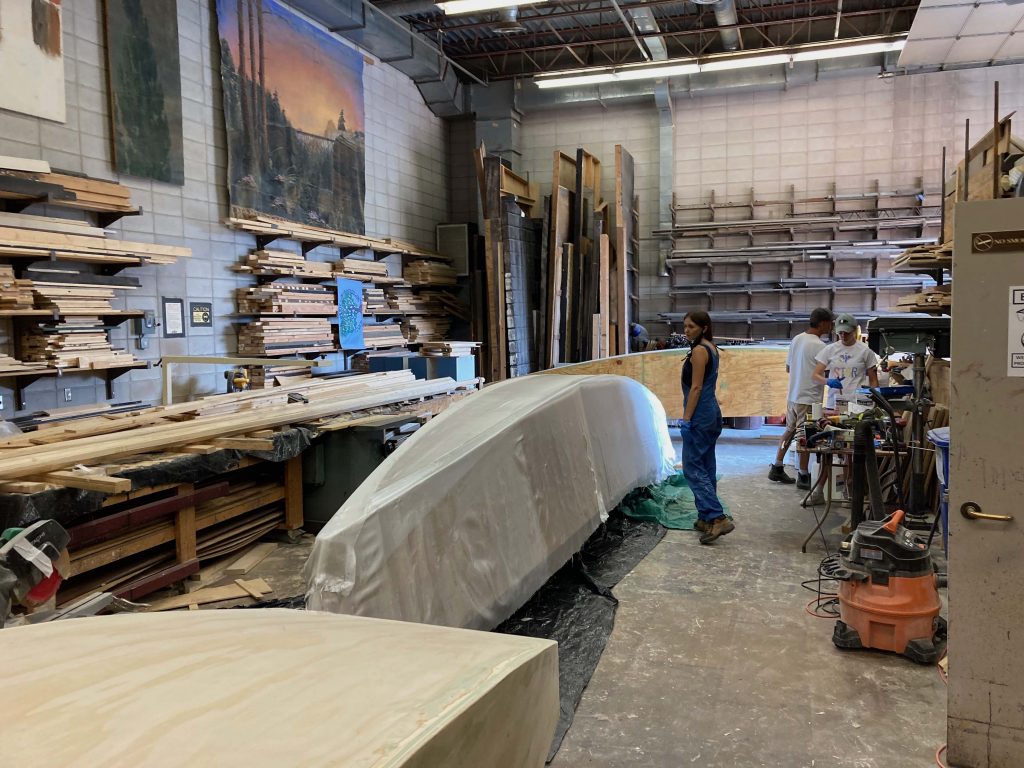
Alicia, Mark, and Hannah getting ready to apply the epoxy resin to hull # 3. The fiberglass cloth starts out white but becomes translucent once it is saturated with the resin.
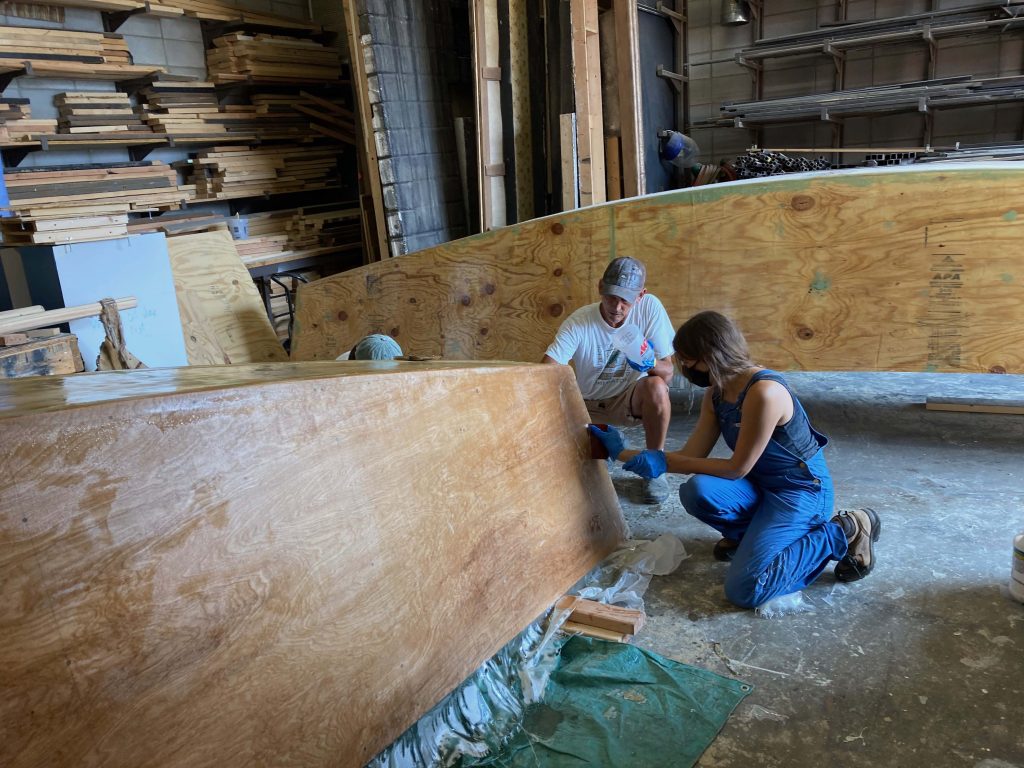
Working the epoxy resin into the fiberglass.
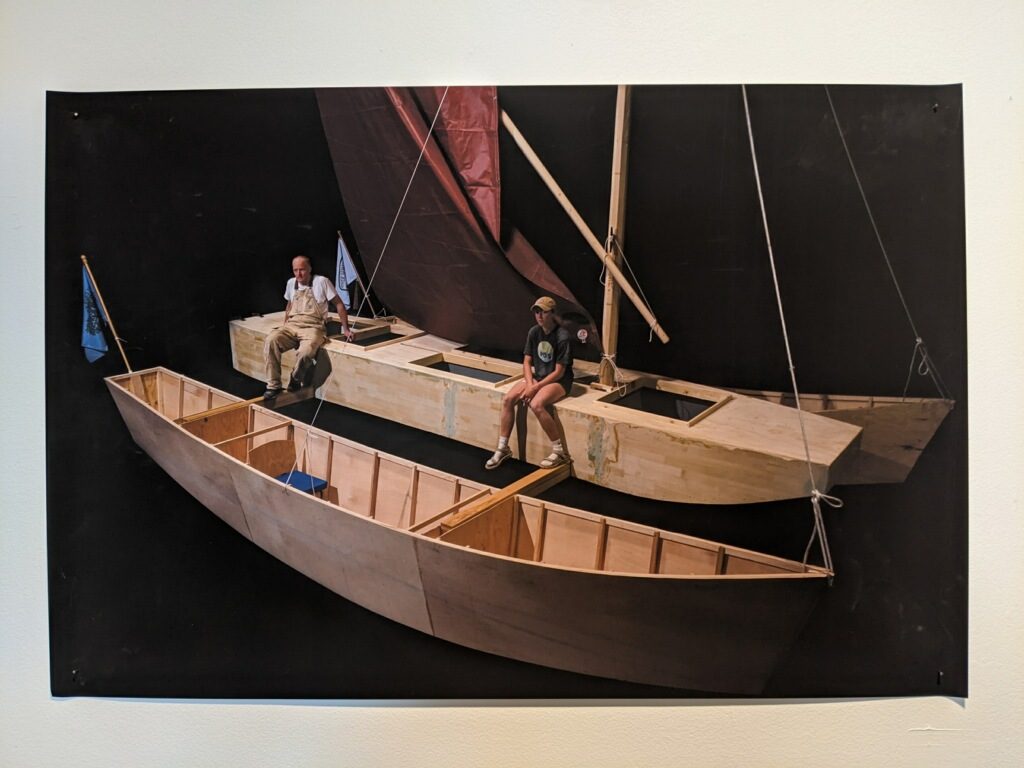
This photo by Claire Pentecost shows Hannah and Joe on the assembled (but unfinished hull parts) in the black box theater. Floating in the void.
July 18
With a little less than seven weeks until the launch of the expedition, we have the first mast glued up, using “birds mouth” joints to make a tapered, hollow octagonal spar (one could say we are starting to see the light at the end of the tunnel!) These are the most complicated part of the boats, but this design makes for a light, strong mast. We will use the same technique for making the two “sprits” that hold up the “peak” (the upper, back corner) of the sail.
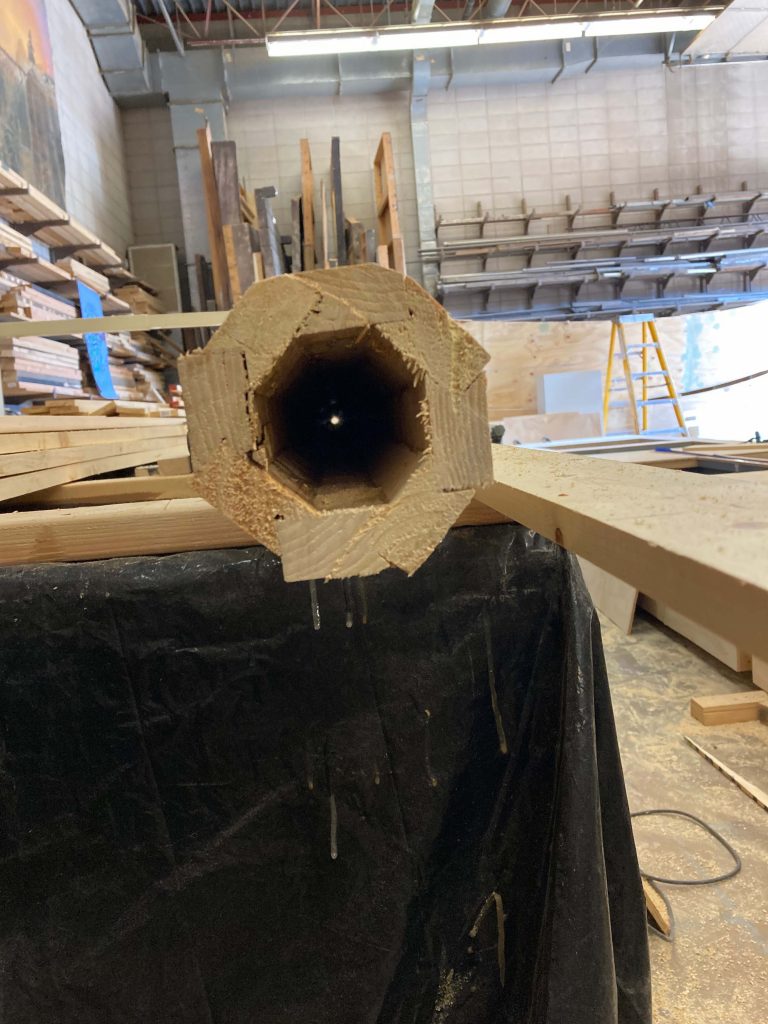
The main pieces of one catamaran: the two hulls, the central cargo hull, and the mast.
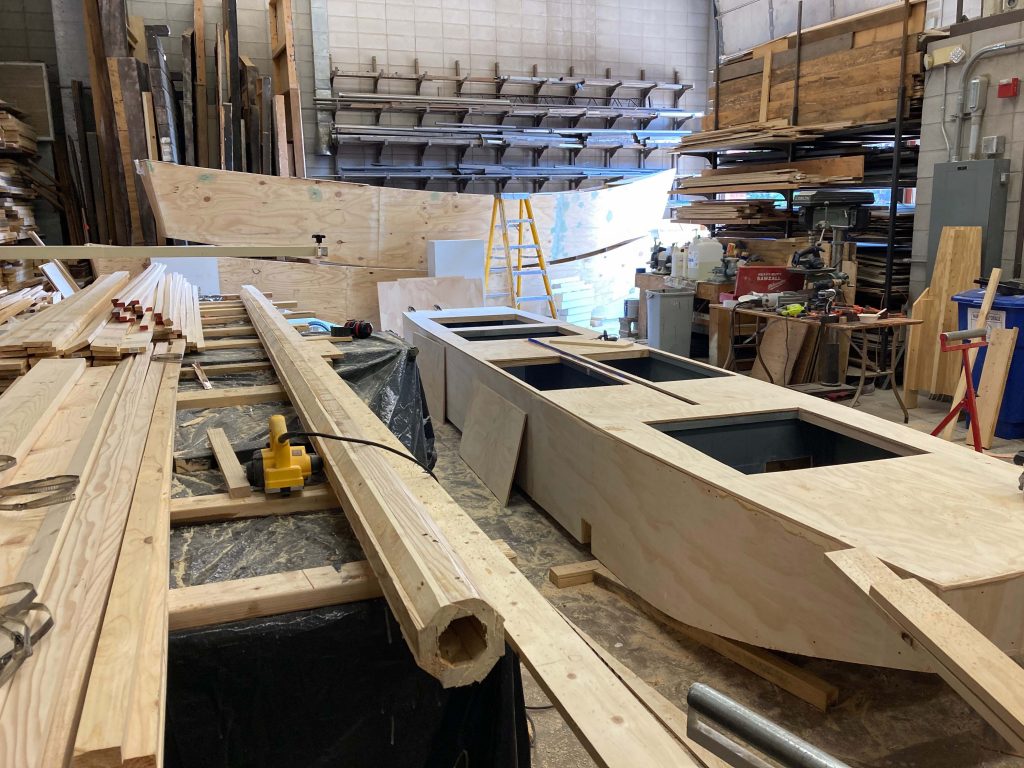
Trying out the mast in place–it just fits in the shop’s 20-foot height.
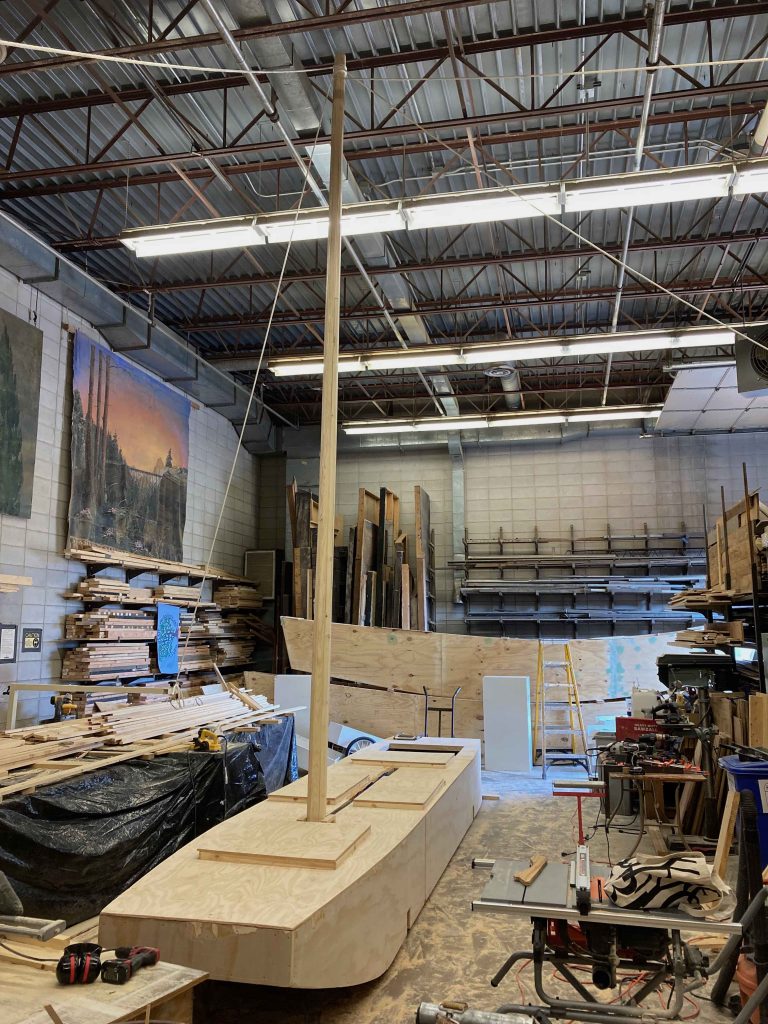
July 9
After a few weeks off for some travel and visiting with family, we are back to work with a certain sense of urgency. We are scheduled to depart in 50 days, so the clock is ticking. As a result, we’re doing more building than blogging these days, but I will try to post more photos as we go. In the past two weeks Hannah and Joe have been busy, and John Kim has stopped by several times to lend a hand, and things are moving along. All four hulls are now planked, and we have disassembled the molds to make space for the next phase, which is building the central cargo hulls. The first of those is now almost complete, and is starting to look good, with plenty of room to carry all the gear and supplies we’ll have with us. It took a little doing to bend the frames and plywood for the bow, but this rig with the pipe clamps did the trick.
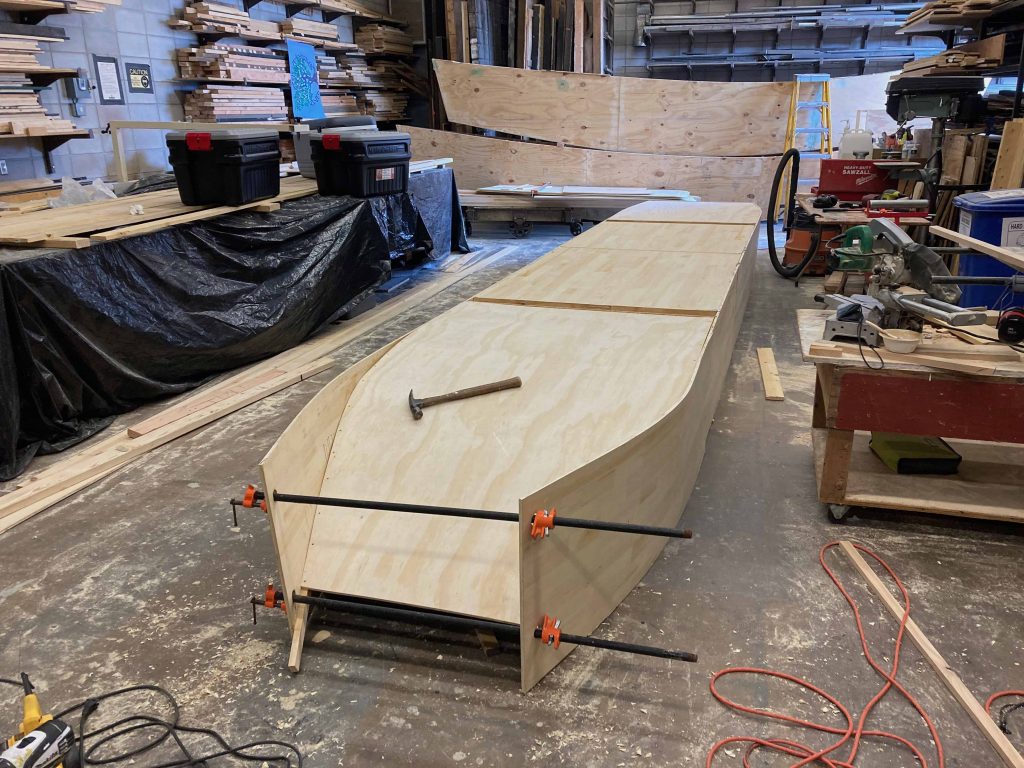
June 10
Another very hot day and we are confined to working inside. Hannah and I finished the second hull and wrangled it off the molds. The hulls are definitely heavy (and sturdy) and are not made for portaging. These are boats, not canoes, meant to stay in the water, where the amazing power of water’s hydrogen bonds will do the heavy lifting for us. With two hulls completed we needed to see what the boats would look and feel like when assembled, so, despite the heat, we wheeled them out into the parking lot and set them up temporarily with the two cross beams. They begin to feel like something substantial. There is a deep and undeniable pleasure in seeing an idea come into being in the material world, and this is certainly part of the motivation for this project.
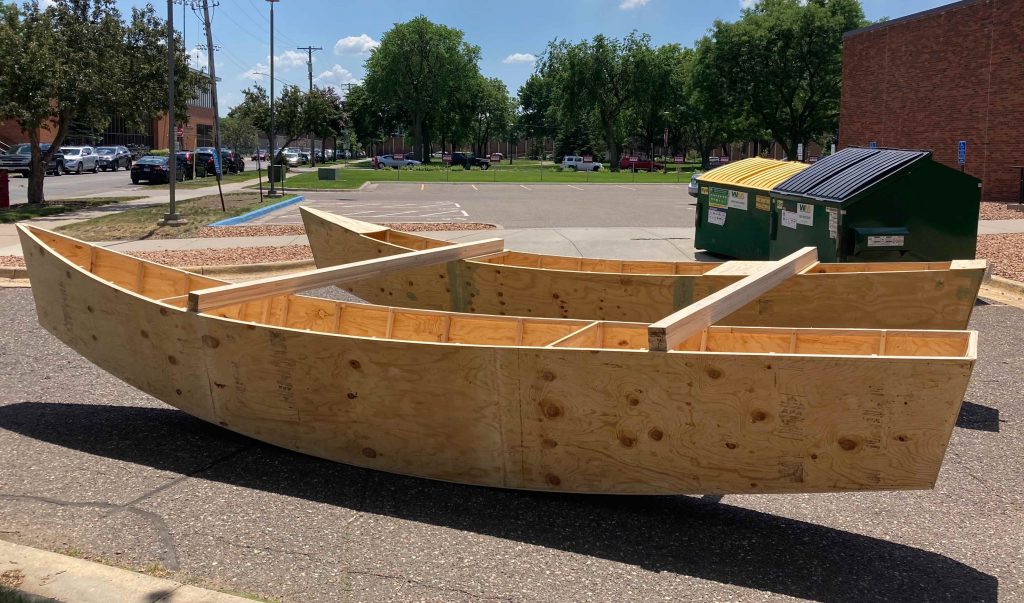
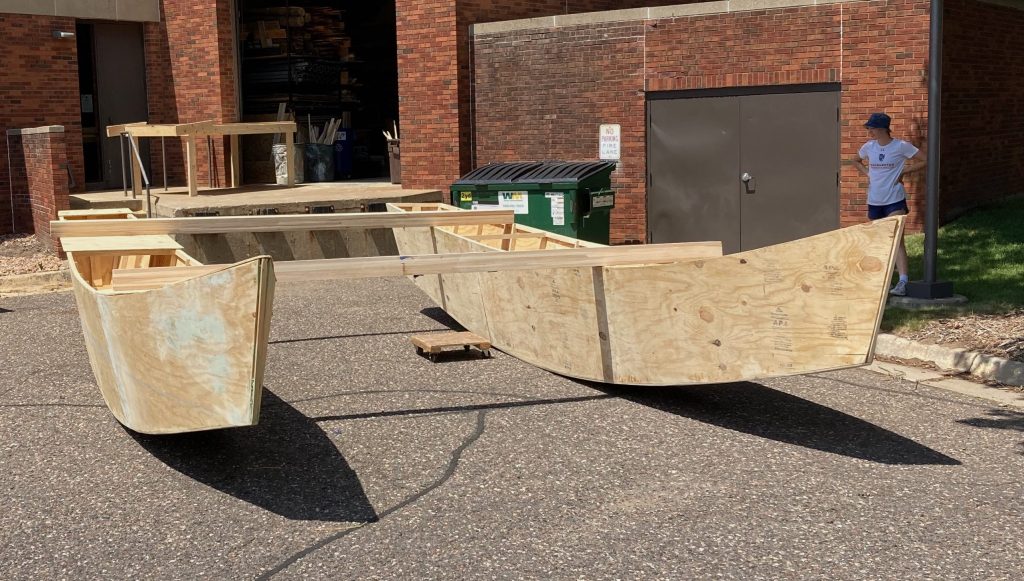
Elias stopped by in the afternoon and helped with the start of the third hull, and then in getting the first two hulls back into the shop and stacked up. The space is filling up with boat parts and it’s getting a bit cramped in the space. There will be a bit of a break now, while I am visit family. Construction will resume on June 28th.
Date: June 8, 2021
Weather: high 90s (heat advisory and air quality alert) We’re in the middle of a heat wave here in Minnesota with some record heat for this time of year (more signs of a changing climate).
Observations, events, encounters: After a two-week break for a little travel and rest, we are back in the shop and making good progress on the second hull. We are getting into the grove with the building, having worked out some of the processes and techniques for making the plywood scarf joints and the frames and stringers. The heat is an issue, and we’re glad to be inside for now.
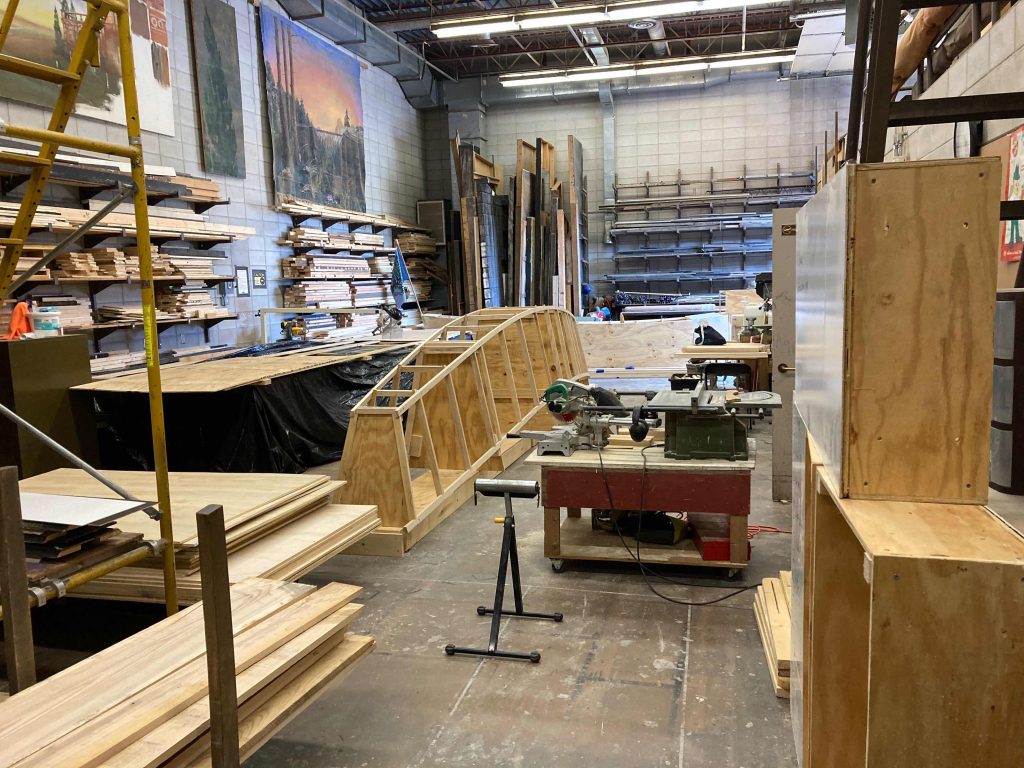
Date: May 18, 2021
Location: Augsburg University (Scene Shop)
Weather: 80 F, clouds and rain moving in from the South with wind at 10-15 knots
Observations, events, encounters: We are now moved in to the Scene Shop at Augsburg and appreciating the space and ability to work indoors. It’s also nice to have folks stopping by. Arlie from our Facilities Department came by to check out the project today and talked about how he used to watch his uncle build skin-on-frame kayaks on the coast of Oregon.
Entered by: Joe Underhill
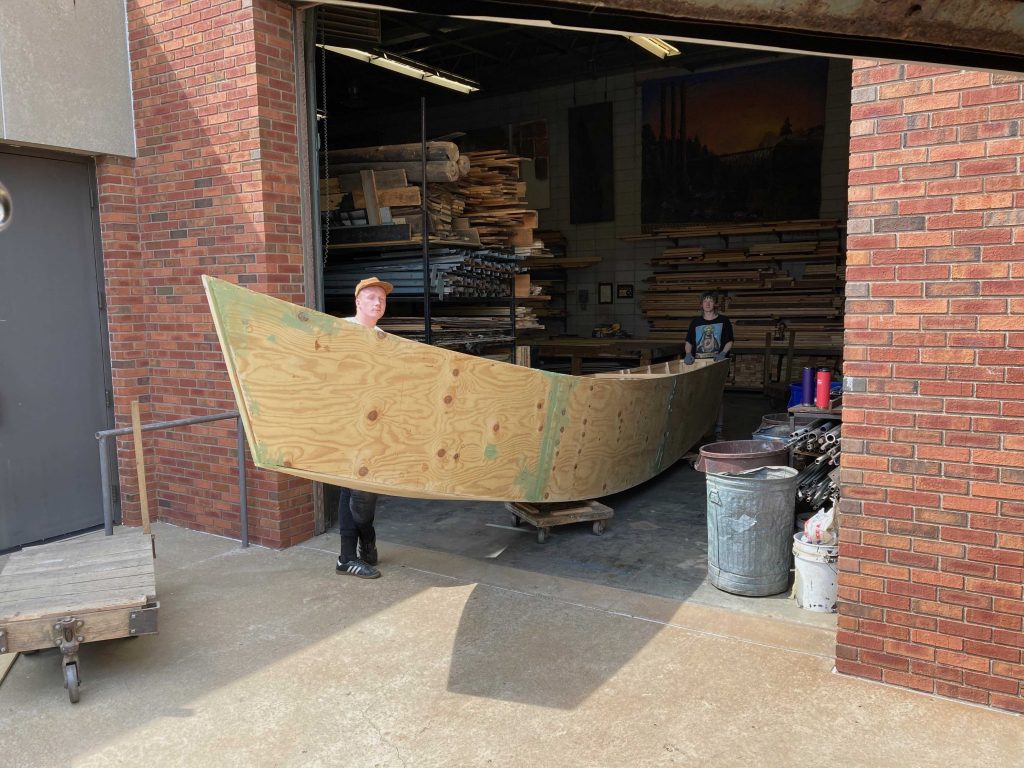
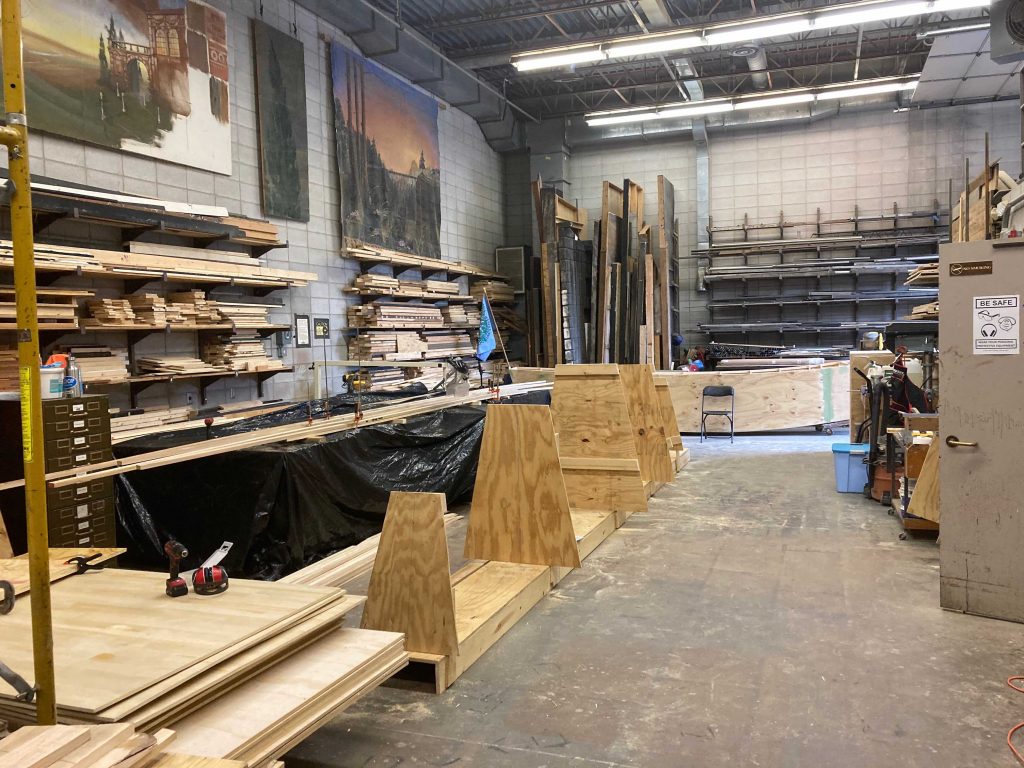
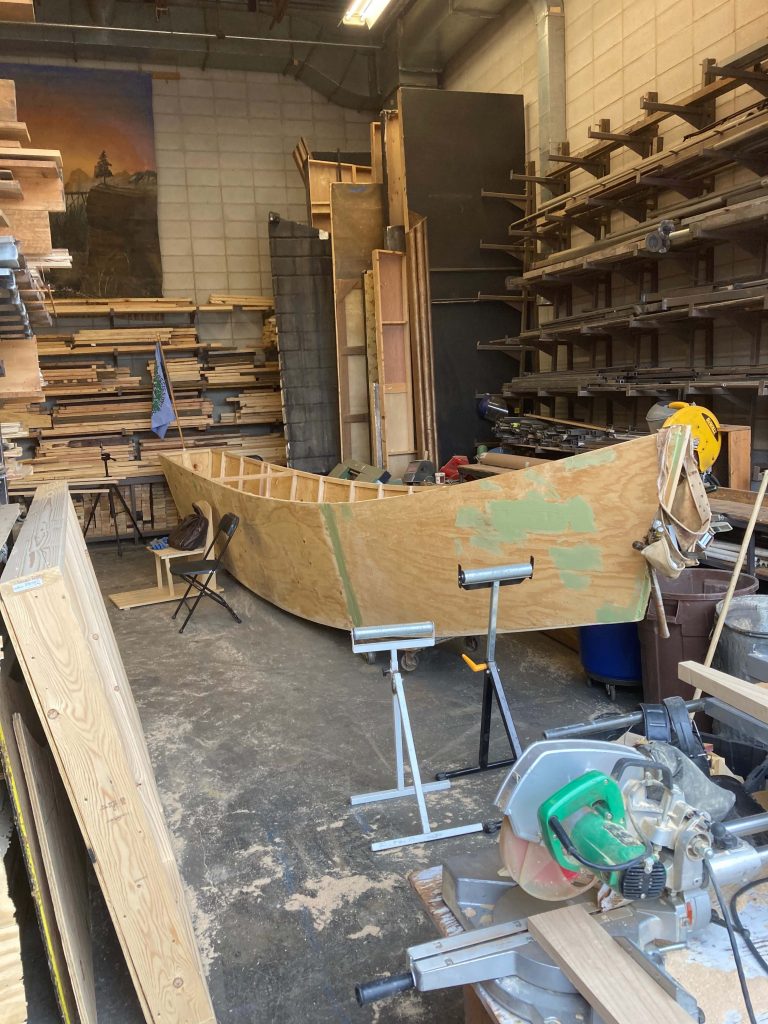
Date: May 15, 2021
Location: Minneapolis
Weather: Sunny, 71 F, North wind at 5 knots
Observations, events, encounters: The first hull is now roughed out. Hannah and I finished the frames yesterday and glued and screwed the three hull panels on. This morning I managed to raise it up off the molds, turn it right side up, and trim the sheer. The hull has a nice shape, I think, with lots of rocker (curve) and plenty of volume, so it will have plenty of buoyancy to support all the weight of our gear and supplies.
Entered by: Joe Underhill
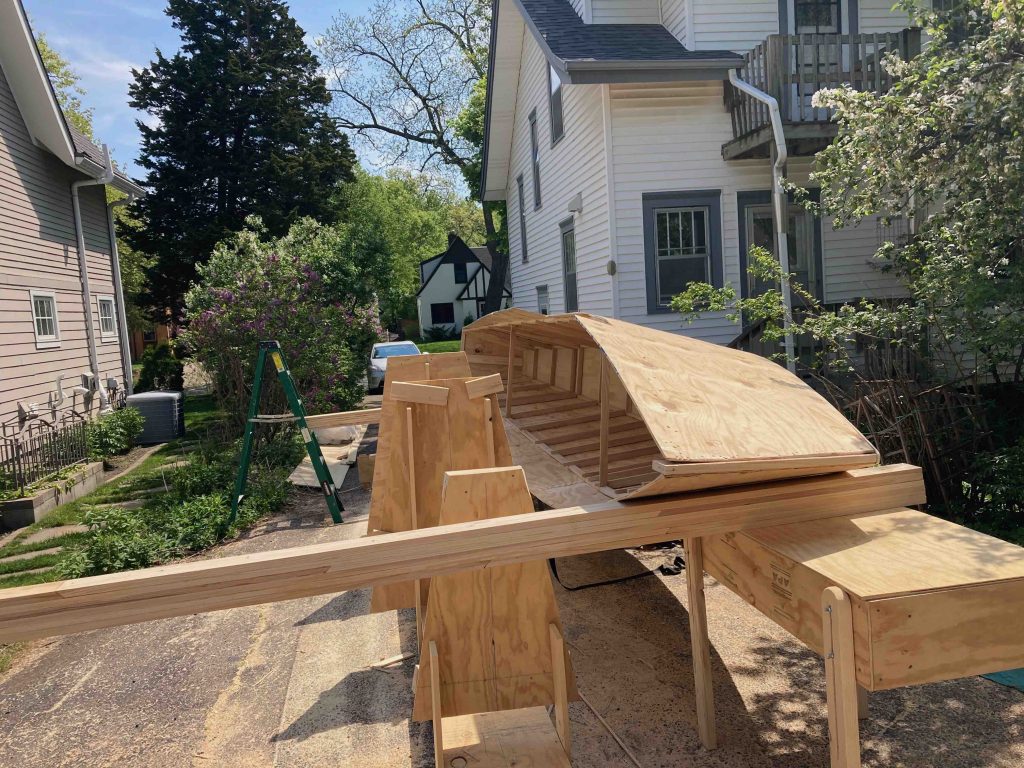 First hull with panels on, being removed from the molds.
First hull with panels on, being removed from the molds.
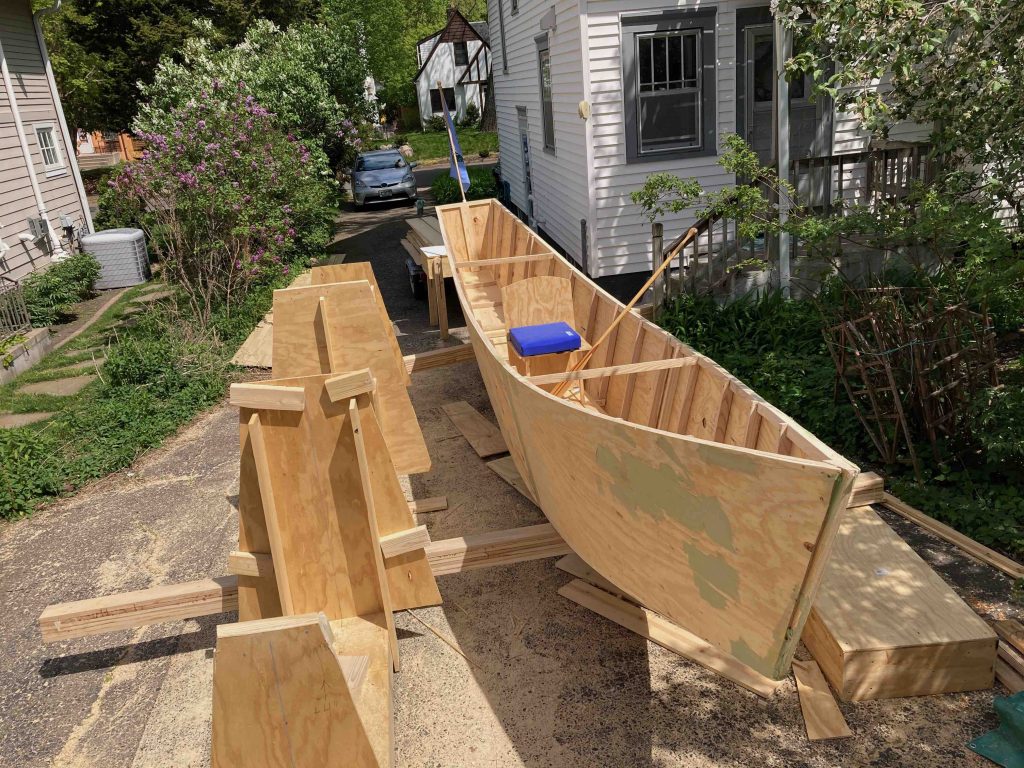 Seeing what the seats look like in the hull, and putting on a bit of the “fairing compound” to smooth out the rough spots in the plywood.
Seeing what the seats look like in the hull, and putting on a bit of the “fairing compound” to smooth out the rough spots in the plywood.
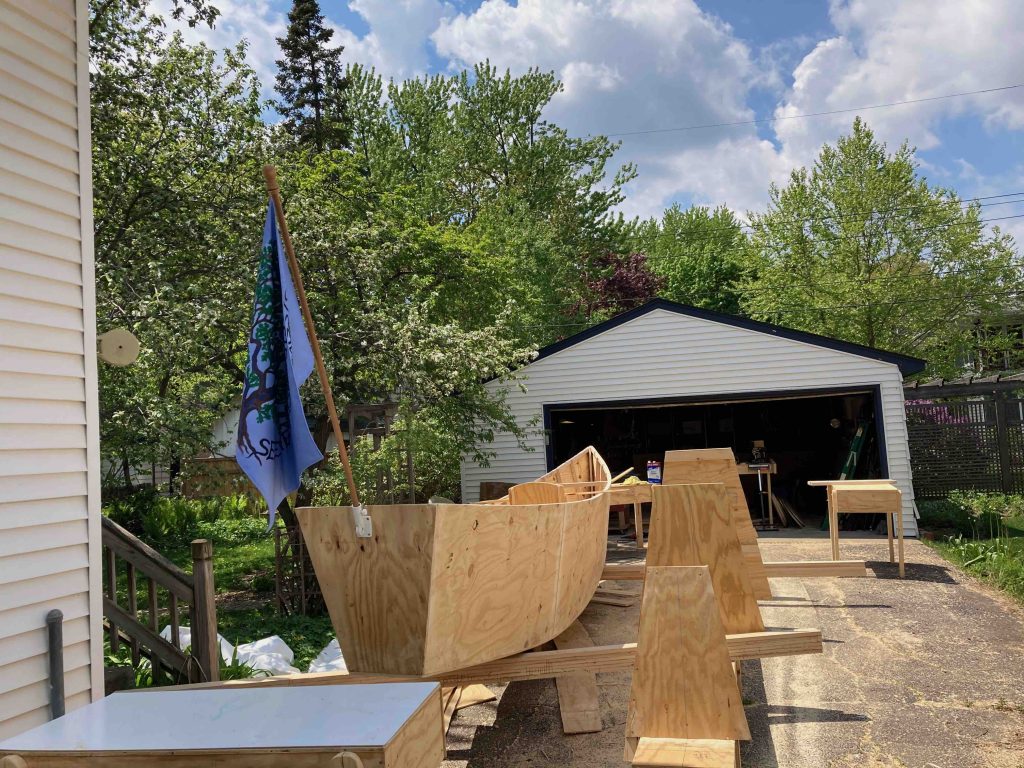
Date: May 9, 2021
Location: Minneapolis
Weather: Sunny, continued cool
Observations, events, encounters: I’m working on making the stringers, which entails scarfing (joining) together several lengths to create the 24-foot long pieces. The cool weather is making the gluing & epoxying difficult, but we’re getting the system worked out. I’m getting to know the wood, and the glue, and the form of the boat. It takes some trial and error each time, and getting back into “carpentry mode.” It is getting crowded in the garage & driveway, so it will be good to be moving into the Scene shop this coming weekend (and nice to be able to store stuff inside).
Entered by: Joe Underhill
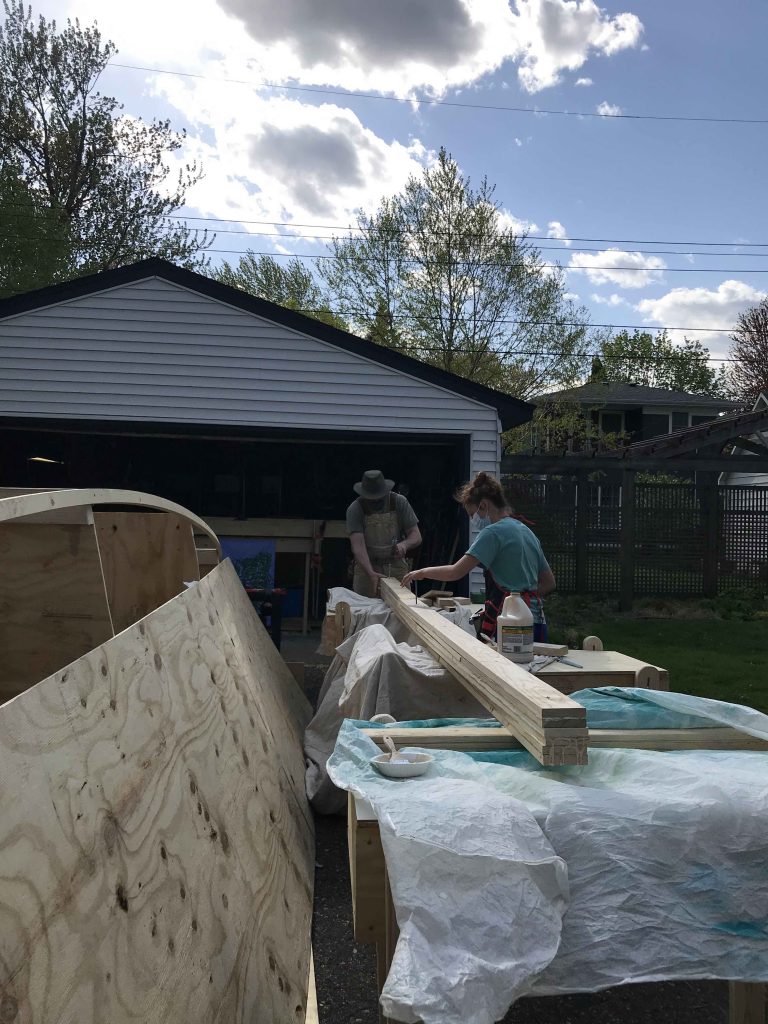
Date: May 6, 2021
Location: South Minneapolis, near Minnehaha Creek
Weather: still cool but bright sun and a nice breeze from the NW.
Observations, events, encounters: The ash lumber and more plywood was delivered on the 5th, and we have begun milling that up for the cross beams, hull stringers, frames, mast, and sprits. It is nice wood–one of the strongest native hardwoods, but also heavy! The 500 board feet of it weights close to a ton. Hannah Conner (the intern from Macalester College) worked today and we got the first of the cross beams glued up. It is quite a process to get the 6 layers of ash all glued up, but we got it clamped and trued up and will be very strong.
Entered by: Joe Underhill
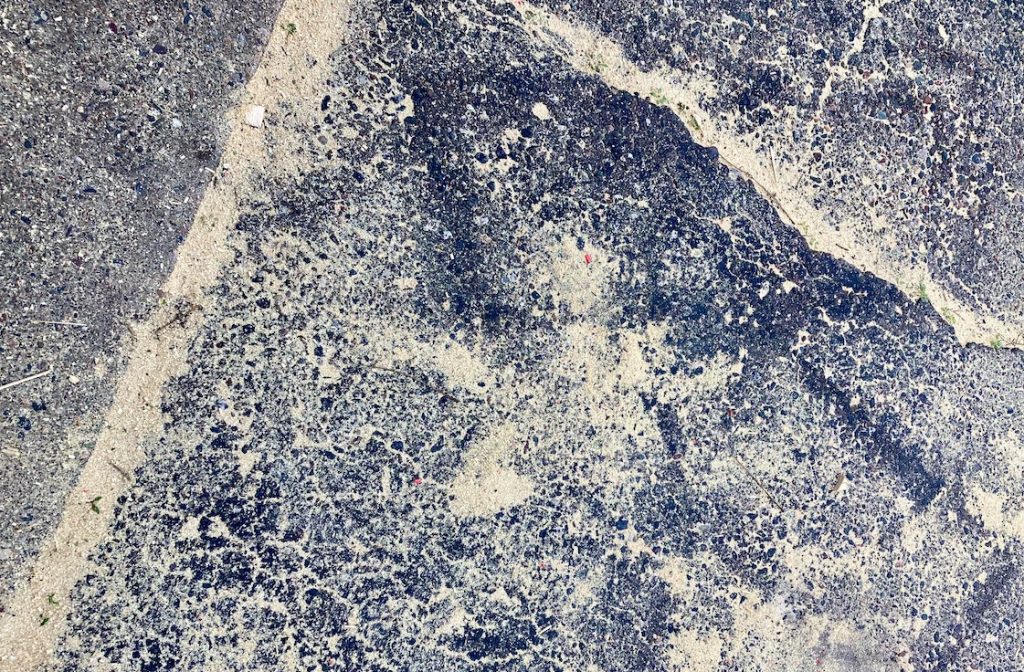
Date: May 4, 2021
Location: Minneapolis
Weather: Clear skies, 50s, north wind.
Observations, events, encounters: Trees are mostly leafed out, the fruit trees are in full bloom, but there is risk of frost this evening. Robins are nesting, cardinals are singing, and along the river the pelicans are heading north. The Water Strider molds and forms are taking shape in my driveway. It’s nice to work on creating a nice looking hull, that will hold four paddlers comfortably, stand up to some heavy use on the river, and carry somewhere between 3,000 and 4,000 pounds (for each catamaran). Today the aim is to work on “fairing” the hull’s lines, meaning that we want nice, clean lines at the sheer (the top edge of the hull) and along the bilge (bottom) chine (corner). The new flags for the River Semester arrived today–two of the new images of the Mississippi watershed as the tree of life, one of the original River Semester “badge” and one Augsburg University. I like the new logo as a symbol that is intrinsically about this natural space, and which recognizes the archetypal significance of these fractal, branching forms (the tree and the watershed).
Days until Sept. 3 launch: 122
Entered by: Joe Underhill
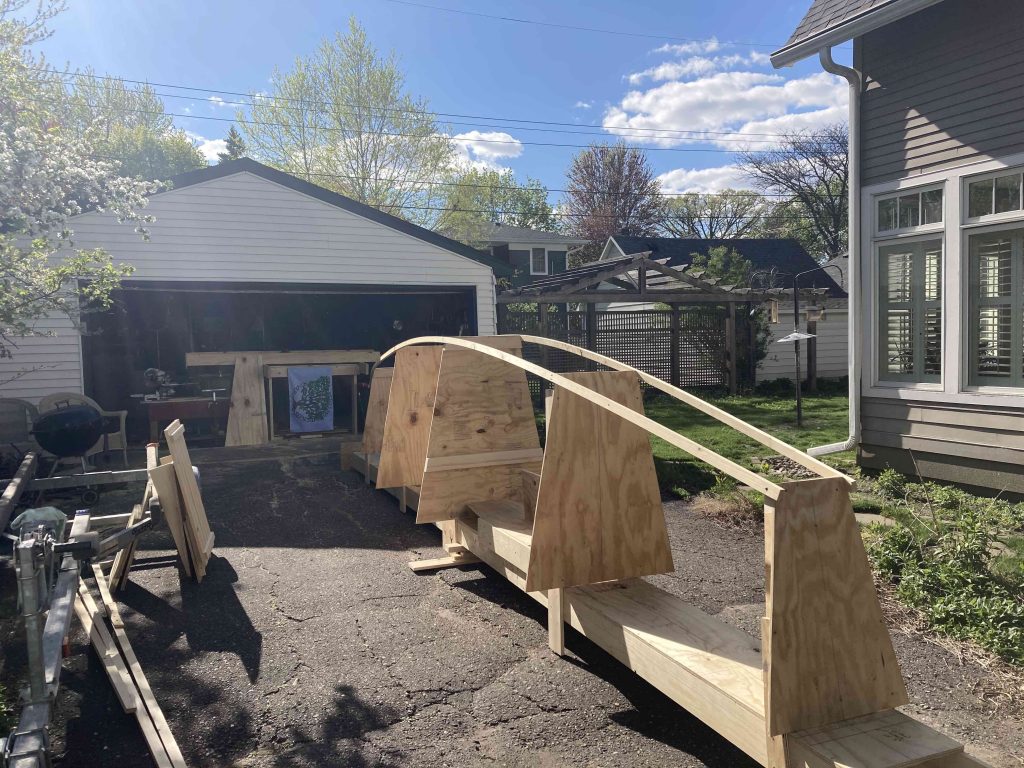
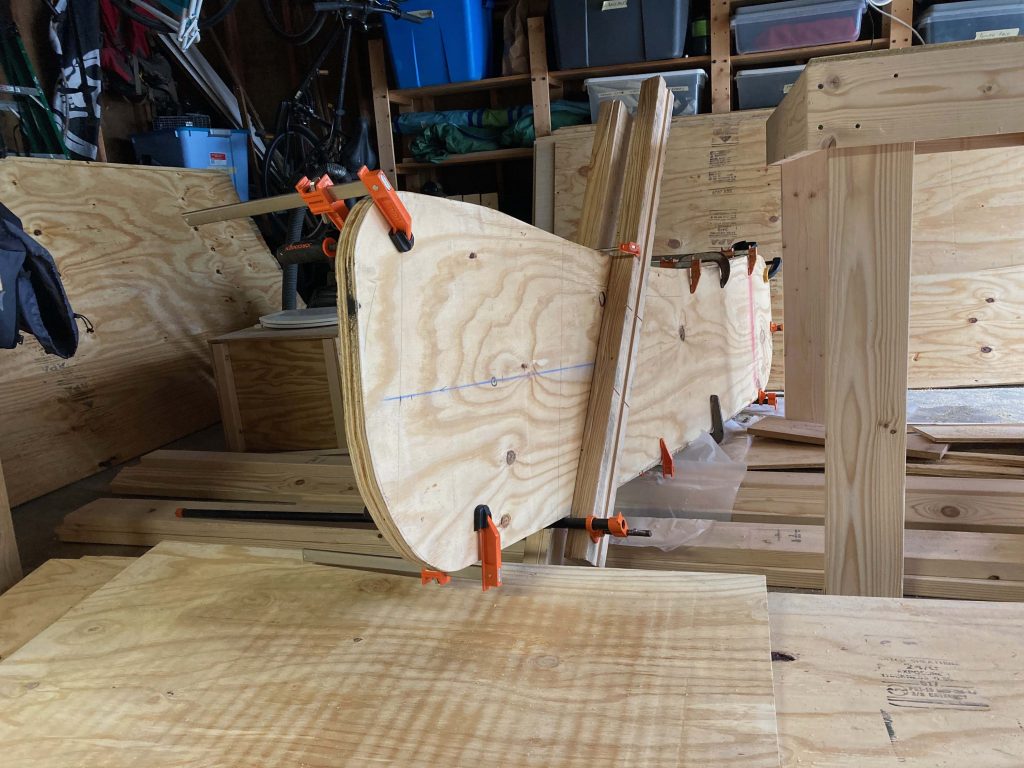

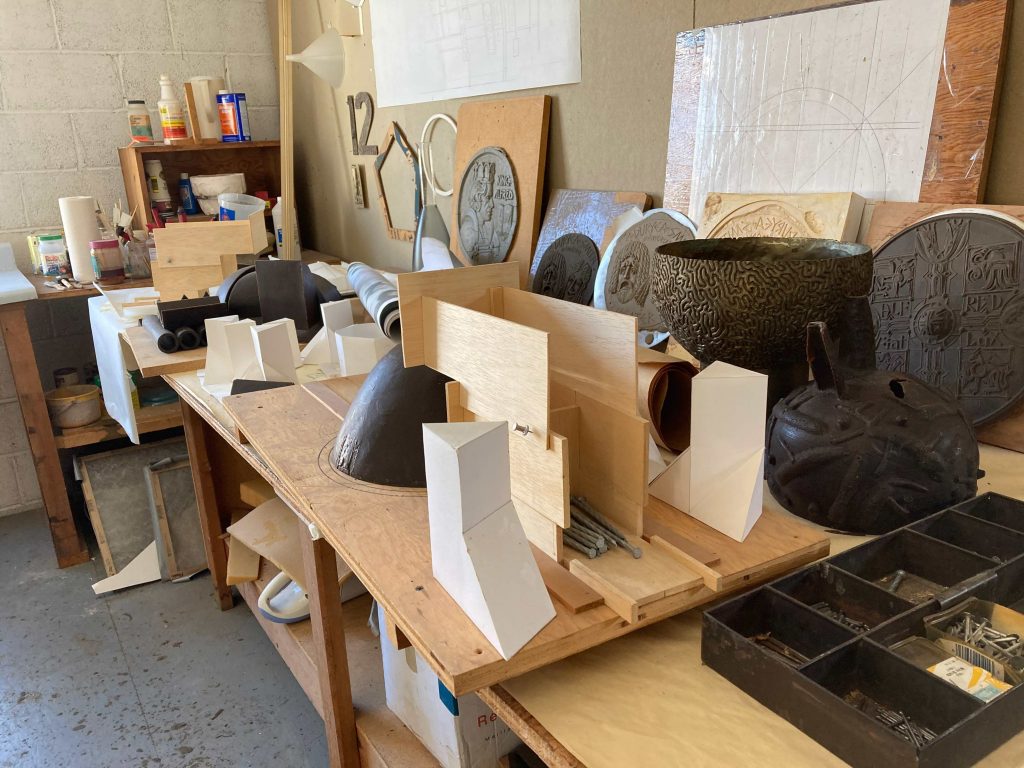
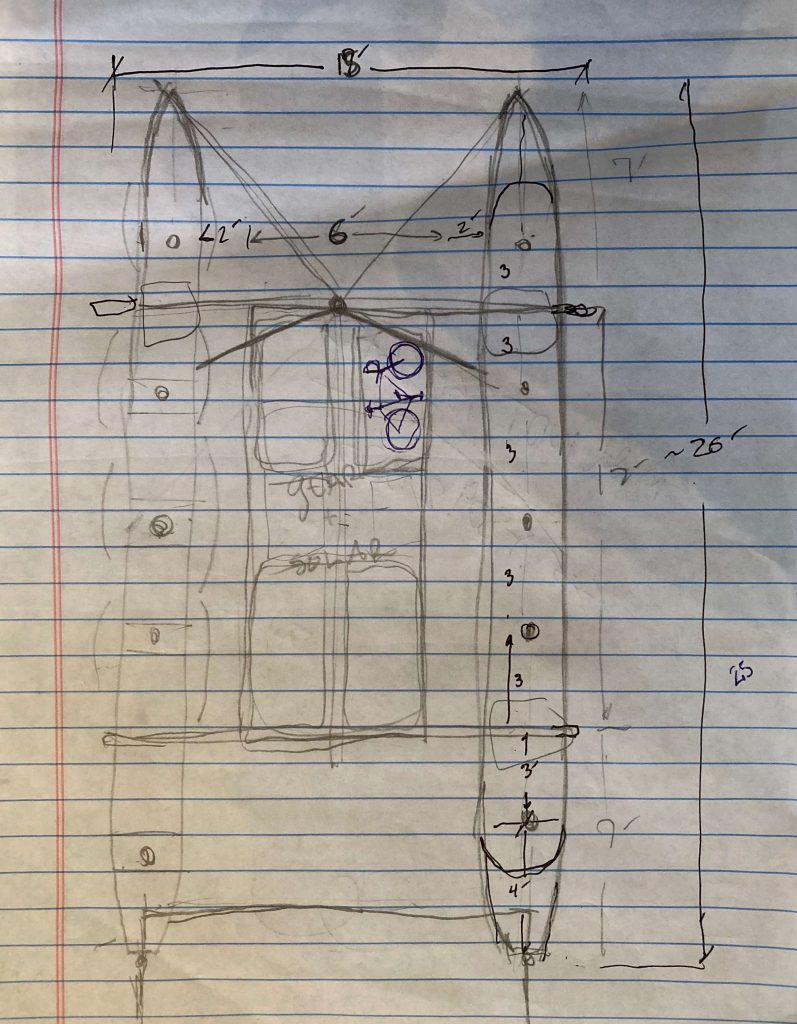
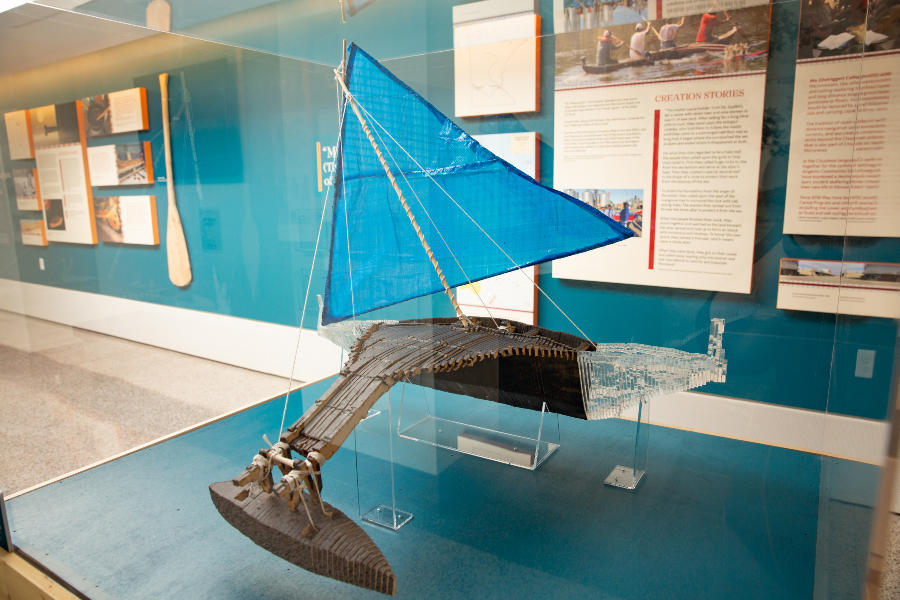 Model of a Micronesian Wa outrigger sailing canoe, part of the “Why Canoes?” exhibit at the University of Minnesota. https://twin-cities.umn.edu/news-events/why-canoes-exhibit-opens-northrop-gallery
Model of a Micronesian Wa outrigger sailing canoe, part of the “Why Canoes?” exhibit at the University of Minnesota. https://twin-cities.umn.edu/news-events/why-canoes-exhibit-opens-northrop-gallery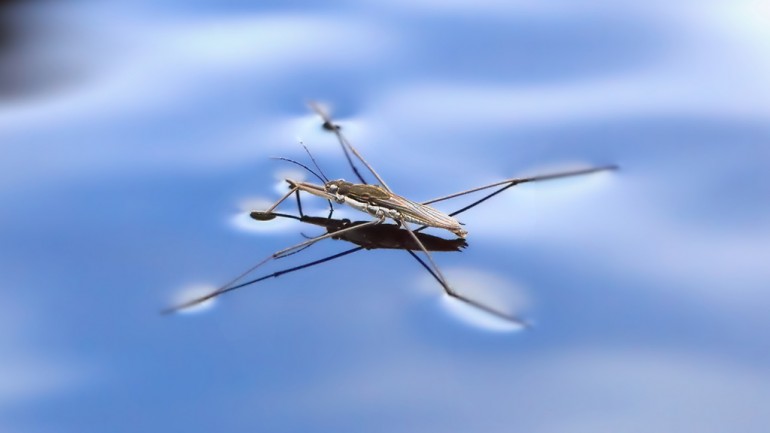
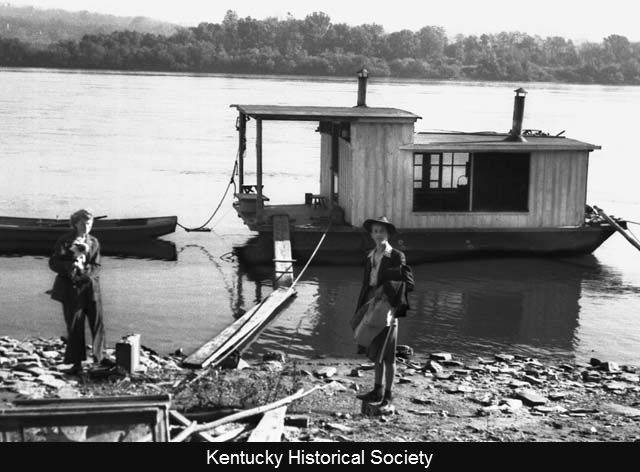
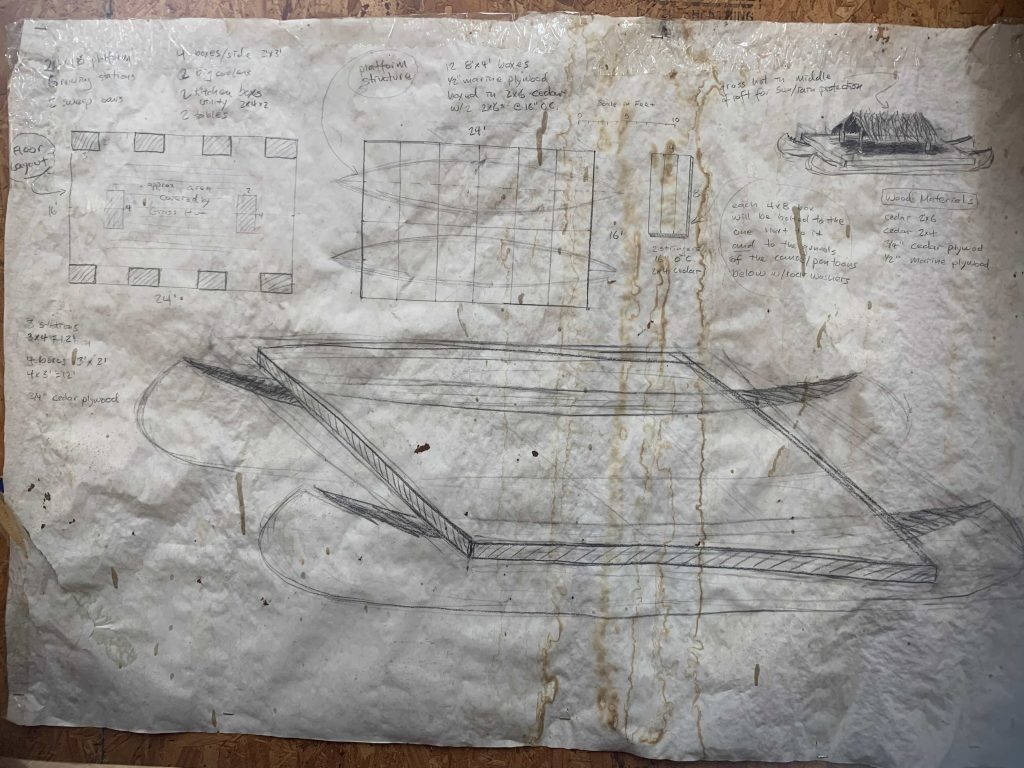
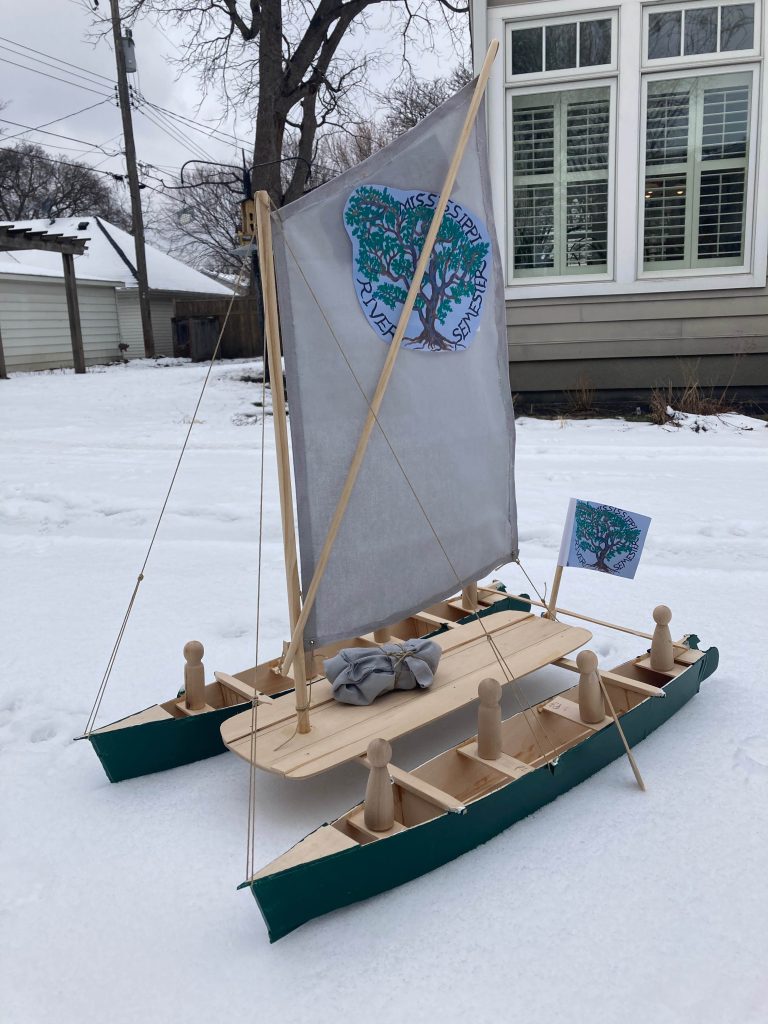
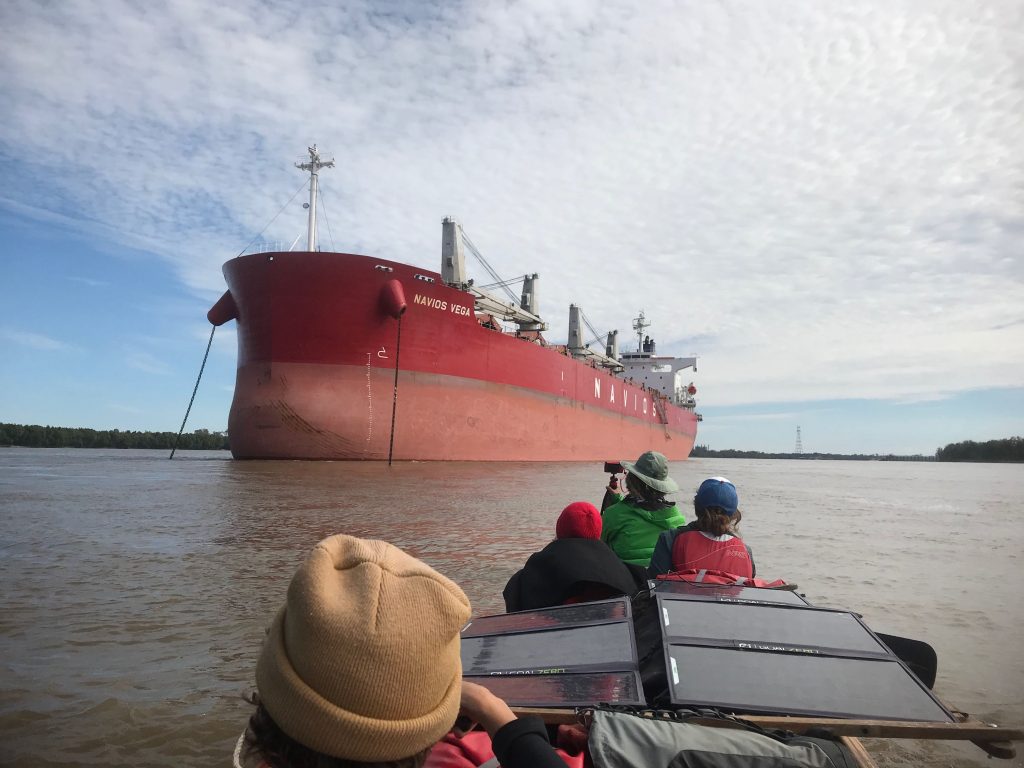 The view from the canoe on the Fall 2019 river journey (Photo by the author).
The view from the canoe on the Fall 2019 river journey (Photo by the author).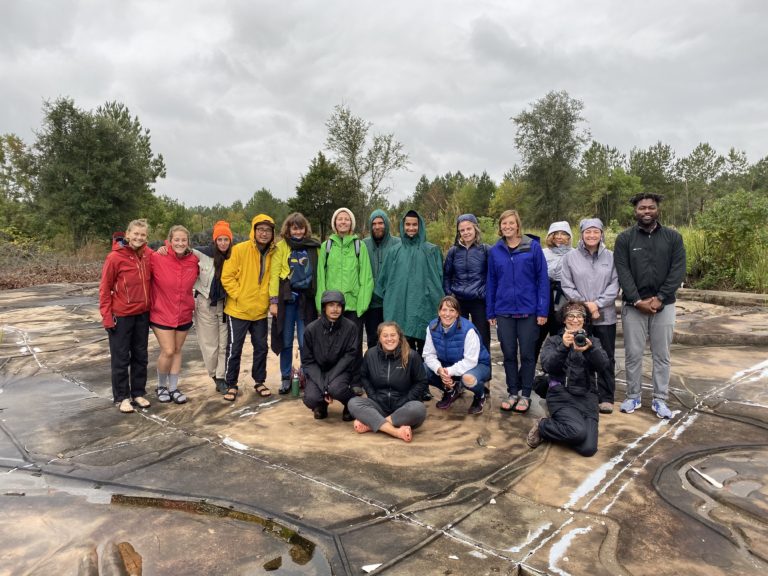 “Rainbow tour of the Mississippi River Basin Model Waterways Experiment Station, located near Clinton, Mississippi, was a large-scale hydraulic model of the lower Mississippi River basin, covering an area of 200 acres. The model was built from 1943 to 1966 and in operation from 1949 until 1973. Construction crew included WWII prisoners of war from Rommel’s Afrika Korps. Photo by Carlina Rossée.” (John Kim
“Rainbow tour of the Mississippi River Basin Model Waterways Experiment Station, located near Clinton, Mississippi, was a large-scale hydraulic model of the lower Mississippi River basin, covering an area of 200 acres. The model was built from 1943 to 1966 and in operation from 1949 until 1973. Construction crew included WWII prisoners of war from Rommel’s Afrika Korps. Photo by Carlina Rossée.” (John Kim 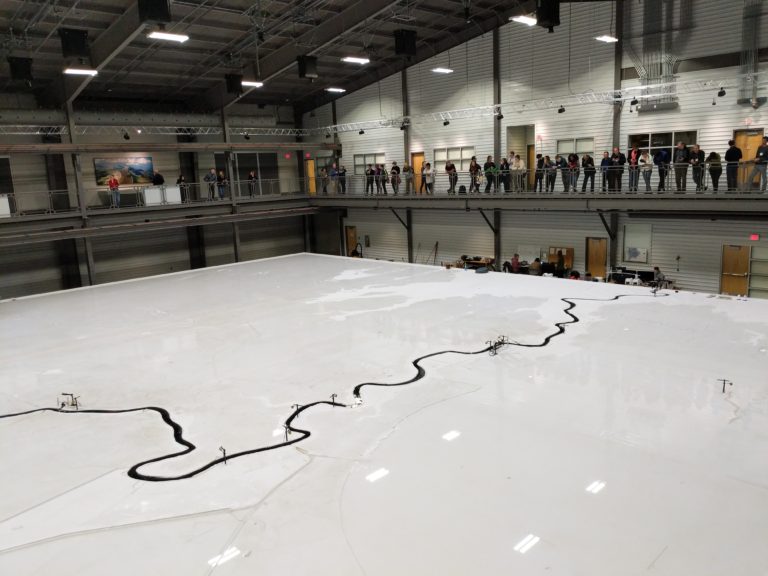 The Human Delta as tabula rasa (Amalia
The Human Delta as tabula rasa (Amalia 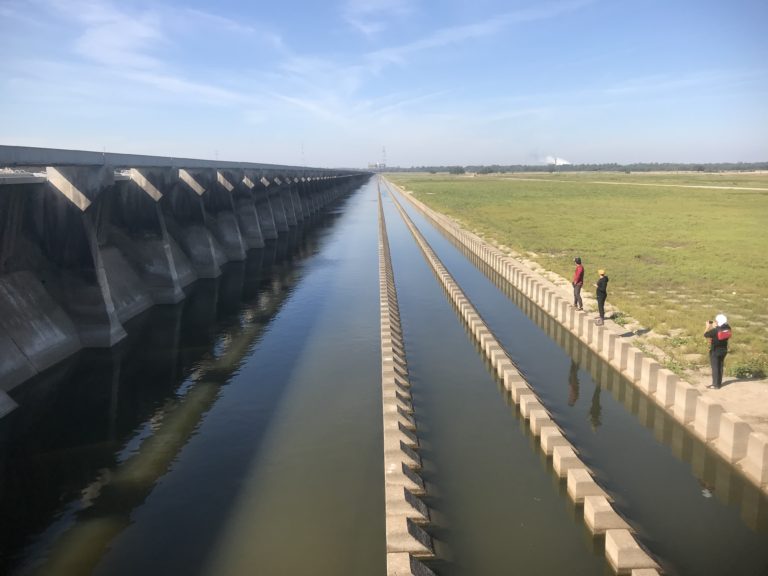 Bonnet Carré spillway; an acknowledgement of the need to give the Mississippi some breathing room, but always on terms dictated by New Orleans and local Petrochemical interests. (Joe Underhill
Bonnet Carré spillway; an acknowledgement of the need to give the Mississippi some breathing room, but always on terms dictated by New Orleans and local Petrochemical interests. (Joe Underhill 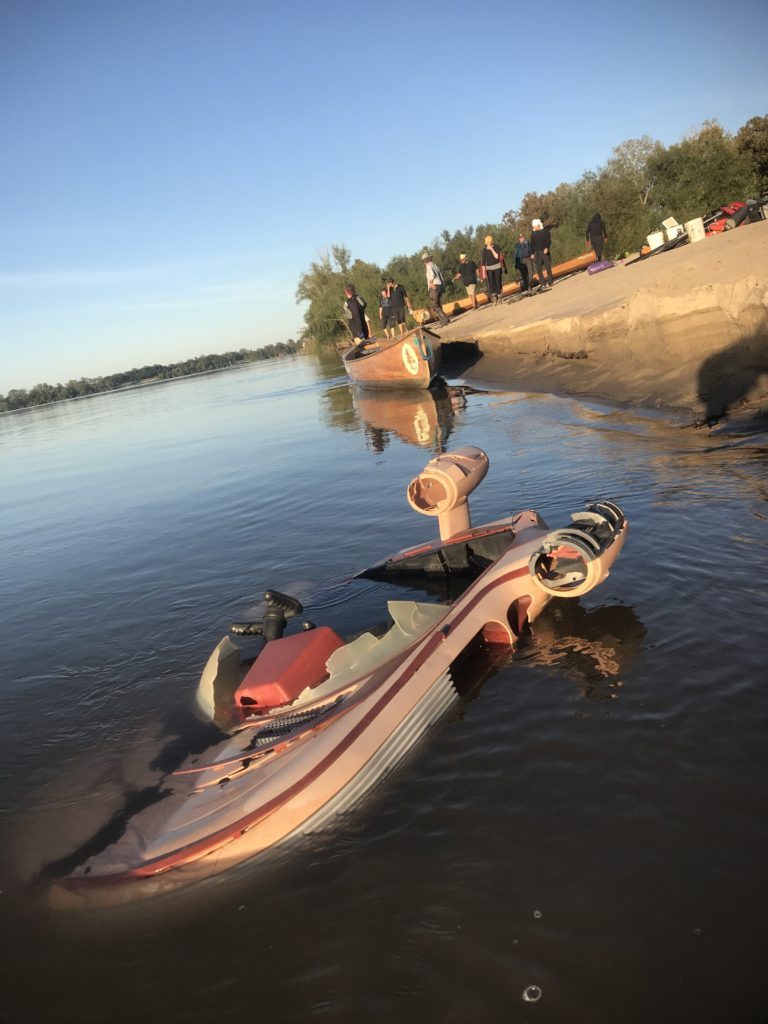 The “wreck of the Anthropocene future.” A toy Landspeeder washed up on a beach on the Lower Mississippi (Joe Underhill
The “wreck of the Anthropocene future.” A toy Landspeeder washed up on a beach on the Lower Mississippi (Joe Underhill 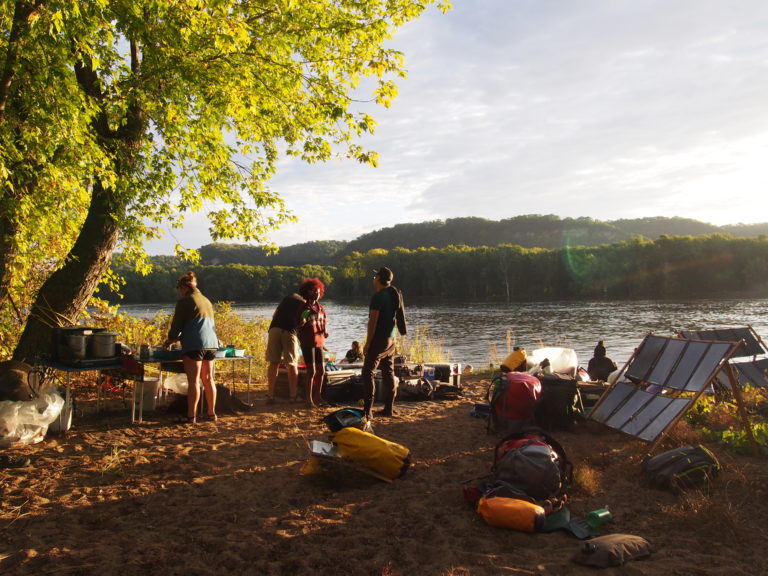 Camp site on an island in the Mississippi River near La Crosse, Wisconsin in 2019. A way of living with enough comfort while being connected and immersed in the world. (Christoph Rosol
Camp site on an island in the Mississippi River near La Crosse, Wisconsin in 2019. A way of living with enough comfort while being connected and immersed in the world. (Christoph Rosol 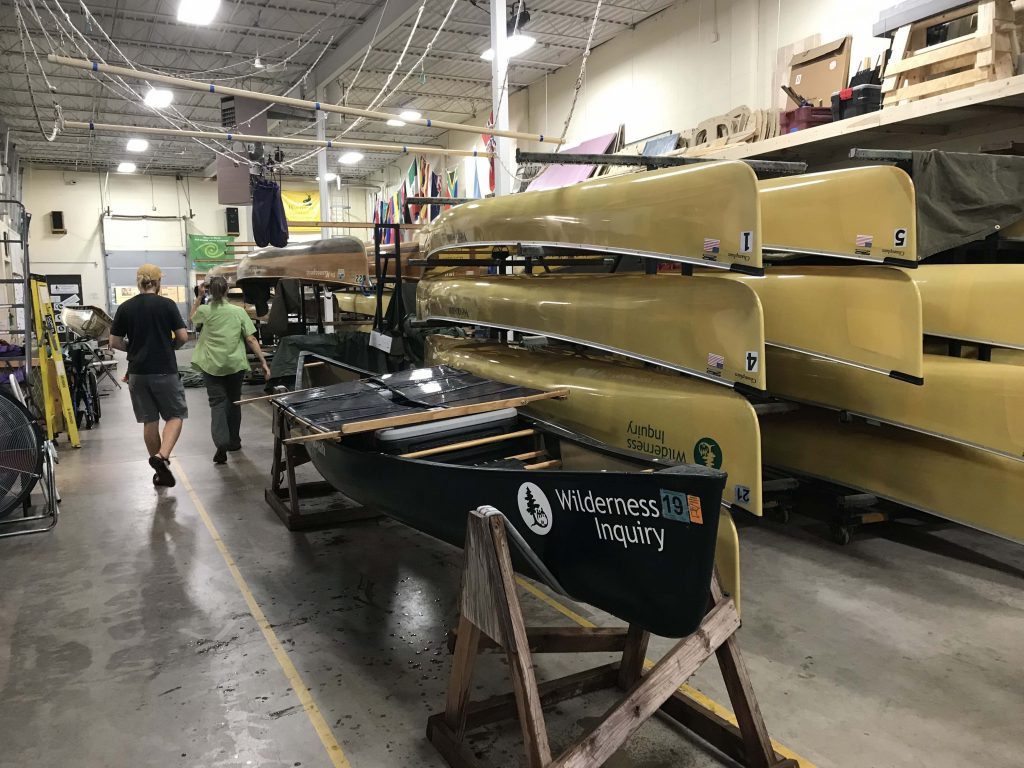 We are at the headquarters of Wilderness Inquiry, an outfitter that
We are at the headquarters of Wilderness Inquiry, an outfitter that 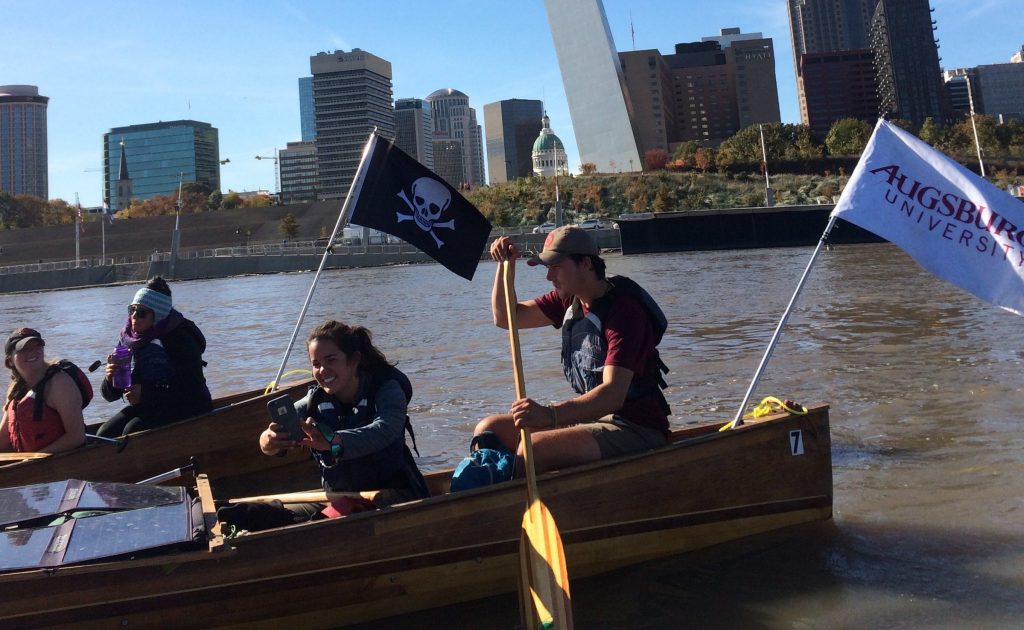
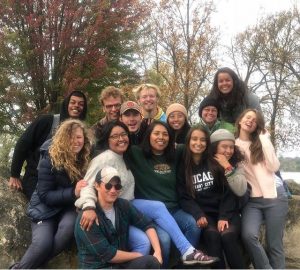
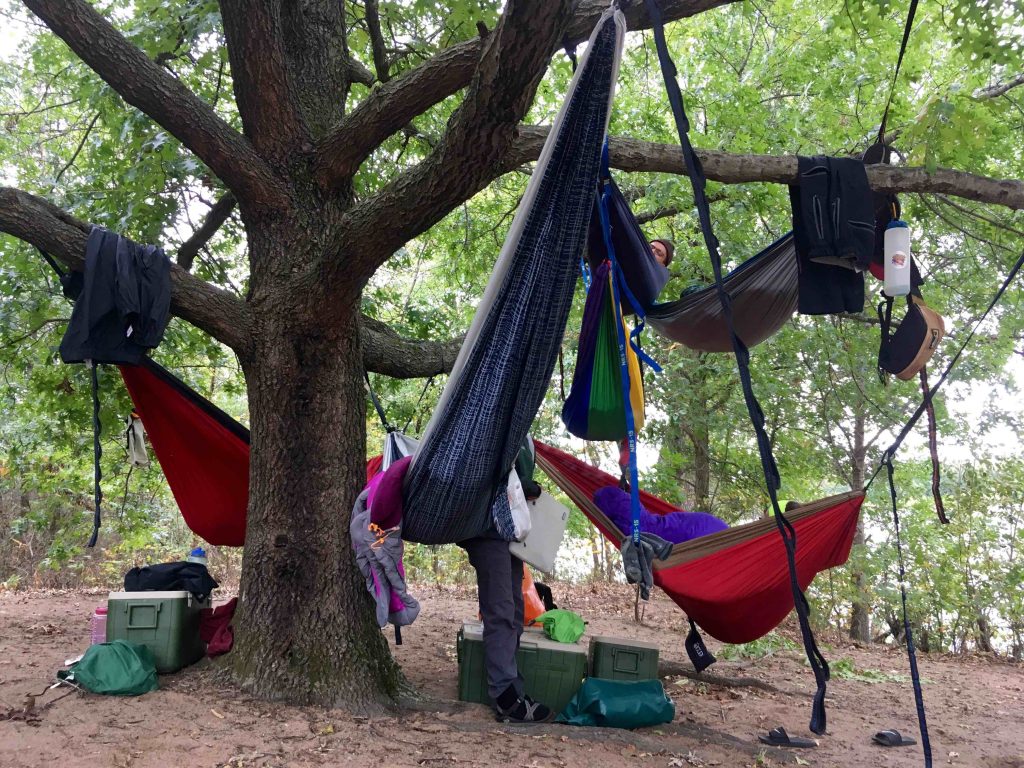 The River Semester curriculum draws on critical, democratic, and place-based pedagogy, which allowed students significant input into the structure of the program. Much of the learning on the trip takes place outside of formal class activities and in addition to their coursework, the students in the program engaged in a wide range of activities, including:
The River Semester curriculum draws on critical, democratic, and place-based pedagogy, which allowed students significant input into the structure of the program. Much of the learning on the trip takes place outside of formal class activities and in addition to their coursework, the students in the program engaged in a wide range of activities, including: